Aug 2012
Home
31/08/12 04:53
I’ve been looking at the pictures of flooding in Louisiana and Mississippi in the wake of Hurricane Isaac. They remind me, and a lot of other people, of the scenes from New Orleans in the wake of Katrina. The fact that the storm landed on the seventh anniversary of Katrina’s devastation made it simple to make comparisons. We watch the videos of people being rescued with boats, of the National Guard evacuating people in the back of trucks, of lines at stores and folks wading through the water and we remember. The memories are not particularly pleasant.
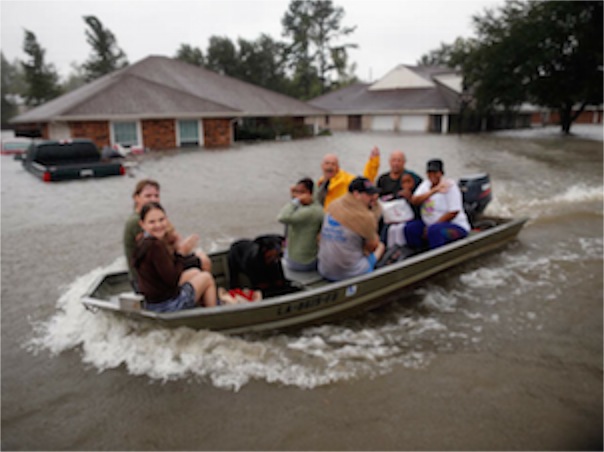 How much more dramatic it must be for the people who live in the area. Frank Williams and his wife Cynthia Thibodeaux moved away from New Orleans after they lost their home to Katrina. Now they wonder what is next as they watched their new home sitting in at least three and a half feet of water. The community of LaPlace, 25 miles from New Orleans, was worse hit by Isaac than the city itself.
How much more dramatic it must be for the people who live in the area. Frank Williams and his wife Cynthia Thibodeaux moved away from New Orleans after they lost their home to Katrina. Now they wonder what is next as they watched their new home sitting in at least three and a half feet of water. The community of LaPlace, 25 miles from New Orleans, was worse hit by Isaac than the city itself.
Patrick and Detria Hutchinson moved from the Upper Ninth Ward when their house was destroyed by Katrina. They moved sixty miles to the opposite end of Lake Ponchartrain. Yesterday they faced the crisis of a destroyed home once again.
Once again we who live in different places are watching the images on our computers aware that there is little we can do except to contribute to the recovery efforts.
And my attention is divided because as devastating as too much water is, not enough water can be a crisis too. Portions of my home state that are very familiar to me are burning up with resources running short and several fires being left to burn themselves out as firefighters struggle to save at least some of the home. Reports of injuries and losses of homes continue to arrive. The temperatures are very high. The winds are very erratic. The risk is very real.
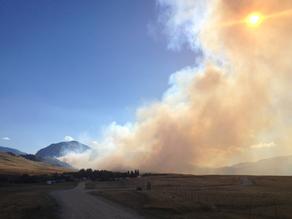 On Tuesday evening, we paused at a hilltop to watch the Rosebud Fire burning near Roscoe. The fire is now listed at 20% containment, but there are at least 20 homes that are threatened.
On Tuesday evening, we paused at a hilltop to watch the Rosebud Fire burning near Roscoe. The fire is now listed at 20% containment, but there are at least 20 homes that are threatened.
A little to the west in the Yellowstone Valley in a region we call Paradise Valley, the Pine Creek fire is threatening the homes of about 200 people. No one knows for sure how many houses have been burned. It took less than a day for the fire to grow to 8 square miles.
There are fires burning and threatening homes south of Bozeman, Butte and Missoula. The 19-mile fire, south of Butte covers 4 square miles and has already burned at least 9 structures. One homeowner was evacuated by ambulance after suffering burns trying to save his house.
It is the last day of August. Theoretically cooler weather will soon be on its way, but those of us who have watched the fires across the west for years know that September can be a long month and the snows that usually come in October can be delayed until December some years.
I have friends and cousins who worked hard in their careers and saved carefully for the day when they could purchase a place in the mountains, surrounded by trees. Although I don’t know any one who is personally threatened by the current fires, I know lots of people whose homes are vulnerable to the fires. Those evacuees with the worried looks on their faces could be my friends. There were days when I used to dream of a place on the Upper Rosebud as a perfect place to retire. The fires are threatening some very beautiful places.
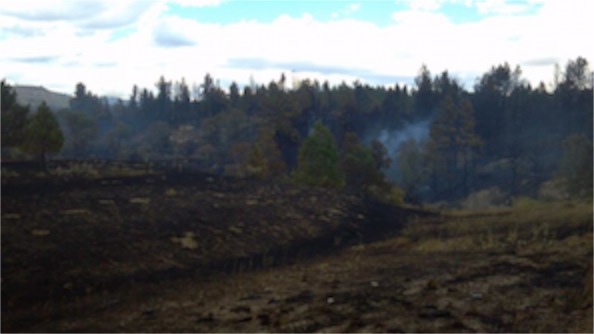 Facing the loss of your home is devastating whether the threat is fire or flood.
Facing the loss of your home is devastating whether the threat is fire or flood.
It is all theoretical for me. I have never experienced the loss of my home. I do, however, have a vocation that is often associated with impermanence. Ministers usually move fairly frequently. We agree to go where we are called. My home congregation used to see a new minister every four years or so. Compared to many ministers, we have not moved very often in our careers. We have experienced stable relationships with congregations. Even so, our time of service in any congregation is just a small slice of the story of that church.
Permanence is only an illusion in this life. We think that we can hold on to our homes and our possessions, but we are at best stewards of our property for short amounts of time. If my count is right, I have lived in 15 different houses or apartments in my life. Although the one that is currently my home has been my home for more time than any other, it is quite unlikely that it is my last. My mother considered herself to be a life-long citizen of Montana. But she lived in Oregon and South Dakota for the last years of her life.
We have homes for a little while. Our lives span only a small portion of the larger reality that is human history. I think it was Emily Dickinson who wrote something like: “All historically important people have one thing in common: they are dead.”
The illusion of permanence is only an illusion. We are in this place for a little while only. The Psalmist put it this way: “The years of our life are seventy, or even by reason of strength eighty; yet their span is toil and trouble; they are soon are gone, and we fly away.”
It is that same Psalm that offers an answer to the question of where our home lies. We were not made for permanence in this life. The 90th psalm begins this way, “Lord, thou hast been our dwelling place in all generations. For us, home is never a place. We are not a people of any single place. We are a people who belong to God. Our home is a relationship. We put our stock not in real estate, but in love. And we believe that love never dies.
So my heart and my prayers go out to those whose homes are threatened or lost. I hope that my compassion will inspire genuine generosity. I know that it could as easily be me one day facing the loss of home and possessions. But I also know that I will always have a home.
“Lord, thou hast been our dwelling place in all generations.”
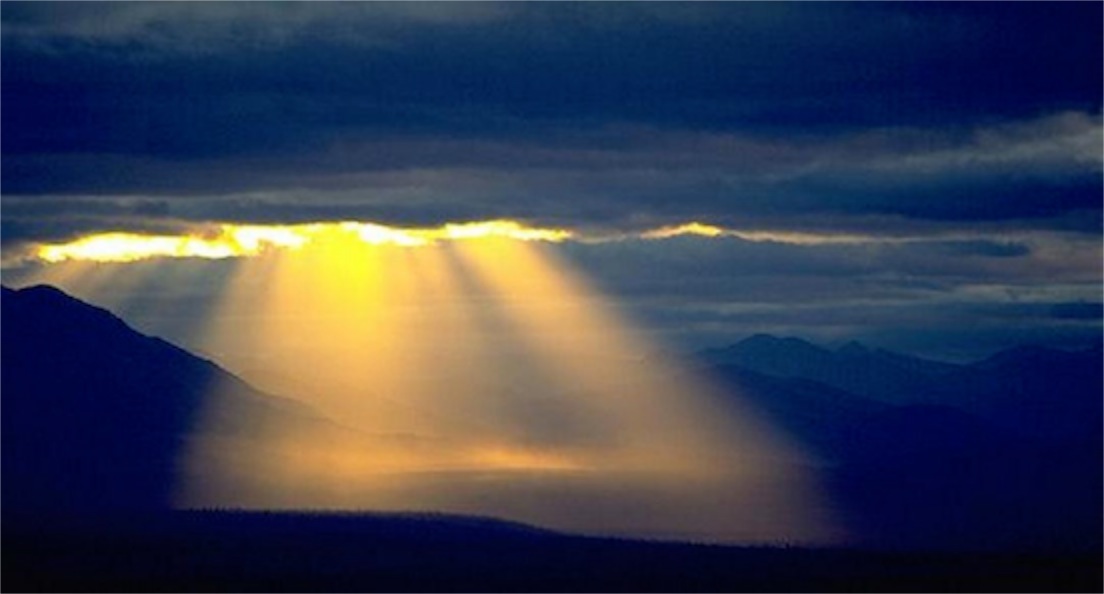

Patrick and Detria Hutchinson moved from the Upper Ninth Ward when their house was destroyed by Katrina. They moved sixty miles to the opposite end of Lake Ponchartrain. Yesterday they faced the crisis of a destroyed home once again.
Once again we who live in different places are watching the images on our computers aware that there is little we can do except to contribute to the recovery efforts.
And my attention is divided because as devastating as too much water is, not enough water can be a crisis too. Portions of my home state that are very familiar to me are burning up with resources running short and several fires being left to burn themselves out as firefighters struggle to save at least some of the home. Reports of injuries and losses of homes continue to arrive. The temperatures are very high. The winds are very erratic. The risk is very real.
 On Tuesday evening, we paused at a hilltop to watch the Rosebud Fire burning near Roscoe. The fire is now listed at 20% containment, but there are at least 20 homes that are threatened.
On Tuesday evening, we paused at a hilltop to watch the Rosebud Fire burning near Roscoe. The fire is now listed at 20% containment, but there are at least 20 homes that are threatened.A little to the west in the Yellowstone Valley in a region we call Paradise Valley, the Pine Creek fire is threatening the homes of about 200 people. No one knows for sure how many houses have been burned. It took less than a day for the fire to grow to 8 square miles.
There are fires burning and threatening homes south of Bozeman, Butte and Missoula. The 19-mile fire, south of Butte covers 4 square miles and has already burned at least 9 structures. One homeowner was evacuated by ambulance after suffering burns trying to save his house.
It is the last day of August. Theoretically cooler weather will soon be on its way, but those of us who have watched the fires across the west for years know that September can be a long month and the snows that usually come in October can be delayed until December some years.
I have friends and cousins who worked hard in their careers and saved carefully for the day when they could purchase a place in the mountains, surrounded by trees. Although I don’t know any one who is personally threatened by the current fires, I know lots of people whose homes are vulnerable to the fires. Those evacuees with the worried looks on their faces could be my friends. There were days when I used to dream of a place on the Upper Rosebud as a perfect place to retire. The fires are threatening some very beautiful places.

It is all theoretical for me. I have never experienced the loss of my home. I do, however, have a vocation that is often associated with impermanence. Ministers usually move fairly frequently. We agree to go where we are called. My home congregation used to see a new minister every four years or so. Compared to many ministers, we have not moved very often in our careers. We have experienced stable relationships with congregations. Even so, our time of service in any congregation is just a small slice of the story of that church.
Permanence is only an illusion in this life. We think that we can hold on to our homes and our possessions, but we are at best stewards of our property for short amounts of time. If my count is right, I have lived in 15 different houses or apartments in my life. Although the one that is currently my home has been my home for more time than any other, it is quite unlikely that it is my last. My mother considered herself to be a life-long citizen of Montana. But she lived in Oregon and South Dakota for the last years of her life.
We have homes for a little while. Our lives span only a small portion of the larger reality that is human history. I think it was Emily Dickinson who wrote something like: “All historically important people have one thing in common: they are dead.”
The illusion of permanence is only an illusion. We are in this place for a little while only. The Psalmist put it this way: “The years of our life are seventy, or even by reason of strength eighty; yet their span is toil and trouble; they are soon are gone, and we fly away.”
It is that same Psalm that offers an answer to the question of where our home lies. We were not made for permanence in this life. The 90th psalm begins this way, “Lord, thou hast been our dwelling place in all generations. For us, home is never a place. We are not a people of any single place. We are a people who belong to God. Our home is a relationship. We put our stock not in real estate, but in love. And we believe that love never dies.
So my heart and my prayers go out to those whose homes are threatened or lost. I hope that my compassion will inspire genuine generosity. I know that it could as easily be me one day facing the loss of home and possessions. But I also know that I will always have a home.
“Lord, thou hast been our dwelling place in all generations.”

Copyright © 2012 by Ted Huffman. I wrote this. If you want to copy it, please ask for permission. There is a contact me button at the bottom of this page. If you want to share my blog a friend, please direct your friend to my web site.
Home again
30/08/12 05:29
Before the Interstate highway system was constructed, major routes across the country were designated as US highways. The US Highway system designated east-west routes with even numbers starting with US 2 near the Canadian border. The farther south, the larger the numbers were. North-south routes were odd numbers beginning at the East Coast and getting larger as they went west, with US 101 being the route down the west coast.
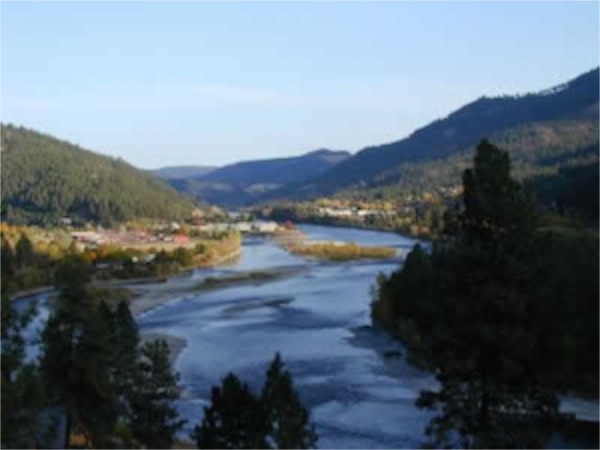 We still enjoy driving on the US highways. They are rarely divided roads, like the Interstates, but they tend to go through towns rather than around towns. They tend to have lower speed limits. They are less likely to be lined with chain restaurants and motels and have cafes and other places that reveal local character. And when we are on vacation, we like to travel at slower speeds and stop more often.
We still enjoy driving on the US highways. They are rarely divided roads, like the Interstates, but they tend to go through towns rather than around towns. They tend to have lower speed limits. They are less likely to be lined with chain restaurants and motels and have cafes and other places that reveal local character. And when we are on vacation, we like to travel at slower speeds and stop more often.
Still we covered quite a bit of ground on our recent trip. Through the generosity of our congregation, we were able to carry over unused vacation time from 2011 to 2012 and so we had three weeks for this trip. We covered a little over 4,200 miles and spent 21 consecutive nights in our camper without any major breakdowns or travel problems. We pulled a light trailer with our rowboat and a kayak and the boats got use in several different lakes as well as the Puget Sound.
We didn’t drive every day of our vacation. There were days of being parked and enjoying where we were. The most miles we covered in a single day were 570 between Orofino, Idaho and Red Lodge, Montana. At 60 mph, that’s about 9 ½ hours of driving. Most days that we drove, we drove less than 8 hours, which is reasonable.
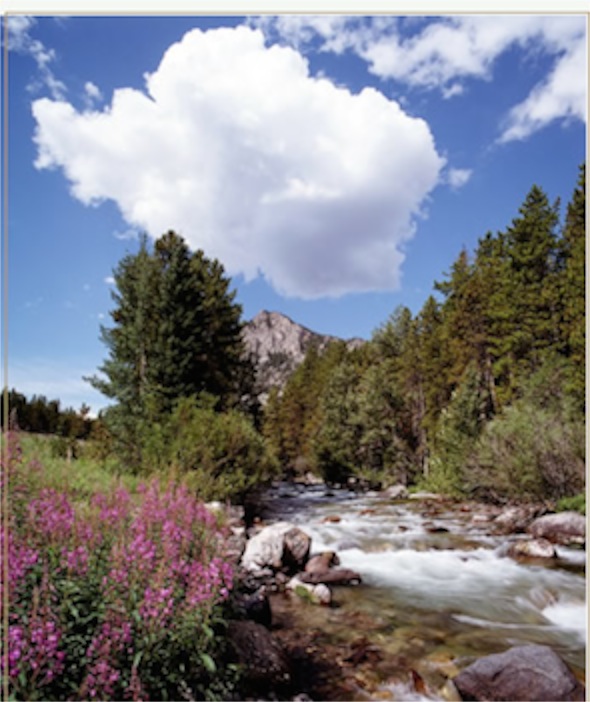 Although we traveled mostly from east to west and back, using US highway 2 going west-bound and US 12 coming east, we drove a fair number of north-south routes as well. Along our way we drove on US highways 83, 85, 87, 89, 93, 95 and 97. And we didn’t avoid Interstates entirely, driving on Interstates 5, 84, 82 and 90.
Although we traveled mostly from east to west and back, using US highway 2 going west-bound and US 12 coming east, we drove a fair number of north-south routes as well. Along our way we drove on US highways 83, 85, 87, 89, 93, 95 and 97. And we didn’t avoid Interstates entirely, driving on Interstates 5, 84, 82 and 90.
There are probably more statistics from the trip that I will compile, but that amount of travel in the time we took would have amazed previous generations.
My father would not have been surprised by the distances covered or the places visited, but he would have made such a trip with an airplane. Being a pilot and owning his own planes, he preferred flying to driving and we had some grand vacations with airplanes when we were children, including a wonderful trip to Seattle that covered some of the same territory that we traveled. He might have been amazed at a few aspects of our travel in other ways. He would have loved the GPS navigation device that sits on the dashboard of our pickup. We used it for navigation on only part of the trip, as it prefers direct routes and we prefer to wander a bit. The voice patiently said, “recalculating,” a lot as I kept taking roads that led to out of the way places. My father would have been surprised that we drove all those miles pulling a trailer without any tire problems, especially since we drove on days with 100+ temperatures. We’ve driven our pickup over 132,000 miles over the past 7 years and have never had a flat tire. The only tire changes the truck has had have been routine tire rotations and replacing the tires when they are worn – all done in tire shops. We’re prepared for having to change a tire on the road, but I have to check to make sure the tire pressure is right in the spare before leaving on big trips, because it has never been on the truck.
My father would also have been surprised at how long cars and pickups last. I’m not sure that he ever drove a pickup over 100,000 miles and I know that he never owned a car that went over 200,000 miles. We have no troubles getting 250.000 miles on our vehicles.
My grandparents would have been amazed at the number of miles we drive on vacation and the total number of miles we drive each year. For them a return from Montana to North Dakota would be a big trip and if they took such a trip in a year, they wouldn’t consider an additional trip that year. They also would have found an average speed of 60 mph to be awfully fast. They rarely went 100 miles without at least one stop. My grandfather would also have been impressed with pickup tires that go 50,000 miles without a problem. He ran a service station for part of his life and they did all of their tire repairs by hand without any power tools.
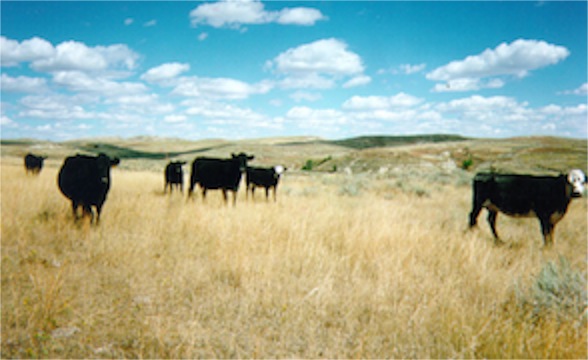 So I wonder about our grandson. How will he travel? What kind of distances will he consider to be routine? What kind of vehicles will transport him? I suspect that there will be much to amaze and impress me in his future.
So I wonder about our grandson. How will he travel? What kind of distances will he consider to be routine? What kind of vehicles will transport him? I suspect that there will be much to amaze and impress me in his future.
Today, however, is a day to return to work. There will be stacks of messages and mail to deal with. There is a bulletin that needs to be prepared and worship that needs to be planned. We’ll have to catch up with all of the pastoral concerns. We already know that there were three deaths in the congregation during our absence and there are plenty of other concerns as well. Ours is a busy church and the busyness doesn’t stop for the pastor’s vacation. School has resumed and soon it will be time for the Church School Rally, choir practice and the return to our fall schedule. We’ll be busy playing “catch up” for the rest of this week. And there are mountains of laundry to tackle, plenty of things to put away and lots of other chores to be done at home as well. We won’t be getting bored anytime soon.
It was great to have such a grand vacation, and we are returning refreshed with renewed energy for our work. Hopefully some of that energy will be evident to the congregation.

Still we covered quite a bit of ground on our recent trip. Through the generosity of our congregation, we were able to carry over unused vacation time from 2011 to 2012 and so we had three weeks for this trip. We covered a little over 4,200 miles and spent 21 consecutive nights in our camper without any major breakdowns or travel problems. We pulled a light trailer with our rowboat and a kayak and the boats got use in several different lakes as well as the Puget Sound.
We didn’t drive every day of our vacation. There were days of being parked and enjoying where we were. The most miles we covered in a single day were 570 between Orofino, Idaho and Red Lodge, Montana. At 60 mph, that’s about 9 ½ hours of driving. Most days that we drove, we drove less than 8 hours, which is reasonable.

There are probably more statistics from the trip that I will compile, but that amount of travel in the time we took would have amazed previous generations.
My father would not have been surprised by the distances covered or the places visited, but he would have made such a trip with an airplane. Being a pilot and owning his own planes, he preferred flying to driving and we had some grand vacations with airplanes when we were children, including a wonderful trip to Seattle that covered some of the same territory that we traveled. He might have been amazed at a few aspects of our travel in other ways. He would have loved the GPS navigation device that sits on the dashboard of our pickup. We used it for navigation on only part of the trip, as it prefers direct routes and we prefer to wander a bit. The voice patiently said, “recalculating,” a lot as I kept taking roads that led to out of the way places. My father would have been surprised that we drove all those miles pulling a trailer without any tire problems, especially since we drove on days with 100+ temperatures. We’ve driven our pickup over 132,000 miles over the past 7 years and have never had a flat tire. The only tire changes the truck has had have been routine tire rotations and replacing the tires when they are worn – all done in tire shops. We’re prepared for having to change a tire on the road, but I have to check to make sure the tire pressure is right in the spare before leaving on big trips, because it has never been on the truck.
My father would also have been surprised at how long cars and pickups last. I’m not sure that he ever drove a pickup over 100,000 miles and I know that he never owned a car that went over 200,000 miles. We have no troubles getting 250.000 miles on our vehicles.
My grandparents would have been amazed at the number of miles we drive on vacation and the total number of miles we drive each year. For them a return from Montana to North Dakota would be a big trip and if they took such a trip in a year, they wouldn’t consider an additional trip that year. They also would have found an average speed of 60 mph to be awfully fast. They rarely went 100 miles without at least one stop. My grandfather would also have been impressed with pickup tires that go 50,000 miles without a problem. He ran a service station for part of his life and they did all of their tire repairs by hand without any power tools.

Today, however, is a day to return to work. There will be stacks of messages and mail to deal with. There is a bulletin that needs to be prepared and worship that needs to be planned. We’ll have to catch up with all of the pastoral concerns. We already know that there were three deaths in the congregation during our absence and there are plenty of other concerns as well. Ours is a busy church and the busyness doesn’t stop for the pastor’s vacation. School has resumed and soon it will be time for the Church School Rally, choir practice and the return to our fall schedule. We’ll be busy playing “catch up” for the rest of this week. And there are mountains of laundry to tackle, plenty of things to put away and lots of other chores to be done at home as well. We won’t be getting bored anytime soon.
It was great to have such a grand vacation, and we are returning refreshed with renewed energy for our work. Hopefully some of that energy will be evident to the congregation.
Copyright © 2012 by Ted Huffman. I wrote this. If you want to copy it, please ask for permission. There is a contact me button at the bottom of this page. If you want to share my blog a friend, please direct your friend to my web site.
A Smoky State
29/08/12 04:57
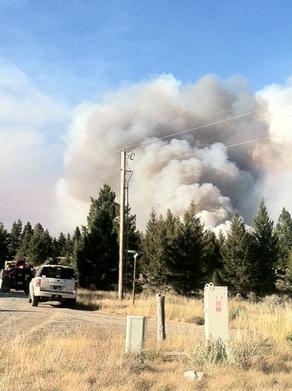 My home state of Montana is a smoky place. We entered the state over Lolo Pass, south of Missoula in a cloud of smoke from a fire that was burning off to the southeast. The winds were calm and the mountains and valleys were filled with smoke. We saw several brush trucks and caravans of hotshot crews in the area. It appeared that the Taho Hotshots were either headed toward a break or heading home. The Flathead Hotshots seemed to be heading toward the fire. The fire camp, east of Missoula, is large with a city of tents and equipment.
My home state of Montana is a smoky place. We entered the state over Lolo Pass, south of Missoula in a cloud of smoke from a fire that was burning off to the southeast. The winds were calm and the mountains and valleys were filled with smoke. We saw several brush trucks and caravans of hotshot crews in the area. It appeared that the Taho Hotshots were either headed toward a break or heading home. The Flathead Hotshots seemed to be heading toward the fire. The fire camp, east of Missoula, is large with a city of tents and equipment.As we crossed the continental divide out of Butte the winds began to pick up, but they weren’t blowing from their usual direction. By Three Forks the wind was out of the south and the temperatures were rising. It was 92 degrees with a strong south wind. There was an enormous smoke plume from a fire in the Spanish Peaks that enveloped Bozeman. People were wearing scarves over their faces to filter the smoky air.
It was nearly 100 degrees by the time we got to Big Timber and we started to notice people with tire problems on the highway. High temperatures and high speeds are not easy conditions for tires, especially trailer tires. We kept our speed down to about 65 mph and had no problems ourselves. The high temperature that we saw was 102 at about Reed Point.
We left the Interstate west of Columbus and followed the frontage road into town and from there headed down to Red Lodge through Absorkee. We were following another smoke plume. It is difficult to judge distance with fires and this one proved to be a bit farther than we first thought. I suspected that it was somewhere on the Stillwater and then revised my estimate to the Fishtail-Nye area. It turned out to be a bit farther down the road, but as we topped a high hill, we were afforded a good look at the fire and the firefighting operations. The wind was still out of the south at that point and the fire was burning away from the high country and the tree-filled steeps. It looked like they had a great chance of making significant progress in the night cools. By Red Lodge the temperature was down to 85 degrees and the cool breeze blowing off of the creek promised even cooler temperatures for this morning. The forecast calls for one more hot day in the high country before cooler temperatures later in the week.
Folks around here have been dealing with smoke for days. There is an 8,000+ acre fire in the Absaroka Wilderness area. Yesterday was a relief for them as the wind cleared the air and the mountains emerged from their smoky pallor.
If you read the history of the forests of the west, you hear reference to bad fire years. The United States Forest Service experienced the first really bad fire year in its history in 1910. There were numerous fires throughout Colorado and Montana that burned until the fall weather and snows extinguished them. It was in response to that year that the Forest Service made fighting fires a top priority. For some, like Bill Greely, fire fighting was thought to be the first priority of the service. The result of that philosophy was the gradual build-up of fuels throughout the forests. Forests that previously had experienced regular fires that decreased fuels now went for decades without fires. Lodgepole Pines grew more and more densely until there were hillsides with double and triple the number of trees than before. After the Second World War, the technology of fire detection got a big boost from light aviation. My father flew fire patrol over the Gallatin National Forest and Yellowstone Park for 25 years. They spotted virtually every fire within the first 24 hours. As the ‘50’s turned to the ‘60’s they were getting better and better at dropping smoke jumpers close to the fires and backcountry firefighting became a science. Retired Air Force Bombers became retardant bombers and the aerial attack on fires got more and more effective. In the ‘70’s the first high-altitude helicopters began to show up in the west and added quick response water dropping to the arsenal of weapons used by firefighters.
It was the summer of 1988 when we first saw the result of decades of intense fire suppression. By then the fuel loads had built to extremes. Three fires in Yellowstone National Park became a single conflagration that was unstoppable by the crews. A virtually unlimited budget was insufficient to stop the flames. Only the snows of October brought an end to the fires. To the credit of the firefighters the loss of buildings and historic sites was minimal. Near West Yellowstone the fires were so intense on some hillsides that the soil was sterilized and it too years before even grass would grow on the slopes.
Much to our surprise, however, the fires didn’t ruin the park. They opened up new vistas and a fascinating opportunity to see the forest at work rejuvenating itself. Within 5 years the fire scars had turned into lush greenery and verdant habitat for animals. Deer and elk populations boomed with the new feed opening up. The park once again regained its balance and forest managers began to understand the role of fire better.
These days the mountains of the west are filled with acres and acres of dead trees. The mountain pine beetles have killed a lot of trees and their devastation is spreading. Those dead trees provide rich fuel for fires and once the fires get going they quickly burn through the dead and dying trees. Conditions are different than we have seen before and no one knows for sure what will happen.
A forest is a complex ecosystem and the cycles of life in the forest are best understood in terms of centuries, not decades or years. We understand only in part and there is much that remains unknown.
But for now it is a season of fires throughout the west and it doesn’t look like the end will come soon. Temperatures have been higher than normal and a late fall is being predicted. Snows may not come until November and then they may be lighter than usual.
We still have much to learn from the forest.
Copyright © 2012 by Ted Huffman. I wrote this. If you want to copy it, please ask for permission. There is a contact me button at the bottom of this page. If you want to share my blog a friend, please direct your friend to my web site.
Gifford Pinchot National Forest
28/08/12 05:48
I imagine that October 15, 1949 was a beautiful day in the middle Cascades in Washington, though I do not know what the weather was like on that day. I wasn’t even born yet. But I have been in the Cascades in October several times and I know that it can be crisp and cool and beautiful. I know that it can also be rainy and foggy and chilly. But I imagine that the day was one of those crisp and clear mountain days when Mt. Rainer, Mt. St. Helens and Mt. Adams are all clearly visible in all of their glory. There probably would have been more snow on all of the mountains that year. Mt. St. Helens would have hat its top in tact, piercing the clouds like the other mountains, decades away from the dramatic eruption that carved the giant caldera that is now where the peak once was.
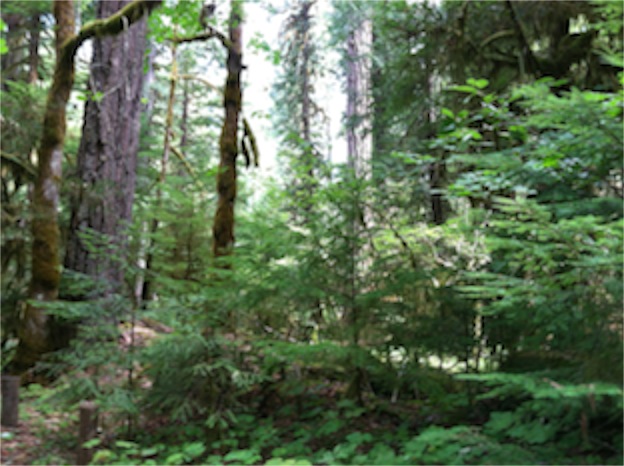 A small group of officials were gathered in a wooded area alongside U.S. Highway 12. Giant trees surrounded them. The Western Red Cedar, Hemlock, Douglas Fir and Spruce trees all topped 100 feet in height. The forest was rich with undergrowth and smelled a little like decaying wood, but the cedar smell covered the dampness and it felt as if giants surrounded the small group gathered. The place still feels that way. The trees are so high and thick that you can’t see the areas where large sections of the mountains have been clear cut and denuded of trees.
A small group of officials were gathered in a wooded area alongside U.S. Highway 12. Giant trees surrounded them. The Western Red Cedar, Hemlock, Douglas Fir and Spruce trees all topped 100 feet in height. The forest was rich with undergrowth and smelled a little like decaying wood, but the cedar smell covered the dampness and it felt as if giants surrounded the small group gathered. The place still feels that way. The trees are so high and thick that you can’t see the areas where large sections of the mountains have been clear cut and denuded of trees.
Among the officials were the head of the U.S. Forest Service and the Secretary of the Interior. They were there to make the official designation of the Gifford Pinchot National Forest and to install a brass plaque officially marking the occasion. The place for the plaque was at the base to two giant trees standing next to each other. One was a Western Red Cedar, the other a Douglas fir. They stood alongside a small creek and towered over the neighboring trees. The cedar has since died and its top been blown off, but the fir is healthy and thriving.
It was just over three years after the death of Gifford Pinchot, who died of leukemia in Pennsylvania at the age of 81. He had lived a long, varied and intensely political life. He had written books, served under presidents, been the first chief of the U.S. Forest Service under Theodore Roosevelt, endured controversy and led a group who split from the Republican Party and formed the Progressive Party. He had served twice as governor of Pennsylvania. And he had loved the forests of this land like no one else.
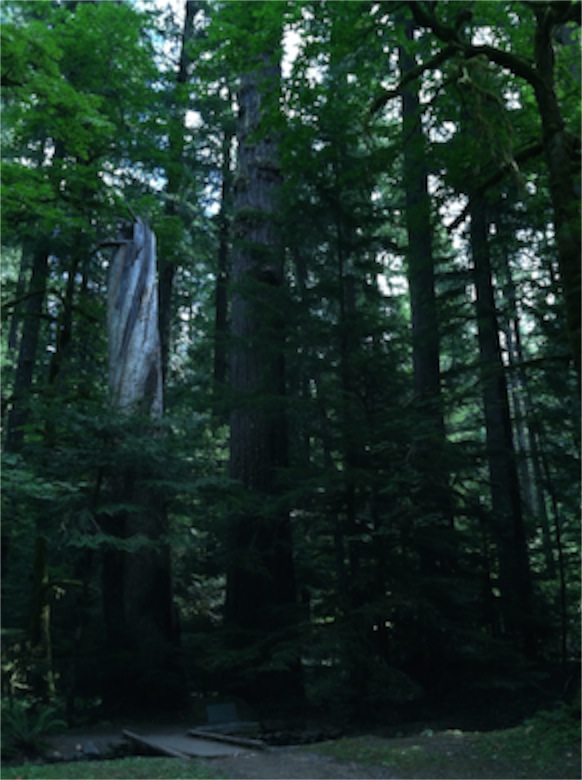 Naming a forest after him was a fitting tribute to the man. The Cascades are home to the Pacific Temperate Rainforest, a dramatic ecosystem that produces dramatic and long-lived trees.
Naming a forest after him was a fitting tribute to the man. The Cascades are home to the Pacific Temperate Rainforest, a dramatic ecosystem that produces dramatic and long-lived trees.
Back in those days, they didn’t know much about forest management. Actually they knew a lot, but we know even more these days. The forests were so large and vast that they seemed limitless and as if they could never be depleted. Fire was seen as an enemy of the forest and fought with all of the resources they could muster. The role of fire in a healthy forest ecosystem wasn’t understood. Bill Greeley, who became head of the forest service in 1920 was convinced by the firestorm of 1910 that fire was the work of Satan and that fighting fire should be the primary mission of the Forest Service. It wasn’t the only issue upon which he was proven wrong by history. It wasn’t the only thing with which he found disagreement and opposition from Gifford Pinchot.
Fresh back from the success of World War II the Army Corps of Engineers was convinced that they could build anything, given enough resources. Together with the Bonneville Power Administration, they set out to build as many dams and power plants as possible throughout the cascades, producing electricity to power the aluminum foundries and the Boeing aircraft factory in Seattle. Pinchot had proposed the concept of multiple use of the forests, but he lived long enough to regret some of the things that were being done to the forests.
He was most vocal in his opposition to clear cutting of the forests. Pinchot and Theodore Roosevelt had envisioned that public timber should be sold only to small, family-run logging outfits, not to big syndicates. Pinchot had always preached of a “working forest” for working people and small scale logging at the edge, preservation at the core. Bill Greely had a different vision. After his stint at the head of the forest service, he was an executive of the West Coast Lumberman’s Association. When Pinchot witnessed the legacy of Bill Greely, it “tore his heart out.” Industrial clear cuts became the norm in the national forests of Montana and Oregon. Entire mountainsides, mountain after mountain, were denuded of all trees. Pinchot wrote in his diary: “So this is what saving the trees was all about. Absolute devastation. The Forest Service should absolutely declare against clear cutting in Washington and Oregon as a defensive measure.”
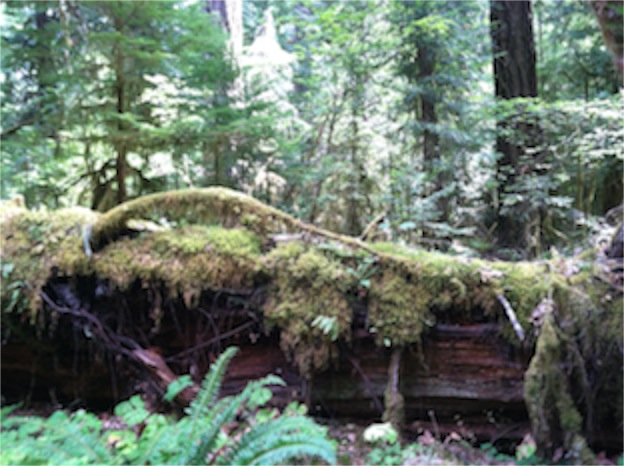 The politics of the Forest Service have turned off some naturalists, but Pinchot was ready for the rough and tumble of the political life. He believed in the power of government to do good. He believed that there were things that we could do together that required a strong government. He ran for the U.S. Senate, served as a governor, and even spoke of a run for the presidency. He saw the political process as a way to provide for the good of the people. He fought plenty of battles, won a few and lost others.
The politics of the Forest Service have turned off some naturalists, but Pinchot was ready for the rough and tumble of the political life. He believed in the power of government to do good. He believed that there were things that we could do together that required a strong government. He ran for the U.S. Senate, served as a governor, and even spoke of a run for the presidency. He saw the political process as a way to provide for the good of the people. He fought plenty of battles, won a few and lost others.
He was an icon in his family. Every generation since his time has named one of its sons Gifford, right down to Gifford Pinchot IV. But he will also be remembered as the partner of president Theodore Roosevelt in the establishment of the National Forest System. It is fitting that one of those forests be named for him and that it include a huge grove of old growth trees that tower above the heads of visitors. There is no highway marker telling of the plaque. You have to chance upon it or be looking for it on purpose. The trees, however, are impossible to ignore.
For those who are following my blog as a travelogue, we bid farewell to our son and his family yesterday and are on our way home. We’re camped on the banks of the Clearwater River near Orofino, Idaho. One more night on the road and we’ll be home.

Among the officials were the head of the U.S. Forest Service and the Secretary of the Interior. They were there to make the official designation of the Gifford Pinchot National Forest and to install a brass plaque officially marking the occasion. The place for the plaque was at the base to two giant trees standing next to each other. One was a Western Red Cedar, the other a Douglas fir. They stood alongside a small creek and towered over the neighboring trees. The cedar has since died and its top been blown off, but the fir is healthy and thriving.
It was just over three years after the death of Gifford Pinchot, who died of leukemia in Pennsylvania at the age of 81. He had lived a long, varied and intensely political life. He had written books, served under presidents, been the first chief of the U.S. Forest Service under Theodore Roosevelt, endured controversy and led a group who split from the Republican Party and formed the Progressive Party. He had served twice as governor of Pennsylvania. And he had loved the forests of this land like no one else.

Back in those days, they didn’t know much about forest management. Actually they knew a lot, but we know even more these days. The forests were so large and vast that they seemed limitless and as if they could never be depleted. Fire was seen as an enemy of the forest and fought with all of the resources they could muster. The role of fire in a healthy forest ecosystem wasn’t understood. Bill Greeley, who became head of the forest service in 1920 was convinced by the firestorm of 1910 that fire was the work of Satan and that fighting fire should be the primary mission of the Forest Service. It wasn’t the only issue upon which he was proven wrong by history. It wasn’t the only thing with which he found disagreement and opposition from Gifford Pinchot.
Fresh back from the success of World War II the Army Corps of Engineers was convinced that they could build anything, given enough resources. Together with the Bonneville Power Administration, they set out to build as many dams and power plants as possible throughout the cascades, producing electricity to power the aluminum foundries and the Boeing aircraft factory in Seattle. Pinchot had proposed the concept of multiple use of the forests, but he lived long enough to regret some of the things that were being done to the forests.
He was most vocal in his opposition to clear cutting of the forests. Pinchot and Theodore Roosevelt had envisioned that public timber should be sold only to small, family-run logging outfits, not to big syndicates. Pinchot had always preached of a “working forest” for working people and small scale logging at the edge, preservation at the core. Bill Greely had a different vision. After his stint at the head of the forest service, he was an executive of the West Coast Lumberman’s Association. When Pinchot witnessed the legacy of Bill Greely, it “tore his heart out.” Industrial clear cuts became the norm in the national forests of Montana and Oregon. Entire mountainsides, mountain after mountain, were denuded of all trees. Pinchot wrote in his diary: “So this is what saving the trees was all about. Absolute devastation. The Forest Service should absolutely declare against clear cutting in Washington and Oregon as a defensive measure.”

He was an icon in his family. Every generation since his time has named one of its sons Gifford, right down to Gifford Pinchot IV. But he will also be remembered as the partner of president Theodore Roosevelt in the establishment of the National Forest System. It is fitting that one of those forests be named for him and that it include a huge grove of old growth trees that tower above the heads of visitors. There is no highway marker telling of the plaque. You have to chance upon it or be looking for it on purpose. The trees, however, are impossible to ignore.
For those who are following my blog as a travelogue, we bid farewell to our son and his family yesterday and are on our way home. We’re camped on the banks of the Clearwater River near Orofino, Idaho. One more night on the road and we’ll be home.
Copyright © 2012 by Ted Huffman. I wrote this. If you want to copy it, please ask for permission. There is a contact me button at the bottom of this page. If you want to share my blog a friend, please direct your friend to my web site.
Sand
27/08/12 05:05
Back home in Rapid City we have a stock show each year. The event, held in the winter, is a huge gathering of farmers and ranchers and the people who sell supplies to them. There are auctions of prize animals, displays of farm machinery, and booths with vendors selling everything from clothing to veterinary supplies. There are sheep dog trials and horse shows and, of course, rodeos. The rodeos fill the arena in every way imaginable: a full crowd in the seats, full sound on the p.a. system, an arena full of animals and action, and one heck of a lot of dirt on the floor. It takes dump trucks and heavy equipment to haul in and spread all of the dirt that is necessary to transform an indoor arena into a rodeo ground. Most years someone at the newspaper writes an article illustrated with pictures about the process of hauling in all of the dirt that is required to transform the indoor venue into a rodeo grounds.
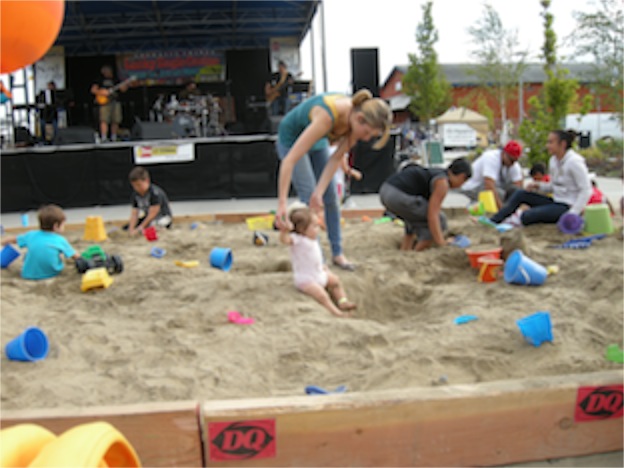 It was a similar-sized effort that went into creating the Olympia Sand Festival that concluded yesterday. They hauled in a lot of sand to transform a city street into a giant sand box. There were rows of giant sand sculptures, each requiring several yards of sand. Like the dirt that is spread in the arena in Rapid City, the sand doesn’t have to travel far. The Puget Sound is a huge depository of sand. There are sandy beaches, dunes of sand, and lots of places that are now inland that once were under water.
It was a similar-sized effort that went into creating the Olympia Sand Festival that concluded yesterday. They hauled in a lot of sand to transform a city street into a giant sand box. There were rows of giant sand sculptures, each requiring several yards of sand. Like the dirt that is spread in the arena in Rapid City, the sand doesn’t have to travel far. The Puget Sound is a huge depository of sand. There are sandy beaches, dunes of sand, and lots of places that are now inland that once were under water.
Still, the efforts of the planners and workers were impressive. There was a stage set up in an intersection of closed-off streets and in front of the stage, huge cedar beams were laid in the street to allow about 20 yards of sand to be spread a foot to 18 inches deep. Then they added a whole lot of sand toys: plastic shovels and buckets and rakes and forms for making castles. The sand box was a giant kid magnet, attracting children from throughout the region to dig, shape, and play in the sand. They made castles and roads and dug holes and buried their feet and hands in the sand. They laid back and made sand angels and rolled in the sand.
Meanwhile, teams of adults from area businesses were forming huge sculptures for the sand sculpture competition.
There was a traditional petting zoo with chickens and sheep and goats and other familiar animals. There was also a wet petting zoo with saltwater tanks where children could touch sea stars and crabs and mussels and clams and a host of other sea creatures. There were vendors selling food and clothing and, of course, sand toys.
It was a festival worthy of a creative city and a delight to visit.
A sand box is a wonderful place for an eighteen-month-old child to play. And it is a great place for grandparents to take pictures. There was music and the weather cooperated wonderfully. Washington is a good place for an afternoon or evening shower, but the rain held off until after the conclusion of the two-day festival.
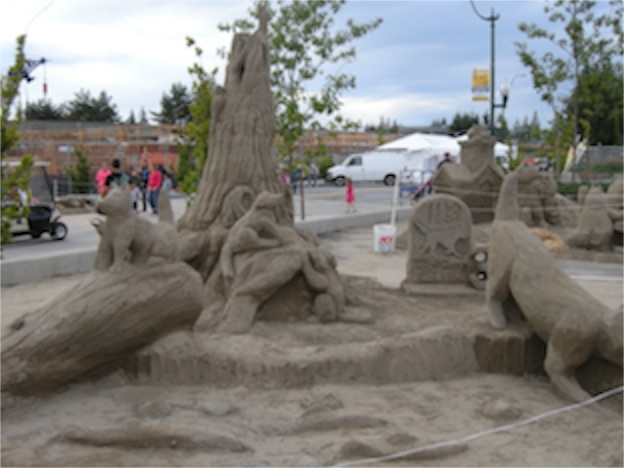 I’m not sure who got the idea of bringing the beach to the people instead of bringing the people to the beach. Beach festivals, of course, have been going on in resort areas for generations. An open beach is a good place for people to gather and have a good time. But moving the beach events to a city center is a different sort of a festival.
I’m not sure who got the idea of bringing the beach to the people instead of bringing the people to the beach. Beach festivals, of course, have been going on in resort areas for generations. An open beach is a good place for people to gather and have a good time. But moving the beach events to a city center is a different sort of a festival.
The event was organized in cooperation with a new hands-on children’s museum that is currently under construction. The new building has already transformed a rather dreary block of warehouses that used to be part of the small port of Olympia. The city has put some significant effort and money into the area improving streets, parking, sidewalks, curbs and gutters and it appears that there will be more development in the area soon. A couple of empty lots have been fenced in preparation for construction that is set to begin.
The new museum won’t be open to the public until later this fall. There are still a lot of displays to assemble and much work to finish the interior of the new building. I do not know how the funding for such a project has been arranged, but I suspect that it was a cooperative effort with federal, state and local tax dollars as well as a significant amount of foundation and other private money invested. I’m sure there has been a local fund drive. We added a contribution to one of the boxes that they had set up at the event. It seemed to be a good investment in the vibrant community that was showing a great spirit and a willingness to invest in children.
The sand festival was a good conclusion for our vacation. Today we will be on the road, headed east toward home. Already our heads are beginning to think of the tasks that await us and the excitement of autumn programs at a growing church. A couple of days on the road will prepare us to return to our jobs with renewed energy and enthusiasm.
It won’t be easy to say good bye to our grandson, but we have a lot of ways to stay in touch and we have the anticipation of future times when we will get together.
Here in Olympia as we depart, there will be crews of people who have to clean up all of the sand and return the streets to their normal use. The job will require trucks and loaders and sweepers and no small amount of manual labor with brooms.
The task isn’t, however, as big as one might imagine. The visitors to the festival hauled away a lot of the sand in their shoes and pants cuffs and pockets and hair. There were folks with sand in strollers and car seats and more than a few sandy bottoms in bathtubs in Olympia last night. It brings to mind a quote from the children’s book: “Whene’re a good nor’easter blows, Christopher Robin (as everyone knows) is bound to be found with sand between his toes.”
 I know one boy who brought home a bit of sand in his diaper.
I know one boy who brought home a bit of sand in his diaper.

Still, the efforts of the planners and workers were impressive. There was a stage set up in an intersection of closed-off streets and in front of the stage, huge cedar beams were laid in the street to allow about 20 yards of sand to be spread a foot to 18 inches deep. Then they added a whole lot of sand toys: plastic shovels and buckets and rakes and forms for making castles. The sand box was a giant kid magnet, attracting children from throughout the region to dig, shape, and play in the sand. They made castles and roads and dug holes and buried their feet and hands in the sand. They laid back and made sand angels and rolled in the sand.
Meanwhile, teams of adults from area businesses were forming huge sculptures for the sand sculpture competition.
There was a traditional petting zoo with chickens and sheep and goats and other familiar animals. There was also a wet petting zoo with saltwater tanks where children could touch sea stars and crabs and mussels and clams and a host of other sea creatures. There were vendors selling food and clothing and, of course, sand toys.
It was a festival worthy of a creative city and a delight to visit.
A sand box is a wonderful place for an eighteen-month-old child to play. And it is a great place for grandparents to take pictures. There was music and the weather cooperated wonderfully. Washington is a good place for an afternoon or evening shower, but the rain held off until after the conclusion of the two-day festival.

The event was organized in cooperation with a new hands-on children’s museum that is currently under construction. The new building has already transformed a rather dreary block of warehouses that used to be part of the small port of Olympia. The city has put some significant effort and money into the area improving streets, parking, sidewalks, curbs and gutters and it appears that there will be more development in the area soon. A couple of empty lots have been fenced in preparation for construction that is set to begin.
The new museum won’t be open to the public until later this fall. There are still a lot of displays to assemble and much work to finish the interior of the new building. I do not know how the funding for such a project has been arranged, but I suspect that it was a cooperative effort with federal, state and local tax dollars as well as a significant amount of foundation and other private money invested. I’m sure there has been a local fund drive. We added a contribution to one of the boxes that they had set up at the event. It seemed to be a good investment in the vibrant community that was showing a great spirit and a willingness to invest in children.
The sand festival was a good conclusion for our vacation. Today we will be on the road, headed east toward home. Already our heads are beginning to think of the tasks that await us and the excitement of autumn programs at a growing church. A couple of days on the road will prepare us to return to our jobs with renewed energy and enthusiasm.
It won’t be easy to say good bye to our grandson, but we have a lot of ways to stay in touch and we have the anticipation of future times when we will get together.
Here in Olympia as we depart, there will be crews of people who have to clean up all of the sand and return the streets to their normal use. The job will require trucks and loaders and sweepers and no small amount of manual labor with brooms.
The task isn’t, however, as big as one might imagine. The visitors to the festival hauled away a lot of the sand in their shoes and pants cuffs and pockets and hair. There were folks with sand in strollers and car seats and more than a few sandy bottoms in bathtubs in Olympia last night. It brings to mind a quote from the children’s book: “Whene’re a good nor’easter blows, Christopher Robin (as everyone knows) is bound to be found with sand between his toes.”

Copyright © 2012 by Ted Huffman. I wrote this. If you want to copy it, please ask for permission. There is a contact me button at the bottom of this page. If you want to share my blog a friend, please direct your friend to my web site.
Of Boats
26/08/12 04:25
The technologies of water transportation have their roots in ancient times. There are all kinds of technological innovations that are a part of modern marine transportation, but the basics of hull design, displacement, and navigation have been known by humans for millennia. When ancient texts such as the Bible or Homer’s Illiad speak of ships, rowing and sailing, we know what they mean in part because we still have boats that are rowed and sailed.
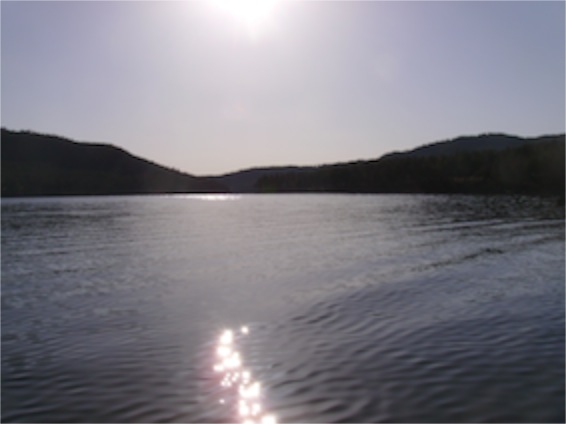 For most of the history of humans on this planet, people and goods have traveled on the water by two methods, rowing and sailing. While the residents of Europe and much of Asia developed sophisticated rowing craft, with the rowers facing the stern of the boat and pulling with their whole bodies, in other parts of the globe, paddling was the norm. Different boats were developed to suit different conditions, different sources of building materials, and different uses.
For most of the history of humans on this planet, people and goods have traveled on the water by two methods, rowing and sailing. While the residents of Europe and much of Asia developed sophisticated rowing craft, with the rowers facing the stern of the boat and pulling with their whole bodies, in other parts of the globe, paddling was the norm. Different boats were developed to suit different conditions, different sources of building materials, and different uses.
The basic design of a Greenland Kayak, for example, is nearly perfectly suited to its environment. The skin-on-frame boats were stable in rough seas, easy to paddle, light and quick enough for hunting, and provided a warm environment for the legs of the paddler. They are easily paddled and, when their useful life is past, they deteriorate back into nature without leaving any lasting residue or pollution.
I don’t know what the initial contact between Europeans and the residents of North America was like, but I imagine that it was a fairly rapid exchange of marine technologies. The Europeans arrived in large sailing vessels and launched smaller pulling boats that were probably beamy and relatively slow in the water. The indigenous people paddled their canoes out to the visitors curious about their craft. The visitors must have noticed how nimble in the water, easy to paddle, quick and maneuverable canoes were. Both sides probably developed an admiration for parts of the others’ technology.
Wood has been the primary building material for boats until the last couple of hundred years or so. It is well suited to being shaped to provide for a smooth passage through the water. It is relatively durable and flexible enough to take the pounding of waves. And it has the remarkable quality of swelling when it is placed in water, which means that joints tighten and leaks disappear when wooden boats are launched.
My little boats have followed ancient designs. My canoes and kayaks are modern reproductions of shapes that have been a part of boats for thousands of years. My rowboat follows a design that was common in New England hundreds of years ago. But the construction and materials I use would not be familiar to ancient boat builders. For one thing, all of my boats except the skin-on-frame kayak have a think layer of fiberglass to seal the wood and protect the boat from the abrasion of sand and gravel on the shore. I have used plywood as the primary material for my rowboat, with sophisticated adhesives joining the thin layers of wood to make the panels. Those panels were precisely cut with a computer-guided CNC machine to make the shape come out just right. That is a far cry from ancient boats that were built by craftsmen who had skilled eyes for proportion. Many of the dimensions of light craft are based on human body parts, so that each boat was a bit different in size depending on the size of the builder.
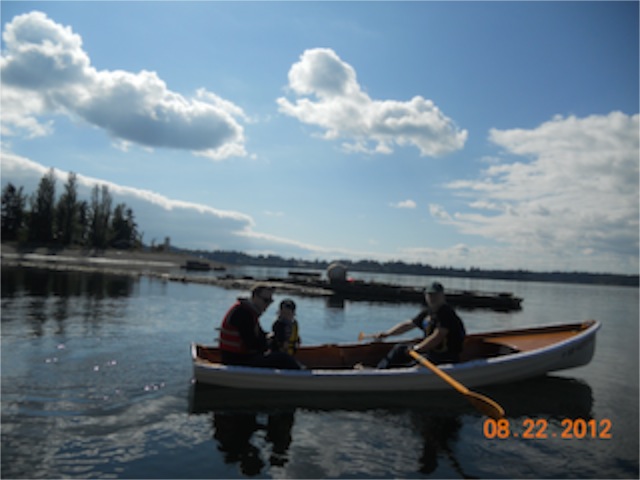 It is fun to think of the heritage of boats as I paddle around a harbor. The Puget Sound is home to some really beautiful wooden boats. The traditions of boatbuilding are long established on these shores and there are many who have invested a lot in building, maintaining and restoring beautiful craft. The forests of the Pacific Northwest provide a ready source of Cedar, Spruce and other woods that are well suited for boat building. The traditions and skills of craftsmanship have been handed down for generations in some of the shops that are located along the shores of the sound.
It is fun to think of the heritage of boats as I paddle around a harbor. The Puget Sound is home to some really beautiful wooden boats. The traditions of boatbuilding are long established on these shores and there are many who have invested a lot in building, maintaining and restoring beautiful craft. The forests of the Pacific Northwest provide a ready source of Cedar, Spruce and other woods that are well suited for boat building. The traditions and skills of craftsmanship have been handed down for generations in some of the shops that are located along the shores of the sound.
Sometimes when I row or paddle in this area I just wander around the boats in the harbor looking at the various shapes and conditions of the boats. The owners of the boats tend to be a friendly lot and my little craft garner some attention from them. I’ve never developed the desire or the means to care for a big boat and I live in the wrong part of the country for a live-aboard, but I can imagine what it might be like and I appreciate the dedication of those who have made a particular boat their life’s work.
Even the most pristine of wooden ships, however, have made concessions to modern times. Marine Radios and GPS navigation devices are present in virtually all of the craft that venture very far from shore. I appreciate it when a boat owner works to hide the antennas and modern gear, but I am also grateful that they use modern technologies to add safety to their travels. Many of the larger boats have electrical systems to provide light and power for various devices. Solar battery chargers are popular on the water and make sense for extended voyaging away from shore power. Some craft carry generators and inverters to power appliances such as microwaves and ice makers.
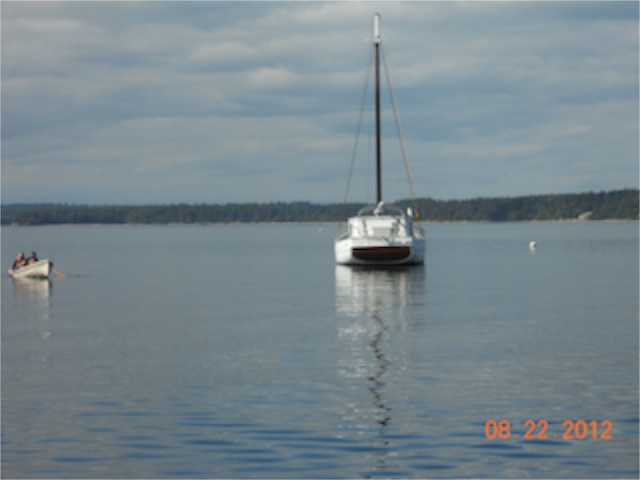 I don’t live on my boats. I don’t even spend all that much time in them. They are vehicles for recreation only. They provide exercise and perspective and entertainment for me. They allow short adventures and enable me to visit places and see things that I would miss if I remained land-locked. And human-powered boats are just right for an overweight middle-aged guy who needs to keep exercising to remain fit. When I take someone for a ride in my rowboat or a canoe, I provide the propulsion and enjoy doing so. It is a pleasant form of exercise.
I don’t live on my boats. I don’t even spend all that much time in them. They are vehicles for recreation only. They provide exercise and perspective and entertainment for me. They allow short adventures and enable me to visit places and see things that I would miss if I remained land-locked. And human-powered boats are just right for an overweight middle-aged guy who needs to keep exercising to remain fit. When I take someone for a ride in my rowboat or a canoe, I provide the propulsion and enjoy doing so. It is a pleasant form of exercise.
I think it is good for my little boats to occasionally visit the harbor and be paddled among the larger and more sophisticated craft. The similarities and differences between the different boats interest me. But I know that this is only a visit. Tomorrow the trailer will be headed east and we’ll be headed home. The boats will spend the winter in storage and I will think of other building projects.
Still it is sweet to visit these waters and enjoy this place before moving on.

The basic design of a Greenland Kayak, for example, is nearly perfectly suited to its environment. The skin-on-frame boats were stable in rough seas, easy to paddle, light and quick enough for hunting, and provided a warm environment for the legs of the paddler. They are easily paddled and, when their useful life is past, they deteriorate back into nature without leaving any lasting residue or pollution.
I don’t know what the initial contact between Europeans and the residents of North America was like, but I imagine that it was a fairly rapid exchange of marine technologies. The Europeans arrived in large sailing vessels and launched smaller pulling boats that were probably beamy and relatively slow in the water. The indigenous people paddled their canoes out to the visitors curious about their craft. The visitors must have noticed how nimble in the water, easy to paddle, quick and maneuverable canoes were. Both sides probably developed an admiration for parts of the others’ technology.
Wood has been the primary building material for boats until the last couple of hundred years or so. It is well suited to being shaped to provide for a smooth passage through the water. It is relatively durable and flexible enough to take the pounding of waves. And it has the remarkable quality of swelling when it is placed in water, which means that joints tighten and leaks disappear when wooden boats are launched.
My little boats have followed ancient designs. My canoes and kayaks are modern reproductions of shapes that have been a part of boats for thousands of years. My rowboat follows a design that was common in New England hundreds of years ago. But the construction and materials I use would not be familiar to ancient boat builders. For one thing, all of my boats except the skin-on-frame kayak have a think layer of fiberglass to seal the wood and protect the boat from the abrasion of sand and gravel on the shore. I have used plywood as the primary material for my rowboat, with sophisticated adhesives joining the thin layers of wood to make the panels. Those panels were precisely cut with a computer-guided CNC machine to make the shape come out just right. That is a far cry from ancient boats that were built by craftsmen who had skilled eyes for proportion. Many of the dimensions of light craft are based on human body parts, so that each boat was a bit different in size depending on the size of the builder.

Sometimes when I row or paddle in this area I just wander around the boats in the harbor looking at the various shapes and conditions of the boats. The owners of the boats tend to be a friendly lot and my little craft garner some attention from them. I’ve never developed the desire or the means to care for a big boat and I live in the wrong part of the country for a live-aboard, but I can imagine what it might be like and I appreciate the dedication of those who have made a particular boat their life’s work.
Even the most pristine of wooden ships, however, have made concessions to modern times. Marine Radios and GPS navigation devices are present in virtually all of the craft that venture very far from shore. I appreciate it when a boat owner works to hide the antennas and modern gear, but I am also grateful that they use modern technologies to add safety to their travels. Many of the larger boats have electrical systems to provide light and power for various devices. Solar battery chargers are popular on the water and make sense for extended voyaging away from shore power. Some craft carry generators and inverters to power appliances such as microwaves and ice makers.

I think it is good for my little boats to occasionally visit the harbor and be paddled among the larger and more sophisticated craft. The similarities and differences between the different boats interest me. But I know that this is only a visit. Tomorrow the trailer will be headed east and we’ll be headed home. The boats will spend the winter in storage and I will think of other building projects.
Still it is sweet to visit these waters and enjoy this place before moving on.
Copyright © 2012 by Ted Huffman. I wrote this. If you want to copy it, please ask for permission. There is a contact me button at the bottom of this page. If you want to share my blog a friend, please direct your friend to my web site.
Onward
25/08/12 05:23

There have been many different ways of analyzing the Bible over the centuries. People have read the book over and over and searched for meanings that are deeper than the surface. Some have analyzed the use of language and compared it with other literature in order to discover patterns of history and meanings commonly associated with terms in particular times and places. Some have looked to other sources of historical information, comparing the discoveries of archeology and the events recorded in the Bible. Some have become experts in institutional traditions and structures, looking to see how the church has applied the Bible to its mission and work over the centuries. Some have prayed the Bible, using it as a structure for devotional life and spiritual growth.
Over the years there have been some methods of studying the Bible that have been more popular in certain times than in others. One technique that is not as popular in contemporary times as it was in previous centuries is the study of numerology. Essentially this study was an analysis of all of the numbers in the Bible and a search for mathematical patterns. There are plenty of numbers in the Bible: 7 days of creation, 40 days of the flood and 40 days of temptation in the wilderness for Jesus. The concept of jubilee is based on a 50-year cycle that is defined in terms of seven. Seven times seven is 49 and the following year is 50. Numerologists have found lots of other significant numbers and patterns in the Bible. Some of their conclusions are, frankly, stretches of the imagination and not all are helpful to the understanding of the sacred texts.
There are times, however, when it is at least entertaining to think in terms of numbers. Something about this particular August has gotten me to thinking about numbers. Because we began our first call to the professional ministry in August and we began our call to this particular congregation in August, the month seems to be a time of thinking about anniversaries.
The number for us this year is 17. We have completed 17 years of service as pastors and teachers of 1st Congregational United Church of Christ in Rapid City, South Dakota. That number fits into a kind of a pattern in my life. For Susan and me, it represents half of our careers as ministers. We have served as ministers for 34 years: 7 years in Hettinger and Reeder, North Dakota; 10 years in Boise and now 17 years in Rapid City. 17 years is also the number of years that I lived in the home of my parents growing up. If you add those years up, you get 51, which leaves four years of college and four years of graduate school. That is my life so far.
Another way of looking at the numbers is that I start to explore new territory with the next year of my life. I’ve never before lived in the same home for more than 17 years. Each year for the past five years, I have set a new record for length of service as pastor of this congregation. Prior to my pastorate, the longest that a single pastor had served this congregation was 12 years. Each year that we continue our shared ministry is a new adventure for us both. Covering new ground and exploring new dimensions of ministry has been a way of life for us for all of those seventeen years, really, because we have together faced new circumstances and new challenges each year of our time together.
I don’t think that there are any hidden meanings in the numbers of my life. The length of time that I have served as pastor of this congregation is a testament to the power of faithfulness. The congregation pledged, at our installation, to walk with us in a journey of faith. They have been faithful to those promises, even though the congregation has changed significantly over the years. So many of the people who were a part of the congregation 17 years ago are no longer with us! So many new people have come into the congregation over those years! The church is not the same church that we were called to serve in 1995.
Of course we have changed, too. I’d like to think that I have, in some ways at least, matured. I’d like to think that I am a better pastor than I was when I was called to this congregation. But humility requires that I admit that part of the length of the pastorate is just stubbornness. Older isn’t always wiser. Longer isn’t always better. Sometimes things just go on and on because of inertia – no one has the energy to make the change. The longevity of the pastorate might be more of a statement about stubbornness than it is about competency.
Still, the occasion is worthy of some reflection. A bit of simple math points out that change is coming. In 17 more years I will be 75 years old – well beyond the span of the working career of most people. It is highly unlikely that I will be serving this congregation in the same capacity 17 years from now. A new team of pastors will have come along to replace those of us who are currently serving. There will be new ideas, new directions and new possibilities revealed as the changes occur.
Part of the agenda for the coming years, for us and for the congregation, is going to be preparation for the changes that are coming. In order to have a successful transition of leadership, the congregation is going to have to learn to be flexible with changes in leadership style. In order for the future to unfold, we will need to learn to be less directive in the congregation’s decisions, allowing other personalities to shine and other leaders to emerge. Together we and the congregation will need to become open to the movement of the Holy Spirit as we seek to be faithful to God’s call.
Adding up the numbers of the past is an interesting adventure, but the truth is that in the church the future is always calling. We declare that God is still speaking and indeed it is true. God is calling this congregation into a new future with new ministries yet to be revealed. The adventure is worthy of the next few years of our lives and certainly much bigger than the span of any lifetime.
Onward!
Copyright © 2012 by Ted Huffman. I wrote this. If you want to copy it, please ask for permission. There is a contact me button at the bottom of this page. If you want to share my blog a friend, please direct your friend to my web site.
Paddling on the Sound
24/08/12 06:09
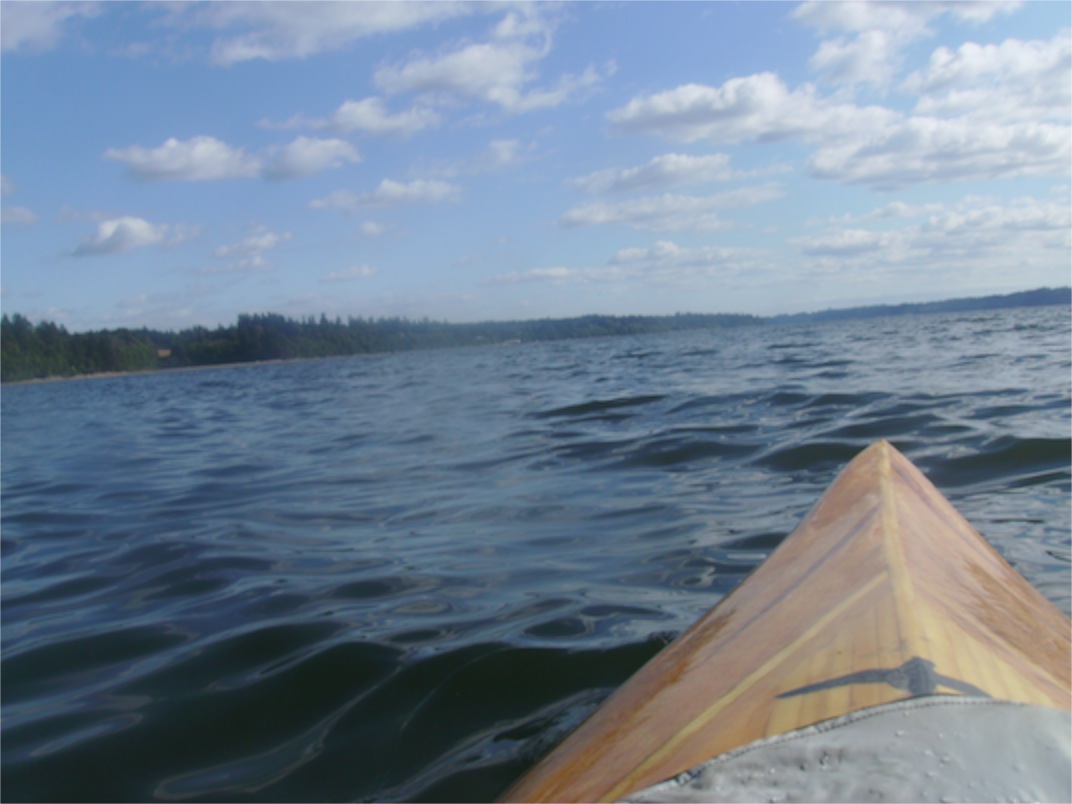
By the standards of a person from the center of the continent, the Puget Sound is big. Olympia is down at the southern end of the sound, and it is easy to see across the water to land on the other side, buy there are places where looking north gives a bit of perspective on the size of the inlet.
For the most part, when I am in a lake or other body of water that is relatively calm, I paddle along the shoreline. At home, a trip around the shoreline of Sheridan Lake is a good distance for a paddle. I regularly paddle on larger bodies of water such as Pactola Reservoir, where I don’t cover the entire shoreline in a single paddle, so I have practiced the art of paddling for a while in one direction and then turning around and coming back. One thing that I have learned is to paddle into the wind first so you have the wind at your back when you are heading back.
A true sailor would be quick to point out that the Puget Sound is not the ocean and that it has unique qualities that protect the sound from the wildest of open ocean waves and winds. An old salt, however, would remind those who pay attention that there are plenty of dangers in the sound with currents that reverse with the tides and waves that travel in different directions due to the effects of the shoreline. Caution is always the rule when guiding a craft in any water.
By the standards of the boats one sees in the harbor, my small 12’ kayak is tiny. It is even several feet shorter than the expedition kayaks that are rented at the marina. But I feel confident paddling the boat, even on big waters. It has been several years since I built the boat and I’ve paddled it in the Atlantic, the Pacific, Lakes Superior, Huron and Michigan, the Bay of Fundy and the Puget Sound. It has been down the Yellowstone and in the Missouri in three different states. It feels very stable as I sit in the boat, even in choppy waters.
But I know that I have a very small boat and that I do not know much about these waters, so when I paddle in the Puget Sound, I keep close to the shore and stay near familiar landmarks.
Yesterday there was a little wind, so the Sound was filled with small waves. This is the normal condition for the area. The glassy smooth water with no waves that we experienced the day be fore are a rare treat. If one were to only row or paddle when it was calm like that, one wouldn’t get on the water very often.
I was having fun with the small waves. I paddled a bit over a mile down the shoreline facing the wind. The wind gives a kayaker the illusion of speed, so each stroke of the paddle made me feel strong and confident in my little boat. The water would occasionally wash over the bow and sometimes even splash my face, but I was wearing a spray skirt, so the bottom half of my body was completely dry as I sat and paddled. The sun was out and he feel of the salt spray was a delight.
When I needed to turn around because of the time, I was able to go much faster, surfing a bit on the crests of the waves as I headed back to the marina and shore. The kayak is light to carry from the water and easy to secure to its cradle on the trailer next to the rowboat.
Paddling is a good metaphor for life. We can spend a lifetime of experiences and have ventured through only part of the wide reality of life. Each life covers just a tiny fraction of the whole of history. Humans are a tiny presence in the vastness of the universe.
History has taught us that even the largest supertanker is vulnerable to the effects of the wind and waves. There is no boat made by humans that is safe in every type of water. And there are storms that demonstrate the raw power of nature and the helplessness of humans in the face of such energy. We put the names of people on storms and track them with sophisticated instruments, but we are helpless to stop their effects. Some storms, like Katrina, cause so much destruction that we forever associate the effects of the storm with the name. I sometimes have wondered if such storms have any effects on those who share their name. Is the name Katrina less used since the storm? Perhaps I will learn some of the dynamics. The latest Atlantic Storm to reach hurricane strength shares the same name as our son.
I guess that my philosophy of boats reflects my philosophy of life in general. I am drawn to small boats. While others like to command large vessels, I am content with my tiny boats. I am aware that from the perspective of the vastness of the ocean, all boats are pretty small. I like to feel the wind and the water and have no need for a tightly sealed, climate-controlled cabin on my boats. My home is on the land and the water is a place where I travel as a visitor. I do not need sleeping quarters on a boat to enjoy the waters.
A small boat has plenty to teach about the water – enough for a lifetime. I have not fully mastered the techniques of paddling and rowing. I can generally make my boat go where I want, but I sometimes waste energy. I am inefficient in my application of the oar or paddle. I sometimes miss a stroke or make an awkward splash. And my path through the water often leaves a winding wake. A boat is a good teacher of humility. As much as I try to look experienced when others are watching, I know that I am no master of the craft or of the sea. I am a novice and a visitor.
In the vast ocean of life, we travel for a little while and cover only a little space. Even a long life is short compared to the life of the planet. But the journey can be filled with adventure, beauty and learning, and joy. Like a paddle in a small boat, the joy is in the journey.
May we each find interesting waters today.
Copyright © 2012 by Ted Huffman. I wrote this. If you want to copy it, please ask for permission. There is a contact me button at the bottom of this page. If you want to share my blog a friend, please direct your friend to my web site.
A Day to Remember
23/08/12 06:05
There are events that you imagine long before they occur. I don’t know when I first imagined myself graduating from college, but I thought about my graduation before it occurred. I played in he band, so I was at every graduation ceremony before I got my turn to walk into the room with a cap and gown. I thought about my wedding quite a bit before it occurred. Our ordinations were significant events. And there are lots of other similar events: births of children, Easter, Christmas, birthdays and anniversaries.
For some reason, when our grandson was born, I decided to make a row boat and name it in his honor. I imagined a small pulling boat with a wineglass transom with his name on it. I could imagine myself and a grandson going on all sorts of adventures with the boat, exploring harbors and quiet waters in the Puget Sound near his home, lakes and reservoirs around our home and rivers, ponds and other waters. A boat is a great tool for adventure and grandpas and grandsons seem well suited for adventures.
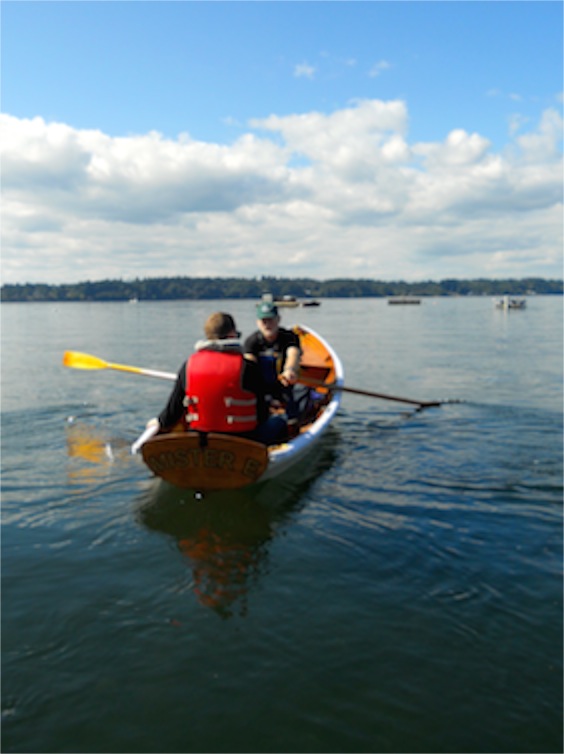 So I selected plans for a boat and began to build. It was taking shape by his first birthday and by then I realized that his name, Elliot Thomas, was a bit too long for the small transom of a yawl. By then his father had taken to calling him “Mister E.” The pun of that name with the word mystery amused me. Every child is, of course, a mystery that slowly reveals itself throughout his or her lifetime. The boat became the Mister E. When it got to finish stage, gold letters were ordered for the transom. A few rainy days caused the postponement of the formal launching ceremony, but I have had several fine hours of rowing since the little boat took to the water. Rowing suits me. It is good exercise and a fun way to share my love of the water with others. I have owned canoes and kayaks and they are wonderful craft. My kayaks have been personal vehicles, taking only one person at a time. We have tandem canoes, and a couple that easily take three people at a time, but canoes have their own feel and many people experience them as “tippy,” and they aren’t the best places for toddlers who are prone to sudden movements and who desire to stand up from time to time.
So I selected plans for a boat and began to build. It was taking shape by his first birthday and by then I realized that his name, Elliot Thomas, was a bit too long for the small transom of a yawl. By then his father had taken to calling him “Mister E.” The pun of that name with the word mystery amused me. Every child is, of course, a mystery that slowly reveals itself throughout his or her lifetime. The boat became the Mister E. When it got to finish stage, gold letters were ordered for the transom. A few rainy days caused the postponement of the formal launching ceremony, but I have had several fine hours of rowing since the little boat took to the water. Rowing suits me. It is good exercise and a fun way to share my love of the water with others. I have owned canoes and kayaks and they are wonderful craft. My kayaks have been personal vehicles, taking only one person at a time. We have tandem canoes, and a couple that easily take three people at a time, but canoes have their own feel and many people experience them as “tippy,” and they aren’t the best places for toddlers who are prone to sudden movements and who desire to stand up from time to time.
The events of last week included a trip to West Marine to get a properly fitted life jacket for our eighteen month-old grandson. He seemed as happy with the purchase as I was.
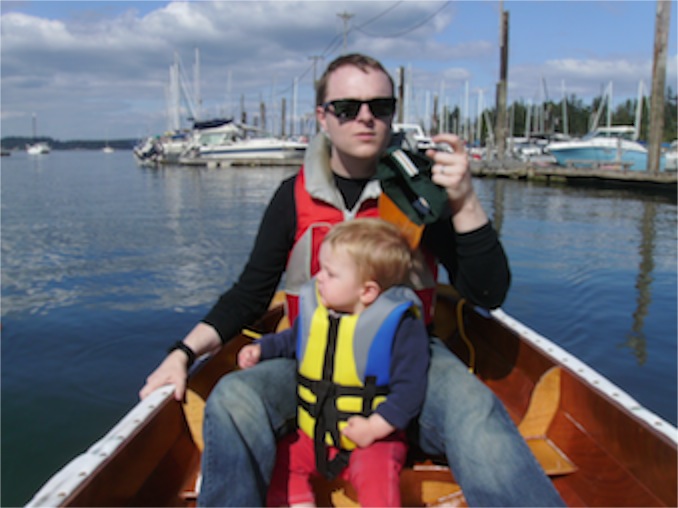 Yesterday was the day for the dream come true. Our son had taken the day off of work and so there were five of us heading toward Boston Harbor near Olympia, WA: two parents, two grandparents and Mister E. The day was perfect. It was sunny, but not too warm. There was no wind, a rare occurrence in the Puget Sound. The water was glassy and calm with no waves in sight. The tide was receding and there was plenty of gravel beach exposed. The little boat slid gracefully into the water. It looks great to my eye, just the right proportions for a pulling boat with enough rocker to hold that transom with its gold letters out of the water. I went to the harbor ahead of the rest and took a short paddle after launching the boat. Soon the others arrived.
Yesterday was the day for the dream come true. Our son had taken the day off of work and so there were five of us heading toward Boston Harbor near Olympia, WA: two parents, two grandparents and Mister E. The day was perfect. It was sunny, but not too warm. There was no wind, a rare occurrence in the Puget Sound. The water was glassy and calm with no waves in sight. The tide was receding and there was plenty of gravel beach exposed. The little boat slid gracefully into the water. It looks great to my eye, just the right proportions for a pulling boat with enough rocker to hold that transom with its gold letters out of the water. I went to the harbor ahead of the rest and took a short paddle after launching the boat. Soon the others arrived.
The first trip passengers for a trip around the harbor were Elliot and his dad. We took a look at a heron standing on a raft, explored some of the wooden boats that call Boston Harbor home and tied to get Elliot to see a harbor seal who was swimming in the area, but not interested in coming close to our boat. Next there were rides for Elliot and his mother, for grandma and grandpa and a few moments for pictures.
I was sitting alone in the boat with the others on the dock preparing to row to the boat launch to take the boat out of the water when Elliot made it clear that he wanted to get back in the boat. So I lifted him and stood him between my legs, where he rode as I rowed the boat to shore. It was a short trip in shallow water, but it was a great moment, nonetheless.
Some things in life are better in reality than they are in imagination. There is no way to really anticipate the birth of a child or grandchild. There is no way to imagine the joy of the wedding or graduation of a child. As much as I had anticipated taking a row with my grandson, the reality was way better than I could have imagined. It was a perfect day, with a confident and cheerful toddler who is at home in his world and interested in every detail from the creak of the oarlocks to the sound of the seagulls. He is at home in his world and each new adventure is a time of joyous discovery. And his parents are generous enough to allow his grandparents to share some of those discoveries.
There have been and will continue to be plenty of days when I wish we lived much closer to our grandson. But there is some truth to the old saying, “Absence makes the heart grow fonder.” Because our times of being face-to-face with our grandson are limited, they seem even more precious when they occur. And love transcends whatever physical distances we experience. We, of course, are extremely fortunate to have access to generous vacation leave and the ability to travel. And travel to be with family is a priority for Elliot’s parents. We get to see each other multiple times each year.
There are some things that you know you will remember for the rest of your life. Even if age and illness begin to rob me of the accuracy of my memories, I am convinced that there is nothing that can take away the pure joy of rowing a boat with my grandson.
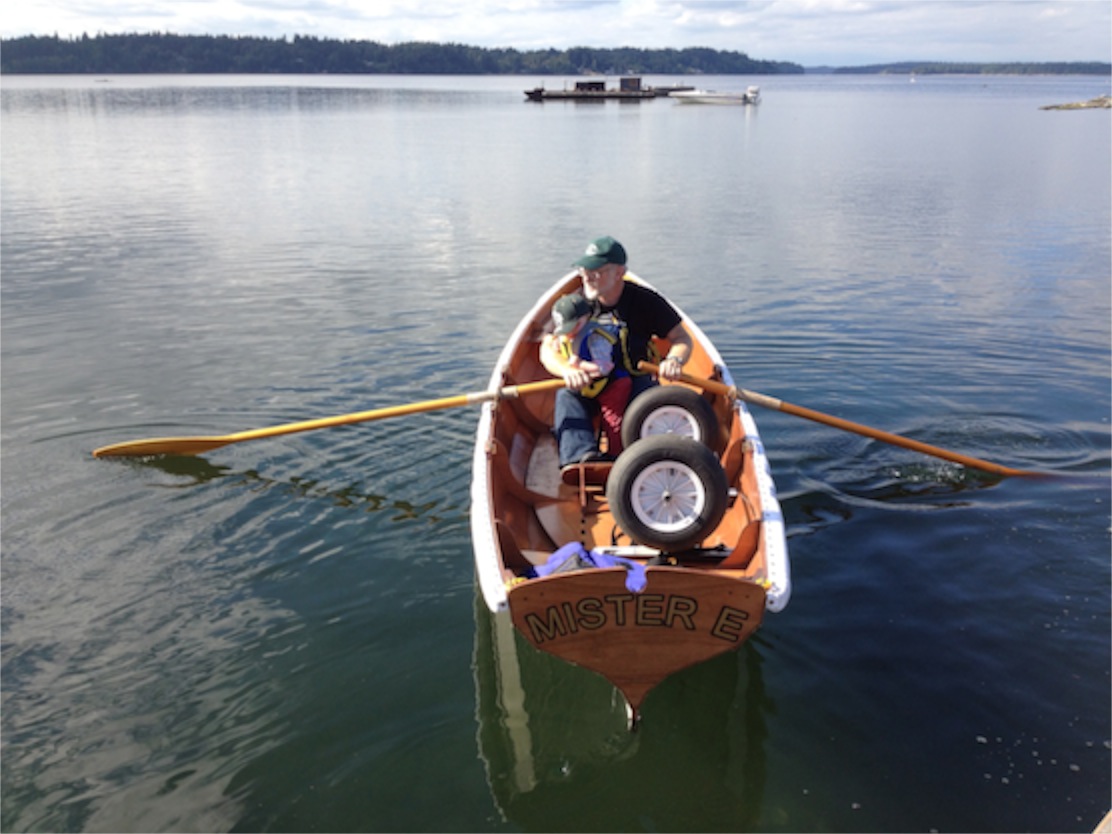
And the best part is that I can imagine doing it again and again and again.
For some reason, when our grandson was born, I decided to make a row boat and name it in his honor. I imagined a small pulling boat with a wineglass transom with his name on it. I could imagine myself and a grandson going on all sorts of adventures with the boat, exploring harbors and quiet waters in the Puget Sound near his home, lakes and reservoirs around our home and rivers, ponds and other waters. A boat is a great tool for adventure and grandpas and grandsons seem well suited for adventures.

The events of last week included a trip to West Marine to get a properly fitted life jacket for our eighteen month-old grandson. He seemed as happy with the purchase as I was.

The first trip passengers for a trip around the harbor were Elliot and his dad. We took a look at a heron standing on a raft, explored some of the wooden boats that call Boston Harbor home and tied to get Elliot to see a harbor seal who was swimming in the area, but not interested in coming close to our boat. Next there were rides for Elliot and his mother, for grandma and grandpa and a few moments for pictures.
I was sitting alone in the boat with the others on the dock preparing to row to the boat launch to take the boat out of the water when Elliot made it clear that he wanted to get back in the boat. So I lifted him and stood him between my legs, where he rode as I rowed the boat to shore. It was a short trip in shallow water, but it was a great moment, nonetheless.
Some things in life are better in reality than they are in imagination. There is no way to really anticipate the birth of a child or grandchild. There is no way to imagine the joy of the wedding or graduation of a child. As much as I had anticipated taking a row with my grandson, the reality was way better than I could have imagined. It was a perfect day, with a confident and cheerful toddler who is at home in his world and interested in every detail from the creak of the oarlocks to the sound of the seagulls. He is at home in his world and each new adventure is a time of joyous discovery. And his parents are generous enough to allow his grandparents to share some of those discoveries.
There have been and will continue to be plenty of days when I wish we lived much closer to our grandson. But there is some truth to the old saying, “Absence makes the heart grow fonder.” Because our times of being face-to-face with our grandson are limited, they seem even more precious when they occur. And love transcends whatever physical distances we experience. We, of course, are extremely fortunate to have access to generous vacation leave and the ability to travel. And travel to be with family is a priority for Elliot’s parents. We get to see each other multiple times each year.
There are some things that you know you will remember for the rest of your life. Even if age and illness begin to rob me of the accuracy of my memories, I am convinced that there is nothing that can take away the pure joy of rowing a boat with my grandson.

And the best part is that I can imagine doing it again and again and again.
Copyright © 2012 by Ted Huffman. I wrote this. If you want to copy it, please ask for permission. There is a contact me button at the bottom of this page. If you want to share my blog a friend, please direct your friend to my web site.
Journeys of Recovery
22/08/12 06:21
Our day came to a close yesterday with a lovely drive up the Columbia Gorge toward Portland, OR. We skirted the city on Interstate 205 just as the sun was going down and drove up I-5 in the dark to Olympia, pulling into our usual parking place next to our son’s home just before 11 p.m. It was a little later than usual for us, but we are practiced with setting up our camper in the dark and we were soon comfortably settled into our bed for a good night’s sleep. Today promises more wonderful adventures as we begin our last week of vacation.
Through the generosity of our Church Board, we were able to use some residual vacation from last year this year meaning that we have had more vacation than usual. It has been very good for us. We are deeply aware of how much we needed to heal and recover from all of the events of 2011. Grief is a powerful experience and when multiple losses occur in a short span of time people survive, but it takes more time than one might expect to get back to full strength and energy. This may be especially true for ministers, who absorb more than the usual amount of grief from the people we serve and the circumstances of our work.
Whatever the reason, we have a sense of being in a time of healing and recovery. We fell our passion for the ministry returning, our creativity for problem solving strengthening and our capacity for caring for those we serve increasing. The recovery is significant enough that others in our family can recognize it and comment on it from time to time. They say that we seem to have more energy, and that we “look better” than a year ago. There are some visible physical changes. I have lost enough weight for it to be visible. And, I know that I feel better.
Of course our family members have shared the loss. They, too, have been in a season of recovery from grief. But there are other traumas that have been a part of their journeys. Yesterday we had a delightful visit with Susan’s sister and her husband. About six weeks ago, Carol had a serious accident with her bicycle. We probably won’t ever know exactly what happened, but the effects can be enumerated. She fractured her leg high up, close to her hip, smashed her wrist enough that it required a complex reconstruction with a plate and screws, lacerated her forehead and broke five bones in her face, including smashing her nose. She experienced traumatic brain injury, though no permanent damage was done to her brain. There were other injuries as well. After an emergency helicopter transfer to a Level I Trauma Center, she spent some time in an Intensive Care Unit and additional time in a regular hospital room before being discharged to return home for her recovery. She has slowly graduated from an walker to a cane and now is able to get about without much assistance from others.
We have been following her accident and recovery to this point from a distance and relying on the descriptions of other family members. So it was wonderfully reassuring to see her face-to-face. She looks very good to our eyes and her personality continues to shine brightly. But she is still very frail. It takes a long time for her to walk a short distance. She is very cautious with each step. She tires easily. It is going to be many months before she returns to full strength and can resume all of her everyday activities.
Life presents all of us with events and circumstances from which we need to recover. Most of those things come at least in part as a surprise. Carol had no way to know that she would be involved in an accident before it occurred. We cannot predict the events of our lives. What we do know is that the bodies we inhabit do not last forever. In addition to the trauma of accidents, we are vulnerable to diseases, many of which we do not fully understand. There are all kinds of events that can cause psychological stress and discomfort. The normal process of aging means that we have to learn with decreased capacities and abilities.
What is more interesting to me than all of the things that can go wrong, is the capacity of our human bodies and spirits for genuine recovery. We go through life-alerting events and we heal. Human bodies have incredible powers of recovery and restoration. With a little help from doctors and nurses we are capable of surviving injuries and illnesses that just a few decades ago would have been fatal. We are not immortal. Each of us will one day come to the end of our lives. But along the way we are each given opportunities to experience the power of healing and recovery.
What I have discovered from my own experiences and from the good fortune of being allowed to walk alongside others as they journey towards recovery is that we never return to “normal” after a major life-changing event. You don’t get “over” the death of a loved one. You don’t go back to the way things were before an accident or major illness. What happens, instead, is that you discover a new normal. You survive. You learn to live with grief. You become capable of living fully in the presence of pain. And, often, with the recovery comes maturity and clarity. Reminders of our mortality help us reassess our priorities and give us the opportunity to make new decisions about how we will live our lives.
Survivors often become more compassionate and caring. They acquire great abilities to assist others on the road to recovery. Health care providers have long known of the power of survivors groups in the process of healing.
The Christian church is a community of survivors. We take as our founding story the passion of Jesus Christ. Sacrifice and loss are at the core of our story. We assume that each generation can benefit from the experiences of previous generations. We begin not by denying the power and presence of death, but by affirming that death is not the end. Healing and recovery are possible in the darkest moments of this life. And our lives are a preparation for something greater that we are not yet able to even imagine. Each injury and each illness is an opportunity to glimpse that we are part of an even greater whole and that our role in this universe is one that is rich with purpose and meaning.
But we do not fully understand. With faith we journey toward greater understanding knowing that full understanding is not a part of this life. As Paul wrote to the Corinthians, “For now I see as in a mirror dimly, but then I will see face-to-face. Now I know in part, but then I will know fully even as I have been fully known.” The part that we do know is truly wonderful. It is enough to keep us searching for full knowledge.
That, like healing, takes time.
Through the generosity of our Church Board, we were able to use some residual vacation from last year this year meaning that we have had more vacation than usual. It has been very good for us. We are deeply aware of how much we needed to heal and recover from all of the events of 2011. Grief is a powerful experience and when multiple losses occur in a short span of time people survive, but it takes more time than one might expect to get back to full strength and energy. This may be especially true for ministers, who absorb more than the usual amount of grief from the people we serve and the circumstances of our work.
Whatever the reason, we have a sense of being in a time of healing and recovery. We fell our passion for the ministry returning, our creativity for problem solving strengthening and our capacity for caring for those we serve increasing. The recovery is significant enough that others in our family can recognize it and comment on it from time to time. They say that we seem to have more energy, and that we “look better” than a year ago. There are some visible physical changes. I have lost enough weight for it to be visible. And, I know that I feel better.
Of course our family members have shared the loss. They, too, have been in a season of recovery from grief. But there are other traumas that have been a part of their journeys. Yesterday we had a delightful visit with Susan’s sister and her husband. About six weeks ago, Carol had a serious accident with her bicycle. We probably won’t ever know exactly what happened, but the effects can be enumerated. She fractured her leg high up, close to her hip, smashed her wrist enough that it required a complex reconstruction with a plate and screws, lacerated her forehead and broke five bones in her face, including smashing her nose. She experienced traumatic brain injury, though no permanent damage was done to her brain. There were other injuries as well. After an emergency helicopter transfer to a Level I Trauma Center, she spent some time in an Intensive Care Unit and additional time in a regular hospital room before being discharged to return home for her recovery. She has slowly graduated from an walker to a cane and now is able to get about without much assistance from others.
We have been following her accident and recovery to this point from a distance and relying on the descriptions of other family members. So it was wonderfully reassuring to see her face-to-face. She looks very good to our eyes and her personality continues to shine brightly. But she is still very frail. It takes a long time for her to walk a short distance. She is very cautious with each step. She tires easily. It is going to be many months before she returns to full strength and can resume all of her everyday activities.
Life presents all of us with events and circumstances from which we need to recover. Most of those things come at least in part as a surprise. Carol had no way to know that she would be involved in an accident before it occurred. We cannot predict the events of our lives. What we do know is that the bodies we inhabit do not last forever. In addition to the trauma of accidents, we are vulnerable to diseases, many of which we do not fully understand. There are all kinds of events that can cause psychological stress and discomfort. The normal process of aging means that we have to learn with decreased capacities and abilities.
What is more interesting to me than all of the things that can go wrong, is the capacity of our human bodies and spirits for genuine recovery. We go through life-alerting events and we heal. Human bodies have incredible powers of recovery and restoration. With a little help from doctors and nurses we are capable of surviving injuries and illnesses that just a few decades ago would have been fatal. We are not immortal. Each of us will one day come to the end of our lives. But along the way we are each given opportunities to experience the power of healing and recovery.
What I have discovered from my own experiences and from the good fortune of being allowed to walk alongside others as they journey towards recovery is that we never return to “normal” after a major life-changing event. You don’t get “over” the death of a loved one. You don’t go back to the way things were before an accident or major illness. What happens, instead, is that you discover a new normal. You survive. You learn to live with grief. You become capable of living fully in the presence of pain. And, often, with the recovery comes maturity and clarity. Reminders of our mortality help us reassess our priorities and give us the opportunity to make new decisions about how we will live our lives.
Survivors often become more compassionate and caring. They acquire great abilities to assist others on the road to recovery. Health care providers have long known of the power of survivors groups in the process of healing.
The Christian church is a community of survivors. We take as our founding story the passion of Jesus Christ. Sacrifice and loss are at the core of our story. We assume that each generation can benefit from the experiences of previous generations. We begin not by denying the power and presence of death, but by affirming that death is not the end. Healing and recovery are possible in the darkest moments of this life. And our lives are a preparation for something greater that we are not yet able to even imagine. Each injury and each illness is an opportunity to glimpse that we are part of an even greater whole and that our role in this universe is one that is rich with purpose and meaning.
But we do not fully understand. With faith we journey toward greater understanding knowing that full understanding is not a part of this life. As Paul wrote to the Corinthians, “For now I see as in a mirror dimly, but then I will see face-to-face. Now I know in part, but then I will know fully even as I have been fully known.” The part that we do know is truly wonderful. It is enough to keep us searching for full knowledge.
That, like healing, takes time.
Copyright © 2012 by Ted Huffman. I wrote this. If you want to copy it, please ask for permission. There is a contact me button at the bottom of this page. If you want to share my blog a friend, please direct your friend to my web site.
Hope in the Depths
21/08/12 06:20
Although he was incredibly successful, director Tony Scott lived with a fear of failure. He rose to fame with the movie “Top Gun” and became one of Hollywood’s most sought-after directors. In 1995, after the successful Naval Adventure, “Crimson Tide” appeared he said, "The biggest edge I live on is directing. That's the most scary, dangerous thing you can do in your life. The scariest thing in my life is the first morning of production on all my movies. It's the fear of failing, the loss of face and a sense of guilt that everybody puts their faith in you and not coming through."
Now the world will never know the dynamics of the brain of the creative genius. We will never know what problems beset him or what demons he struggled with. We will never know what he was thinking when he stopped his car on a famous Los Angeles bridge. The bridge has appeared in a lot of television and movies including “The Fast and the Furious,” “Gone in 60 Seconds,” “Charlie’s Angels” and “To Live and Die in L.A.” A witness said he hesitated briefly and then dove 7 stories from the bridge to his death.
The family is left trying to put their lives back together.
There are clues. He left notes to loved ones.
All of those private and personal messages are none of my business. I want to respect the privacy of the family. And I know from other experiences that we will never know what happened. All we know is that at the moment Tony Scott took that fateful step off of the bridge, he was not in his right mind.
His pain might have stopped seconds after he hit the surface of the water, but the pain will never go away for his family.
People will speculate about the death. They will ask, “What could have been don to prevent it?” There are some generic answers. We know quite a bit about suicide prevention. I have been through the latest ASIST (Applied Suicide Intervention Skills Training) course. I carry the card in my wallet. I have successfully intervened with people who have been thinking of suicide. I consider myself to be informed and professional in my approach to those in need.
But I received a call last night about another death by suicide. One that it would be fair to say I could see coming. It was also one that I was powerless to prevent. It is not my story to tell and there is much that it is not appropriate for me to write about in this blog or any other place, but there are a few things that I can write without betraying confidences.
I have known the man who died yesterday for most of his life. I met him when he was a young teen. I knew his parents and grandparents and aunts and uncles. I have kept in touch with his family through all kinds of life events and transitions. I can remember moments of celebration and moments of deep grief.
I know that he was profoundly troubled. I have invested a lot of time in his family and his relationships in the past year. I tried to intervene and offer my support. I tried to get help for him. I was the wrong person, I guess. When my calls went unanswered and my attempts to reach him through his brother were not successful, I felt that my options had run out.
When I received the phone call last night a thousand memories flooded my brain. One memory, however, seemed to dominate. I remember the night I received the phone call with the news of the death of his younger brother. I remember the feeling of the awful, terrible conversation I shared with his father.
Here is part of the story. Theirs was a relatively small family. Two parents and three boys. The twins were born first. Now the parents have divorced and two of the three boys have died by suicide. Like his brothers, the surviving man never married. Relationships in the family are strained. You could blame the divorce. You could blame the effects of alcohol abuse. You could blame chronic mental illness that has been suffered by various members of the family.
I know I keep trying to find something to blame.
The truth is that we will never know the whole story. Unlike the death of Tony Scott, there were no witnesses. There were no notes.
Life doesn’t have a “rewind” button. You can’t stop the action and go back and start over. There are plenty of things that happen that cannot be changed. Some decisions have permanent results.
Whatever grief and loss I am experiencing, whatever sadness I feel, whatever pain I know – these are all small in comparison to the waves that are crashing over the surviving brother, father and mother. They have huge estrangements and probably can’t share their grief in the ways that other families might. But their pain is no less real. And there is no one who knows this family who isn’t thinking about the one surviving brother and wondering if he, too, will die by suicide.
If I were prone to swearing, I would be swearing right now. Sometimes the circumstances of life are beyond the power to express with polite language.
This is a moment for genuine hope.
I’m not talking about some simple, easy concept that is about sunshine and laughter and good times. The hope we need to survive in this world needs to be stronger and more robust. If it were easy, it wouldn’t be sufficient for the real tragedies of this world. I’m not searching for easy answers or simple hope.
But I know of another kind of hope. It is the toughest, watched my own son die, know the depths of pain, hope. It is the “I will never leave you no matter what” hope forged in the depths of slavery and injustice and the stories of our people who have often been only barely surviving.
We are survivors. We have inherited generations of pain and suffering and sorrow and we are still here.
We will survive this. I’ve been around enough to know that it won’t be easy. I am dreading some of the phone calls that I need to make today. But I will make them. We will keep talking. We will keep speaking of our faith. We will continue to support one another. And somewhere, in the depths of these moments, we will once again discover the kind of hope that never dies.
Faith, hope and love remain even when there is nothing else left.
Now the world will never know the dynamics of the brain of the creative genius. We will never know what problems beset him or what demons he struggled with. We will never know what he was thinking when he stopped his car on a famous Los Angeles bridge. The bridge has appeared in a lot of television and movies including “The Fast and the Furious,” “Gone in 60 Seconds,” “Charlie’s Angels” and “To Live and Die in L.A.” A witness said he hesitated briefly and then dove 7 stories from the bridge to his death.
The family is left trying to put their lives back together.
There are clues. He left notes to loved ones.
All of those private and personal messages are none of my business. I want to respect the privacy of the family. And I know from other experiences that we will never know what happened. All we know is that at the moment Tony Scott took that fateful step off of the bridge, he was not in his right mind.
His pain might have stopped seconds after he hit the surface of the water, but the pain will never go away for his family.
People will speculate about the death. They will ask, “What could have been don to prevent it?” There are some generic answers. We know quite a bit about suicide prevention. I have been through the latest ASIST (Applied Suicide Intervention Skills Training) course. I carry the card in my wallet. I have successfully intervened with people who have been thinking of suicide. I consider myself to be informed and professional in my approach to those in need.
But I received a call last night about another death by suicide. One that it would be fair to say I could see coming. It was also one that I was powerless to prevent. It is not my story to tell and there is much that it is not appropriate for me to write about in this blog or any other place, but there are a few things that I can write without betraying confidences.
I have known the man who died yesterday for most of his life. I met him when he was a young teen. I knew his parents and grandparents and aunts and uncles. I have kept in touch with his family through all kinds of life events and transitions. I can remember moments of celebration and moments of deep grief.
I know that he was profoundly troubled. I have invested a lot of time in his family and his relationships in the past year. I tried to intervene and offer my support. I tried to get help for him. I was the wrong person, I guess. When my calls went unanswered and my attempts to reach him through his brother were not successful, I felt that my options had run out.
When I received the phone call last night a thousand memories flooded my brain. One memory, however, seemed to dominate. I remember the night I received the phone call with the news of the death of his younger brother. I remember the feeling of the awful, terrible conversation I shared with his father.
Here is part of the story. Theirs was a relatively small family. Two parents and three boys. The twins were born first. Now the parents have divorced and two of the three boys have died by suicide. Like his brothers, the surviving man never married. Relationships in the family are strained. You could blame the divorce. You could blame the effects of alcohol abuse. You could blame chronic mental illness that has been suffered by various members of the family.
I know I keep trying to find something to blame.
The truth is that we will never know the whole story. Unlike the death of Tony Scott, there were no witnesses. There were no notes.
Life doesn’t have a “rewind” button. You can’t stop the action and go back and start over. There are plenty of things that happen that cannot be changed. Some decisions have permanent results.
Whatever grief and loss I am experiencing, whatever sadness I feel, whatever pain I know – these are all small in comparison to the waves that are crashing over the surviving brother, father and mother. They have huge estrangements and probably can’t share their grief in the ways that other families might. But their pain is no less real. And there is no one who knows this family who isn’t thinking about the one surviving brother and wondering if he, too, will die by suicide.
If I were prone to swearing, I would be swearing right now. Sometimes the circumstances of life are beyond the power to express with polite language.
This is a moment for genuine hope.
I’m not talking about some simple, easy concept that is about sunshine and laughter and good times. The hope we need to survive in this world needs to be stronger and more robust. If it were easy, it wouldn’t be sufficient for the real tragedies of this world. I’m not searching for easy answers or simple hope.
But I know of another kind of hope. It is the toughest, watched my own son die, know the depths of pain, hope. It is the “I will never leave you no matter what” hope forged in the depths of slavery and injustice and the stories of our people who have often been only barely surviving.
We are survivors. We have inherited generations of pain and suffering and sorrow and we are still here.
We will survive this. I’ve been around enough to know that it won’t be easy. I am dreading some of the phone calls that I need to make today. But I will make them. We will keep talking. We will keep speaking of our faith. We will continue to support one another. And somewhere, in the depths of these moments, we will once again discover the kind of hope that never dies.
Faith, hope and love remain even when there is nothing else left.
Copyright © 2012 by Ted Huffman. I wrote this. If you want to copy it, please ask for permission. There is a contact me button at the bottom of this page. If you want to share my blog a friend, please direct your friend to my web site.
Amazing World
20/08/12 03:17
Several years ago, when our children were teenagers, we took a family vacation to the Pacific Northwest. We were rather tightly packed into our family car. In addition to our two children, we had an exchange student from Japan that year. We headed west from Rapid City with the intention of visiting family and showing our guest a bit of the United States. We had a small pop up camping trailer so we were able to keep expenses low. We took a swing through Yellowstone National Park, visited Boise, Idaho, where we had once lived, and headed west to Portland, Oregon, to visit family and see the sights. From Portland, we went up to Seattle and out onto Whidbey Island before heading east across Washington and Montana on our way home. It was a grand adventure for our family and we visited a lot of territory and saw a lot of sights along the way.
While in Seattle on that trip, we paid a visit to the Pike Street Market and wandered through the Seattle Aquarium on the waterfront. I remember our delight in the exhibits. We especially enjoyed the tanks of sea stars and the brightly colored tropical fish. There were also good displays of sea otters as well as river otters.
The years pass and the memories become less precise, but the mood of the visit has lingered. So yesterday, when we had time, we decided to return to the Aquarium. We thought that our grandson might enjoy the outing and looking at the fish.
I was predisposed to enjoy the adventure. After all, spending time with our son and daughter in law and grandson is a delight for me. Our family has always enjoyed adventures and we were returning to a place that held fond memories. The pleasant and wonderful surprise of the day was the delight and excitement of our grandson. When you are 18 months old, the entire world is an adventure filled with wonderful surprises.
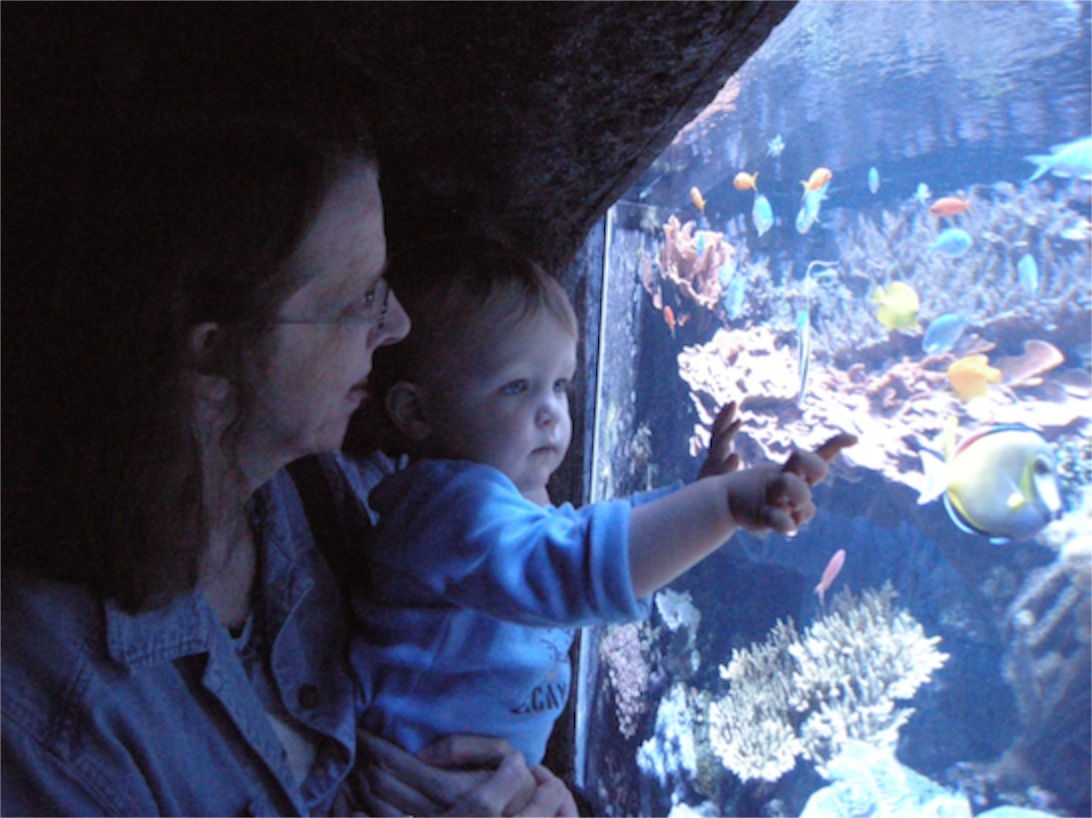
Elliot doesn’t have a very large vocabulary at this point, but he is doing a lot of vocalizing and imitating of sounds. We had no problem, however, interpreting his exclamations of “Wow!” and “Ooh!” and “Woo!” and “Oh!” It was powerful to put our faces next to his and to look at the world from his perspective. This is, after all, an amazingly diverse and complex world filled with wonders at every turn.
 I thought that he might enjoy looking at the divers in the tanks, but he didn’t like them. They wore diving masks on their faces and appeared strange to Elliot. He didn’t want to look at them, even when they waved at him through the glass of the tank. What he did want to look at were bright colors and rapidly moving creatures. He could recognize some features such as eyes, but he has no experience with fish. We wandered from exhibit to exhibit at a slow pace, lingering longer at displays that were close to the floor where he could stand and look.
I thought that he might enjoy looking at the divers in the tanks, but he didn’t like them. They wore diving masks on their faces and appeared strange to Elliot. He didn’t want to look at them, even when they waved at him through the glass of the tank. What he did want to look at were bright colors and rapidly moving creatures. He could recognize some features such as eyes, but he has no experience with fish. We wandered from exhibit to exhibit at a slow pace, lingering longer at displays that were close to the floor where he could stand and look.
The wonder with which he greets his world is a quality that we oldsters sometimes forget. Awe and wonder are the appropriate responses to the beauty and diversity of creation. We have been allowed to see so many magnificent sights along our way. And just when we think we have seen it all, we discover that there is so much that we missed when we looked the first time. There are enough new discoveries and wonders to last a lifetime and more.
Jesus talked about receiving God’s realm as a child. “Unless you become as one of these little ones, you will never enter God’s realm.” Once again we were reminded that having a child as a guide is a good way to great the world. As the prophet Isaiah reminds us, on the journey toward peace, “A little child shall lead them.”
 Seattle is a bustling town. It is the height of tourist season. And the weather was gorgeous. The result is that the waterfront and Pike Street Market were filled with lots and lots of people. I think that even on a calm day, Pike Street Market is an overwhelming place. There are layers and layers of shops and stalls and stands with narrow passageways and a lot of people. There are vendors shouting about their goods and musicians busking for grocery money. There are street performers and a few shops, such as the fish market right at the entryway, that are an entertainment just to watch. The fish sellers were throwing huge fish back and forth, shoveling ice, making sales, ringing a bell, and chanting in unison. They sang and laughed and entertained even those of us who weren’t buying at the moment.
Seattle is a bustling town. It is the height of tourist season. And the weather was gorgeous. The result is that the waterfront and Pike Street Market were filled with lots and lots of people. I think that even on a calm day, Pike Street Market is an overwhelming place. There are layers and layers of shops and stalls and stands with narrow passageways and a lot of people. There are vendors shouting about their goods and musicians busking for grocery money. There are street performers and a few shops, such as the fish market right at the entryway, that are an entertainment just to watch. The fish sellers were throwing huge fish back and forth, shoveling ice, making sales, ringing a bell, and chanting in unison. They sang and laughed and entertained even those of us who weren’t buying at the moment.
It is an intense crowd and we are, at our core, small town people who aren’t always comfortable in crowds. After a while we needed a break and retreated to the relative calm of the Market Starbucks – the first of the now nationwide chain of coffee houses.
On the way we met someone we knew! Even in a crowded city, there are faces in the crowd who seem familiar. Katie Umenthum, the daughter of the moderator of our congregation, was visiting Seattle with her fiancé, Rob. Out of the crowd two faces emerged as complete persons, whose stories we knew. We’ve watched Katie grow up, shared her confirmation journey with her and walked with her family through the death of her father. She has, however, been away at school and we have followed her mostly through her occasional visits home and the stories her mother shares. I guess we all need to have a “small world” encounter from time to time. It was another reminder that there are yet more surprises to be found for those who are open to receiving them.
Even on a Sunday, when the traffic is light, Seattle is more than an hour’s drive form Olympia, so the time quickly came for us to return home. As we went to bed last night, I could still picture our grandson and his expressions of delight.
This really is an amazing world. Wow!
While in Seattle on that trip, we paid a visit to the Pike Street Market and wandered through the Seattle Aquarium on the waterfront. I remember our delight in the exhibits. We especially enjoyed the tanks of sea stars and the brightly colored tropical fish. There were also good displays of sea otters as well as river otters.
The years pass and the memories become less precise, but the mood of the visit has lingered. So yesterday, when we had time, we decided to return to the Aquarium. We thought that our grandson might enjoy the outing and looking at the fish.
I was predisposed to enjoy the adventure. After all, spending time with our son and daughter in law and grandson is a delight for me. Our family has always enjoyed adventures and we were returning to a place that held fond memories. The pleasant and wonderful surprise of the day was the delight and excitement of our grandson. When you are 18 months old, the entire world is an adventure filled with wonderful surprises.

Elliot doesn’t have a very large vocabulary at this point, but he is doing a lot of vocalizing and imitating of sounds. We had no problem, however, interpreting his exclamations of “Wow!” and “Ooh!” and “Woo!” and “Oh!” It was powerful to put our faces next to his and to look at the world from his perspective. This is, after all, an amazingly diverse and complex world filled with wonders at every turn.

The wonder with which he greets his world is a quality that we oldsters sometimes forget. Awe and wonder are the appropriate responses to the beauty and diversity of creation. We have been allowed to see so many magnificent sights along our way. And just when we think we have seen it all, we discover that there is so much that we missed when we looked the first time. There are enough new discoveries and wonders to last a lifetime and more.
Jesus talked about receiving God’s realm as a child. “Unless you become as one of these little ones, you will never enter God’s realm.” Once again we were reminded that having a child as a guide is a good way to great the world. As the prophet Isaiah reminds us, on the journey toward peace, “A little child shall lead them.”

It is an intense crowd and we are, at our core, small town people who aren’t always comfortable in crowds. After a while we needed a break and retreated to the relative calm of the Market Starbucks – the first of the now nationwide chain of coffee houses.
On the way we met someone we knew! Even in a crowded city, there are faces in the crowd who seem familiar. Katie Umenthum, the daughter of the moderator of our congregation, was visiting Seattle with her fiancé, Rob. Out of the crowd two faces emerged as complete persons, whose stories we knew. We’ve watched Katie grow up, shared her confirmation journey with her and walked with her family through the death of her father. She has, however, been away at school and we have followed her mostly through her occasional visits home and the stories her mother shares. I guess we all need to have a “small world” encounter from time to time. It was another reminder that there are yet more surprises to be found for those who are open to receiving them.
Even on a Sunday, when the traffic is light, Seattle is more than an hour’s drive form Olympia, so the time quickly came for us to return home. As we went to bed last night, I could still picture our grandson and his expressions of delight.
This really is an amazing world. Wow!
Copyright © 2012 by Ted Huffman. I wrote this. If you want to copy it, please ask for permission. There is a contact me button at the bottom of this page. If you want to share my blog a friend, please direct your friend to my web site.
Facing an uncertain future
19/08/12 04:33
I don’t know where I first learned the concept of membership in the church. It was one of those things that was always assumed in our family. Our parents belonged to the church. Our grandparents belonged to the church. It was assumed that we would one day belong to the church. We had friends who belonged to different churches, but I wasn’t aware of the people in our circle that didn’t belong to any church. I’m sure that there were folks who weren’t active in churches, but participation in a church was pretty much assumed in our small town.
From a young age, I was aware that membership in the church meant belonging to something bigger than just a local congregation. We went to camp every summer and I was aware that the camp was made up of people from other congregations, but that we all belonged to the same church. We received visits from missionaries who served in distant locations, and I understood that even though they lived and worked in other countries, they were a part of the same church.
My awareness of the connections between congregations grew when I went through the classes to prepare us for confirmation. It was there that I first began to get a sense of the history of Christianity and of how our denomination fit into the family of Christian churches. I know now that the view of Christianity that was presented in those classes was a bit skewed, or at least biased toward the story of our denomination. The books we used and the plan of learning we followed were products of our denomination.
What I didn’t realize until much later is that our culture was already shifting. Like many other things in our society, people were questioning their relationships to the institutional church. The role of the church in the lives of people was already undergoing dramatic changes. The assumptions that framed my life and relationships were being questioned at many levels and new ways of organizing our life together were well underway. The decline in the power and authority of denominations in religious life and in the structure of society was already shifting, though it would take years – even decades – before I felt many of the effects of the changes.
While the local congregation remains at the heart of the institutional church, the level of commitment to and participation in the local church is quite different from what it was for my parents’ and grandparents’ time. For the most part, people no longer see membership in a church as a lifelong commitment. They participate for a while – for as long as the church is meaningful in their lives. People may participate in a variety of congregations throughout their lives, as they move from one place to another, and as their interests and commitments change. Belonging to a church doesn’t really mean that the church is at the center of the lives of people. It is one organization among many that places claims on their time and resources. It is one charity among many that receives contributions from family budgets.
I’m sure that when our forebears signed the Mayflower Compact before stepping onto the shores of this continent, they never imagined that they were laying the seeds of a denomination. The institutional church that grew out of their mutual commitment would amaze them. The national setting of the United Church of Christ, while significantly smaller than it was a few decades ago, is still quite an institution. Together we own a 9-story office building in downtown Cleveland, Ohio. We have an impressive chapel with a wall of windows so that it is evident to those who pass by that worship is at the heart of our business. But much of the rest of the building is like many other office buildings, with people going to and from meetings, phones ringing, receptionists greeting people, computer screens glowing and accountants keeping track of the flow of income and expense.
The activities of our denomination at the Conference and National levels, however, is significantly reduced from what it was when I was a child growing up. As I grew into my adulthood and became a minister, I simply assumed the presence of strong state and national structures to support and resource the church. When I graduated from seminary, the denomination was the source of support for pastors and the place to go for resources for ministry. If we had a question about how to conduct a specific type of service, help was just a phone call away. The denomination provided leaders for meetings and inspiration for pastors. The denomination operated a large and successful press and maintained a warehouse full of resources. We used those resources ever day in our work and believed that they would always be present.
It doesn’t work that way any more. The work of the Conference is not the product of paid staff as much as it is the collaborative work of the pastors and lay members of the Conference. Far from being the place that I turn for help these days, it is one more institution that is in need of support. I give of my time and financial resources to maintain the ministries of the Conference, but see it much more as a drain on my time and energies than as a source of resources and support.
There is a similar process going on in the National Setting of the Church. I have said goodbye to so many staff members whose jobs no longer exist that it has become routine. There have been so many rounds of lay offs that I have lost count. One of my current projects is the crafting of a farewell liturgy for the United Church of Christ Educational Consultants. For the last twenty years, we have shared responsibility for connecting the educational ministries of local congregations with denominational structures. Our next meeting will be our last. The worship we share will be a time of departing. No new structure will replace us. No responsibilities for our work will be assigned. Congregations will have to find resources from other sources.
I know that change is part of the way of life. God does not call us to build institutions, but to engage in ministries. Saying goodbye to the past is part of the way that we greet the future. Still there is sadness in the loss. There are people that I will miss. There is uncertainty in the future. I think that I understand the emotions of the Pilgrims as they watched the shores of England fade on the horizon as they headed toward an uncertain future. I know, though only partially, the feelings of those pioneers as they witnessed their numbers dwindle during the first harsh winter in the new world. Now I need to connect with the strength of their faith as I once again am called to trust God to shape the future and call forth the church to serve in the new times that we face.
From a young age, I was aware that membership in the church meant belonging to something bigger than just a local congregation. We went to camp every summer and I was aware that the camp was made up of people from other congregations, but that we all belonged to the same church. We received visits from missionaries who served in distant locations, and I understood that even though they lived and worked in other countries, they were a part of the same church.
My awareness of the connections between congregations grew when I went through the classes to prepare us for confirmation. It was there that I first began to get a sense of the history of Christianity and of how our denomination fit into the family of Christian churches. I know now that the view of Christianity that was presented in those classes was a bit skewed, or at least biased toward the story of our denomination. The books we used and the plan of learning we followed were products of our denomination.
What I didn’t realize until much later is that our culture was already shifting. Like many other things in our society, people were questioning their relationships to the institutional church. The role of the church in the lives of people was already undergoing dramatic changes. The assumptions that framed my life and relationships were being questioned at many levels and new ways of organizing our life together were well underway. The decline in the power and authority of denominations in religious life and in the structure of society was already shifting, though it would take years – even decades – before I felt many of the effects of the changes.
While the local congregation remains at the heart of the institutional church, the level of commitment to and participation in the local church is quite different from what it was for my parents’ and grandparents’ time. For the most part, people no longer see membership in a church as a lifelong commitment. They participate for a while – for as long as the church is meaningful in their lives. People may participate in a variety of congregations throughout their lives, as they move from one place to another, and as their interests and commitments change. Belonging to a church doesn’t really mean that the church is at the center of the lives of people. It is one organization among many that places claims on their time and resources. It is one charity among many that receives contributions from family budgets.
I’m sure that when our forebears signed the Mayflower Compact before stepping onto the shores of this continent, they never imagined that they were laying the seeds of a denomination. The institutional church that grew out of their mutual commitment would amaze them. The national setting of the United Church of Christ, while significantly smaller than it was a few decades ago, is still quite an institution. Together we own a 9-story office building in downtown Cleveland, Ohio. We have an impressive chapel with a wall of windows so that it is evident to those who pass by that worship is at the heart of our business. But much of the rest of the building is like many other office buildings, with people going to and from meetings, phones ringing, receptionists greeting people, computer screens glowing and accountants keeping track of the flow of income and expense.
The activities of our denomination at the Conference and National levels, however, is significantly reduced from what it was when I was a child growing up. As I grew into my adulthood and became a minister, I simply assumed the presence of strong state and national structures to support and resource the church. When I graduated from seminary, the denomination was the source of support for pastors and the place to go for resources for ministry. If we had a question about how to conduct a specific type of service, help was just a phone call away. The denomination provided leaders for meetings and inspiration for pastors. The denomination operated a large and successful press and maintained a warehouse full of resources. We used those resources ever day in our work and believed that they would always be present.
It doesn’t work that way any more. The work of the Conference is not the product of paid staff as much as it is the collaborative work of the pastors and lay members of the Conference. Far from being the place that I turn for help these days, it is one more institution that is in need of support. I give of my time and financial resources to maintain the ministries of the Conference, but see it much more as a drain on my time and energies than as a source of resources and support.
There is a similar process going on in the National Setting of the Church. I have said goodbye to so many staff members whose jobs no longer exist that it has become routine. There have been so many rounds of lay offs that I have lost count. One of my current projects is the crafting of a farewell liturgy for the United Church of Christ Educational Consultants. For the last twenty years, we have shared responsibility for connecting the educational ministries of local congregations with denominational structures. Our next meeting will be our last. The worship we share will be a time of departing. No new structure will replace us. No responsibilities for our work will be assigned. Congregations will have to find resources from other sources.
I know that change is part of the way of life. God does not call us to build institutions, but to engage in ministries. Saying goodbye to the past is part of the way that we greet the future. Still there is sadness in the loss. There are people that I will miss. There is uncertainty in the future. I think that I understand the emotions of the Pilgrims as they watched the shores of England fade on the horizon as they headed toward an uncertain future. I know, though only partially, the feelings of those pioneers as they witnessed their numbers dwindle during the first harsh winter in the new world. Now I need to connect with the strength of their faith as I once again am called to trust God to shape the future and call forth the church to serve in the new times that we face.
Copyright © 2012 by Ted Huffman. I wrote this. If you want to copy it, please ask for permission. There is a contact me button at the bottom of this page. If you want to share my blog a friend, please direct your friend to my web site.
Ice Cream
18/08/12 06:07
When we were children, there was a small ice cream café, called “The Frosty Freeze” that was located right next to our father’s business. My memory of the details is a bit fuzzy, but in the early days, it was quite small. There wasn’t much inside seating space, and the main product was soft ice cream treats. Later it became a café with burgers and other sandwiches and these days it offers all three meals. In the early days, however, they didn’t serve breakfast and probably didn’t open up until late morning.
There was also an A&W Root Beer stand in our town, with car hops who brought your treats out to the car.
Our father felt some loyalty to the Frosty Freeze in part because of the closeness of its location to his work. I’m sure that friendship with the owner was another factor. There was some genuine small town competition between the two places, but we were not too aware of it as children. What we did know was that our dad loved Root Beer Floats and that he could occasionally be inspired to take the family out for a special treat in the evening. If he took us all out to the A&W for root beer floats, the next time we went out, we’d probably head to the Frosty Freeze for ice cream treats.
When the A&W put in a soft serve ice cream machine, the Frosty Freeze answered by starting to sell root beer. Both of the places sold root beer by the gallon and we had a gallon jug that we would take in to exchange for a full gallon from time to time. On one occasion, our father got his hands on a handful of caps from the A&W restaurant. He’d replace the cap on the jug each time we took it to the Frosty Freeze to get it filled so that they’d think he was buying a gallon from the A&W for each gallon he bought at the Frosty Freeze. The jugs always came home with the correct cap. It was amusing enough that the story was told for a long time in our family.
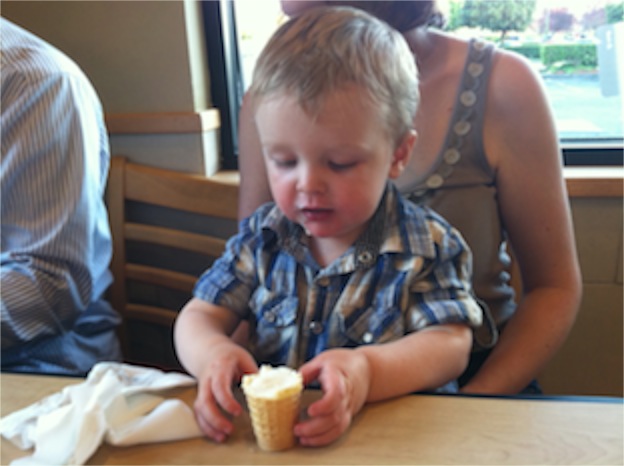 Going out for treats became ingrained in my sense of what families do. When I met Susan, I learned that her parents had operated a Dairy Queen restaurant in Libby, Montana in the days before Dairy Queen sold complete meals. Ice cream treats was the focus of the restaurant in those days and they didn’t even offer inside seating, just a window where you could order and receive your treats. Her father went to work dressed in white and made trays and trays of Dilly Bars by hand, with the curl in the center of each.
Going out for treats became ingrained in my sense of what families do. When I met Susan, I learned that her parents had operated a Dairy Queen restaurant in Libby, Montana in the days before Dairy Queen sold complete meals. Ice cream treats was the focus of the restaurant in those days and they didn’t even offer inside seating, just a window where you could order and receive your treats. Her father went to work dressed in white and made trays and trays of Dilly Bars by hand, with the curl in the center of each.
So going out for treats became a part of our family life as we raised our children. I liked to surprise the family. Sometimes when we were headed home from some event or function, I’d choose a route that led to an ice cream store. We used to say that the car knew its way to the treats and sometimes just took the family there. Shortly after we moved to Boise frozen yogurt treats were becoming popular and the chain TCBY came to our town. Our van made plenty of stops there.
The tradition continues, so last night after a home-cooked meal, we got in our son’s car with his family and ended up at a Dairy Queen restaurant a few blocks from their home. I’ve spent enough years of my adult life overweight and struggle to keep my weight in a healthy range, so I know that I have to limit my consumption of ice cream, but I do allow at treat from time to time as long as I am careful to choose small portions.
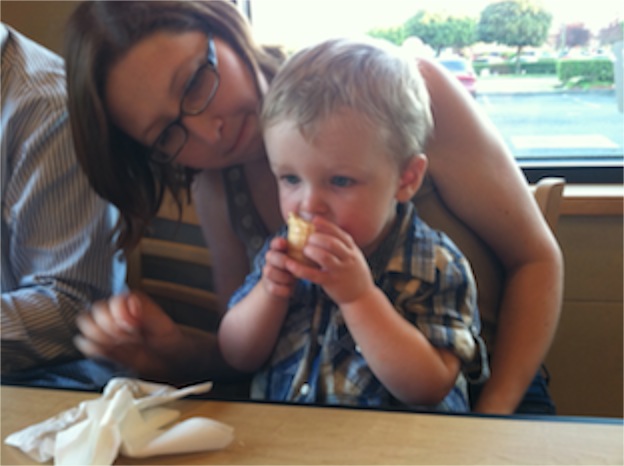 There are few treats as wonderful as watching our 18-month-old grandson eating an ice cream cone. His mother was remarkably proficient at keeping the mess controlled and she’d give the regular swipe with a napkin to keep him from sharing too much of the ice cream with others. I was impressed at how clean the booth was when we finished.
There are few treats as wonderful as watching our 18-month-old grandson eating an ice cream cone. His mother was remarkably proficient at keeping the mess controlled and she’d give the regular swipe with a napkin to keep him from sharing too much of the ice cream with others. I was impressed at how clean the booth was when we finished.
But you can’t really enjoy an ice cream cone unless you are willing to get a little of it on your face and hands. And when you face is tiny, the ice cream easily goes from the tip of your nose to the bottom of your chin. Sucking is a natural way to get food into yourself when you are a child. Licking is an acquired skill not employed much in the early years of life. So the process was mostly one of sticking the cone into the face – or the face into the cone.
Of course he needed to hold the cone himself. It was far more satisfying than having mom hold it. He likes to be in charge of feeding himself and he is used to having a certain amount of mess on his face whenever he eats. At home there is a high chair and a bib and an easily scrub-able floor to accommodate his eating style.
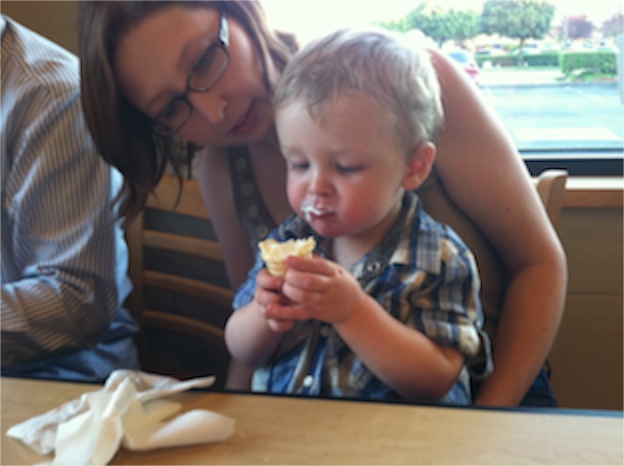 His vocabulary isn’t too large. He knows “Momma” and “Daddy” and “shoe” and “hat” and can name the parts of his face. One word he has learned is “mine.” It applies not so much to technical ownership as to the things that he wants to have. The ice cream cone quickly became “mine” and he grasped it in both hands to make sure that he retained control of the treat. Grandpa’s laughter probably didn’t help matter much.
His vocabulary isn’t too large. He knows “Momma” and “Daddy” and “shoe” and “hat” and can name the parts of his face. One word he has learned is “mine.” It applies not so much to technical ownership as to the things that he wants to have. The ice cream cone quickly became “mine” and he grasped it in both hands to make sure that he retained control of the treat. Grandpa’s laughter probably didn’t help matter much.
The real treasure of going out for a treat, of course, isn’t the ice cream. It is the joy of being together as a family. Sharing something that is fun and delicious together is a process of creating memories. We don’t remain many specific memories of things that happen when we are younger than two or three years old. However, we can remember the mood of our families and the love that is shared.
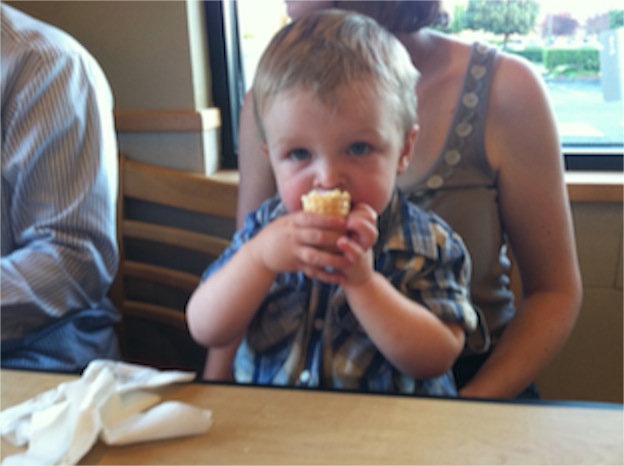 Grandpa, however, remembers the details as well.
Grandpa, however, remembers the details as well.
There was also an A&W Root Beer stand in our town, with car hops who brought your treats out to the car.
Our father felt some loyalty to the Frosty Freeze in part because of the closeness of its location to his work. I’m sure that friendship with the owner was another factor. There was some genuine small town competition between the two places, but we were not too aware of it as children. What we did know was that our dad loved Root Beer Floats and that he could occasionally be inspired to take the family out for a special treat in the evening. If he took us all out to the A&W for root beer floats, the next time we went out, we’d probably head to the Frosty Freeze for ice cream treats.
When the A&W put in a soft serve ice cream machine, the Frosty Freeze answered by starting to sell root beer. Both of the places sold root beer by the gallon and we had a gallon jug that we would take in to exchange for a full gallon from time to time. On one occasion, our father got his hands on a handful of caps from the A&W restaurant. He’d replace the cap on the jug each time we took it to the Frosty Freeze to get it filled so that they’d think he was buying a gallon from the A&W for each gallon he bought at the Frosty Freeze. The jugs always came home with the correct cap. It was amusing enough that the story was told for a long time in our family.

So going out for treats became a part of our family life as we raised our children. I liked to surprise the family. Sometimes when we were headed home from some event or function, I’d choose a route that led to an ice cream store. We used to say that the car knew its way to the treats and sometimes just took the family there. Shortly after we moved to Boise frozen yogurt treats were becoming popular and the chain TCBY came to our town. Our van made plenty of stops there.
The tradition continues, so last night after a home-cooked meal, we got in our son’s car with his family and ended up at a Dairy Queen restaurant a few blocks from their home. I’ve spent enough years of my adult life overweight and struggle to keep my weight in a healthy range, so I know that I have to limit my consumption of ice cream, but I do allow at treat from time to time as long as I am careful to choose small portions.

But you can’t really enjoy an ice cream cone unless you are willing to get a little of it on your face and hands. And when you face is tiny, the ice cream easily goes from the tip of your nose to the bottom of your chin. Sucking is a natural way to get food into yourself when you are a child. Licking is an acquired skill not employed much in the early years of life. So the process was mostly one of sticking the cone into the face – or the face into the cone.
Of course he needed to hold the cone himself. It was far more satisfying than having mom hold it. He likes to be in charge of feeding himself and he is used to having a certain amount of mess on his face whenever he eats. At home there is a high chair and a bib and an easily scrub-able floor to accommodate his eating style.

The real treasure of going out for a treat, of course, isn’t the ice cream. It is the joy of being together as a family. Sharing something that is fun and delicious together is a process of creating memories. We don’t remain many specific memories of things that happen when we are younger than two or three years old. However, we can remember the mood of our families and the love that is shared.

Copyright © 2012 by Ted Huffman. I wrote this. If you want to copy it, please ask for permission. There is a contact me button at the bottom of this page. If you want to share my blog a friend, please direct your friend to my web site.
Roald Dahl
17/08/12 06:20
When our family is together, he lines of conversation are often fascinating. Last night we had the joy of reading stories to our grandson at his bedtime. After we said good night to him we adjourned to the living room where we continued our conversation. We had in our minds the process of reading to children and soon our conversation drifted from a report of Susan getting bitten by chiggers in Missouri to looking up a picture of the mites. From there, we were discussing insects in general and Isaac was explaining the difference between a centipede and a millipede. A centipede has one leg on each side of each body segment. A millipede has two legs on each side of each body segment. I asked him where he learned that and he said that it is in the book, “James and the Giant Peach” by Roald Dahl.
We were impressed that he remembered the story. Susan recalled that it was the first “chapter book” that she read to him when he was a young child. He recalled the plot of the book to us, which prompted us to look up a summary of the book and read it once again. His memory of the story was very accurate. When you read to children, they really do listen. And reading instills in them a life-long love of reading and learning.
 We read several books by Roald Dahl to our children when they were growing up. The most famous ones are probably the ones that were adapted into movies like “James and the Giant Peach” and “Charlie and the Chocolate Factory.” But Dahl was a very productive author, writing 17 children’s books and three volumes of children’s poetry. He also wrote two adult novels and about twenty collections of short stories for adults. In addition, there are works of nonfiction, screen plays and two plays for the stage. He also wrote for television, including a half dozen episodes of “Alfred Hitchcock Presents.”
We read several books by Roald Dahl to our children when they were growing up. The most famous ones are probably the ones that were adapted into movies like “James and the Giant Peach” and “Charlie and the Chocolate Factory.” But Dahl was a very productive author, writing 17 children’s books and three volumes of children’s poetry. He also wrote two adult novels and about twenty collections of short stories for adults. In addition, there are works of nonfiction, screen plays and two plays for the stage. He also wrote for television, including a half dozen episodes of “Alfred Hitchcock Presents.”
One thing that was interesting from our research last night was that we found we had been reading his children’s books almost as soon as they were published. We must have read “The BFG” within a couple of years and “Matilda” the year it came out.
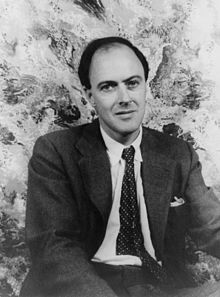 Dahl’s life spanned a series of adventures. He was born to Norwegian parents in Wales and grew up speaking Norwegian at home and English in school. At the age of eight he and four of his friends were caned by the headmaster of their school for putting a dead mouse in a jar of gobstoppers at a local candy shop owned by a “mean and loathsome woman” names Mrs. Pratchett. Dahl later referred to the incident as “The Great Mouse Plot of 1924.” He later attended a boarding school and became a fighter pilot for the Royal Air Force. He was named an Ace for his victories for Britain during the Second World War. After the war, he married the American actress Patricia Neal.
Dahl’s life spanned a series of adventures. He was born to Norwegian parents in Wales and grew up speaking Norwegian at home and English in school. At the age of eight he and four of his friends were caned by the headmaster of their school for putting a dead mouse in a jar of gobstoppers at a local candy shop owned by a “mean and loathsome woman” names Mrs. Pratchett. Dahl later referred to the incident as “The Great Mouse Plot of 1924.” He later attended a boarding school and became a fighter pilot for the Royal Air Force. He was named an Ace for his victories for Britain during the Second World War. After the war, he married the American actress Patricia Neal.
His ability to support himself as an author began with the sale of an article to the Saturday Evening Post. The article was about his adventures as a fighter pilot and earned him the handsome sum of $1,000, which allowed him to pursue writing full time. He wrote the book “Gremlins” based on a term that the pilots used to explain some of the mechanical problems with their planes. It was published in 1949 and from then on Dahl was able to support himself with his writing. James and the Giant Peach came out in 1961.
Fascinating to me, is the fact that some of his most productive writing came from the decade of the 1980’s, when our children were young. That meant that we were reading at the same time that he was writing. We didn’t come close to reading everything that he wrote, not even all of his children’s stories, but we read enough of them for his name to be among the well-known authors in our household.
Last night as we recalled the books and the good times we had reading, I realized that we came to know Dahl in part through the work of the last decade of his life. He died relatively young, at the age of 74, and remained a prolific author to the end of his life. Some wonderful stories came from that last decade, at an age when he might have retired.
We live in an epoch where age and experience are not particularly valued by society. Our culture is hungry for the creativity and energy of youth. In many fields of employment, youth is valued over experience. The scenario has changed dramatically in the church in the span of our careers. It used to be that age and experience were important factors in pastors obtaining calls. Larger congregations preferred pastors with significant amounts of experience. Younger and less experienced pastors tended to serve smaller congregations in rural and isolated locations with smaller salaries. However, high cost of graduate theological education and the large amounts of debt with which pastors graduate from school have combined to make “brand new” pastors too expensive for small congregations. A shortage of pastors in general has resulted in more opportunities for younger pastors to serve larger congregations. Younger pastors also serve the church in many other areas, such as conference and national positions, which in previous generations were available only to those with years and decades of experience.
While this change brings fresh energy and creative thinking to the church and is likely a blessing to the institution, it is good to be reminded that older and more experienced people still have much to offer. The story of Roald Dahl reminded me once again that people in their sixties and seventies have much to offer. As I enter that phase of my life, I still may have stories to tell and contributions to make.
In the meantime, I still have stories to read. For the next few nights, I have a grandson with a shelf of books in his room and a special reading time each evening. And, inspired by conversations with his parents, I may need to check out a few Roald Dahl books from the library. He wrote more than I have yet to read.
We were impressed that he remembered the story. Susan recalled that it was the first “chapter book” that she read to him when he was a young child. He recalled the plot of the book to us, which prompted us to look up a summary of the book and read it once again. His memory of the story was very accurate. When you read to children, they really do listen. And reading instills in them a life-long love of reading and learning.
 We read several books by Roald Dahl to our children when they were growing up. The most famous ones are probably the ones that were adapted into movies like “James and the Giant Peach” and “Charlie and the Chocolate Factory.” But Dahl was a very productive author, writing 17 children’s books and three volumes of children’s poetry. He also wrote two adult novels and about twenty collections of short stories for adults. In addition, there are works of nonfiction, screen plays and two plays for the stage. He also wrote for television, including a half dozen episodes of “Alfred Hitchcock Presents.”
We read several books by Roald Dahl to our children when they were growing up. The most famous ones are probably the ones that were adapted into movies like “James and the Giant Peach” and “Charlie and the Chocolate Factory.” But Dahl was a very productive author, writing 17 children’s books and three volumes of children’s poetry. He also wrote two adult novels and about twenty collections of short stories for adults. In addition, there are works of nonfiction, screen plays and two plays for the stage. He also wrote for television, including a half dozen episodes of “Alfred Hitchcock Presents.”One thing that was interesting from our research last night was that we found we had been reading his children’s books almost as soon as they were published. We must have read “The BFG” within a couple of years and “Matilda” the year it came out.

His ability to support himself as an author began with the sale of an article to the Saturday Evening Post. The article was about his adventures as a fighter pilot and earned him the handsome sum of $1,000, which allowed him to pursue writing full time. He wrote the book “Gremlins” based on a term that the pilots used to explain some of the mechanical problems with their planes. It was published in 1949 and from then on Dahl was able to support himself with his writing. James and the Giant Peach came out in 1961.
Fascinating to me, is the fact that some of his most productive writing came from the decade of the 1980’s, when our children were young. That meant that we were reading at the same time that he was writing. We didn’t come close to reading everything that he wrote, not even all of his children’s stories, but we read enough of them for his name to be among the well-known authors in our household.
Last night as we recalled the books and the good times we had reading, I realized that we came to know Dahl in part through the work of the last decade of his life. He died relatively young, at the age of 74, and remained a prolific author to the end of his life. Some wonderful stories came from that last decade, at an age when he might have retired.
We live in an epoch where age and experience are not particularly valued by society. Our culture is hungry for the creativity and energy of youth. In many fields of employment, youth is valued over experience. The scenario has changed dramatically in the church in the span of our careers. It used to be that age and experience were important factors in pastors obtaining calls. Larger congregations preferred pastors with significant amounts of experience. Younger and less experienced pastors tended to serve smaller congregations in rural and isolated locations with smaller salaries. However, high cost of graduate theological education and the large amounts of debt with which pastors graduate from school have combined to make “brand new” pastors too expensive for small congregations. A shortage of pastors in general has resulted in more opportunities for younger pastors to serve larger congregations. Younger pastors also serve the church in many other areas, such as conference and national positions, which in previous generations were available only to those with years and decades of experience.
While this change brings fresh energy and creative thinking to the church and is likely a blessing to the institution, it is good to be reminded that older and more experienced people still have much to offer. The story of Roald Dahl reminded me once again that people in their sixties and seventies have much to offer. As I enter that phase of my life, I still may have stories to tell and contributions to make.
In the meantime, I still have stories to read. For the next few nights, I have a grandson with a shelf of books in his room and a special reading time each evening. And, inspired by conversations with his parents, I may need to check out a few Roald Dahl books from the library. He wrote more than I have yet to read.
Copyright © 2012 by Ted Huffman. I wrote this. If you want to copy it, please ask for permission. There is a contact me button at the bottom of this page. If you want to share my blog a friend, please direct your friend to my web site.
In Olympia
16/08/12 06:19
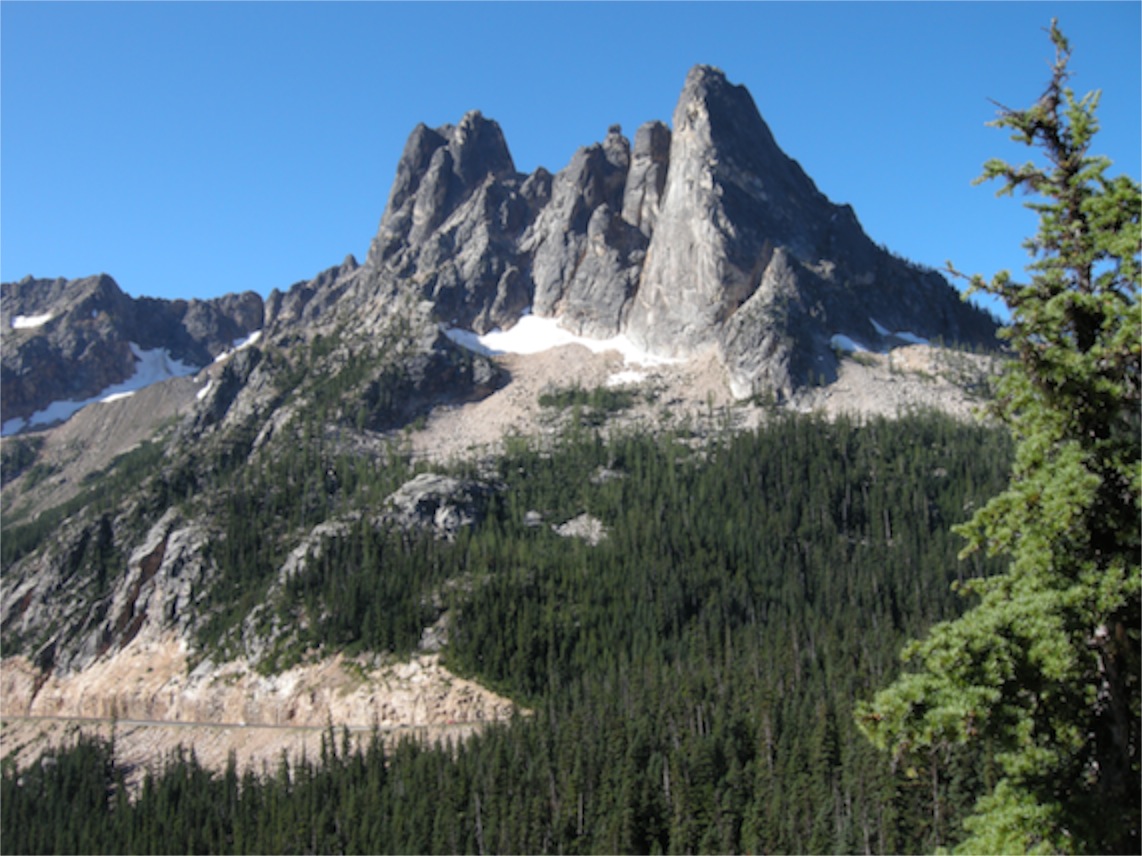
The Northern Cascades Highway is one of the truly spectacular scenic highways of the United States. The alpine vistas rival those of Glacier National Park or the Beartooth Highway between Red Lodge and Cook City, Montana. It was a good choice for us for yesterday. We stopped and walked to waterfalls and view points and the walking broke up a day’s driving and put us in a good frame of mind for a two-hour drive in steady traffic on Interstate 5 through Seattle. I like to think that our safe travels have to do, in part, with a good attitude towards others. Because we are not in too much of a hurry, we are able to allow other drivers to squeeze into the flow of traffic. We have no urge to cut off other drivers or to increase the stress of driving for others.
Of course, the event of the day for us was getting to the home of our grandson, son and daughter-in-law. Our arrival was later than we expected, due in part, to our inability to predict how long it takes to travel a distance in traffic.
Not long after our arrival we were out on the Chehalis trail, walking with our grandson. It is a different journey, now that he is a toddler. Last year when we visited our routine involved getting him into the stroller and moving down the trail at our usual pace. This year, he was out of the stroller and moving at his own pace, exploring all of the sticks, blades of grass and leaves that caught his eye. Although he can walk, his legs are short and his sense of direction and purpose are definitely different than ours. We didn’t make it very far down the trail, but we had a wonderful adventure nonetheless.
I have always loved caps and hats, so his large cap shading his eyes and his interest in my cap were delightful to me. Part of the way, he was carrying a stuffed fox, that was my toy when I was a child, his father’s toy in turn and now is Elliot’s. I don’t suppose it would be fair to say that I recognize myself in my grandson, but I definitely recognize similarities, some of which are also shared by his father.
There is something wonderful about a grandchild that is difficult for me to express. Of course the experience is not new. We have always been multi-generational people. Although the propagation of the species does not require more than two generations at a time, humans have almost always lived long enough to see their grandchildren. In many societies grandparents help with childcare and do other jobs to make the society function. We, however, live in a time when families spread out. Susan and I have only two children, but we now occupy three states with thousands of miles separating members of our family. We also have the luxury of travel that allows us to get together face-to-face multiple times each year. And we have the wonders of technology that give us video conferencing and inexpensive long distance telephone conversations.
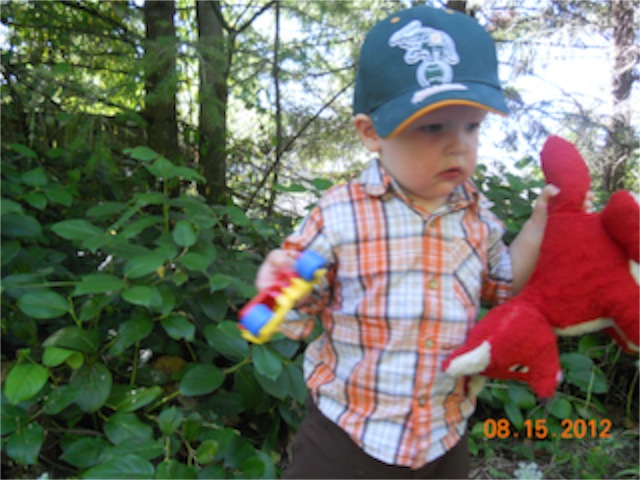
I could go on and on with the observations about our grandson, his language development, and such. I’m sure that grandparents have been boring their audiences with stories of their progeny for generations.
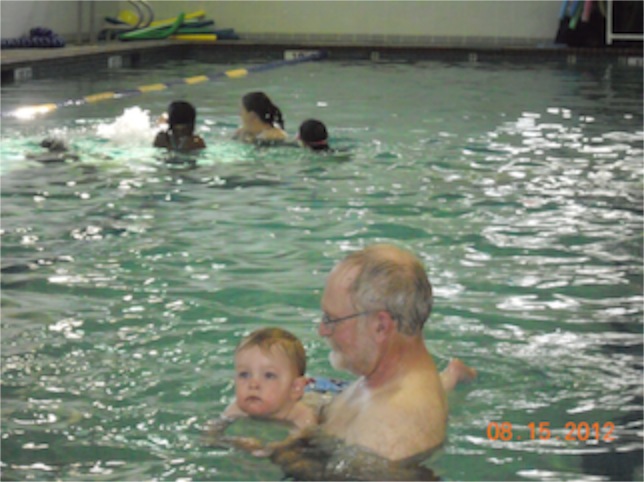
In theology we talk about the abstract concept of transcendence. It is a somewhat difficult concept for some people to understand. How can God be in multiple places at the same time? How can God’s presence be the same in different times? There are some who reject the notion of transcendence, saying that there is nothing that operates outside of the observed “laws” of nature. In reality, however, it is quite easy to observe transcendence. The love of family is definitely greater than distance. We can be in different places and still maintain a very close relationship. We can have separate lives, with different jobs and have different experiences and when we do get together the connection is instant. We remain connected even when we are apart.
The next few days are a time of joy, joy, joy for us. We don’t have too many specific plans, just the opportunity to be with our family in their home. Our son will still have to go to work, our daughter-in-law will still have meetings and appointments and work to do. And we will be in the fortunate position of being able to be with our grandson and marvel at his life and growth.
Copyright © 2012 by Ted Huffman. I wrote this. If you want to copy it, please ask for permission. There is a contact me button at the bottom of this page. If you want to share my blog a friend, please direct your friend to my web site.
Peace in the Valley
15/08/12 06:05
We’re camped at a small state park just out of Winthrop, Washington, this morning. We had a delightful drive through the mountains yesterday. With the exception of a short drive down the Okanagan valley, we spent the entire day driving in the mountains. The result is not the quickest or most direct route, but on vacation, speed and directness are not always the goals. In the years of driving across Washington, this is the first time we’ve taken this path. The western end of our drive, which we’ll pursue tomorrow, is the most northern route through the Cascades in the United States, over Stevens Pass. The highway in this area was only completed in the seventies, so it took a lot of thought and engineering before it was completed.
We’ve left the trail of Lewis and Clark far behind. They had an easy passage through the Cascades. The Nez Pierce helped them build canoes along the Snake River, which they followed to the Salmon and floated down the Salmon to the Columbia. The Columbia was flowing in its course before the mountains existed. The Cascades rose alongside the watershed, sometimes depositing magma into the river, but the river was not to be deterred. The volcanic mountains rose dramatically alongside the river. So the Corps of Discovery was traveling along a well-known river highway by the time they made it to the Cascades.
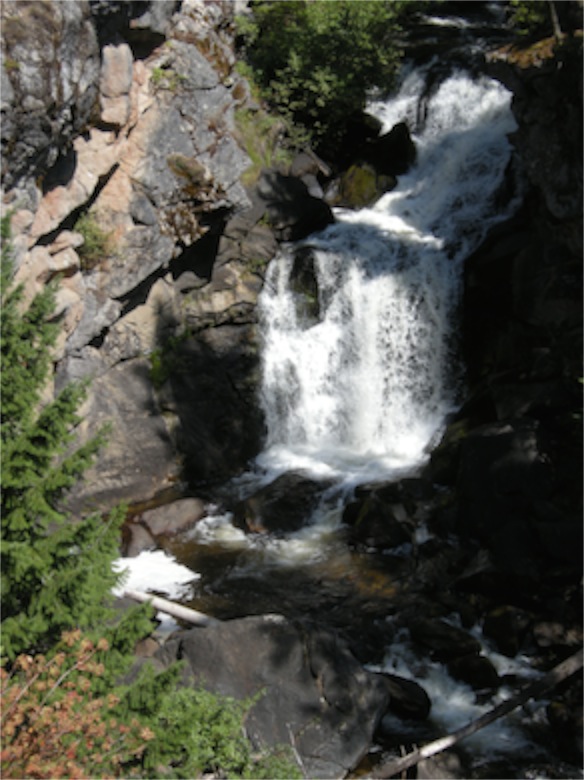 The Cascades are dramatic and wonderful mountains, filled with waterfalls, glaciers, and dramatic vistas. Rising from nearly sea level, the peaks, many of which top 11,000 feet appear to be bigger than the mountains in other areas. In Montana, for example, the mountains rise from bases that are 4,000 feet above sea level. A 12,000 foot mountain in Montana is only about 8,000 feet of mountain above the plains.
The Cascades are dramatic and wonderful mountains, filled with waterfalls, glaciers, and dramatic vistas. Rising from nearly sea level, the peaks, many of which top 11,000 feet appear to be bigger than the mountains in other areas. In Montana, for example, the mountains rise from bases that are 4,000 feet above sea level. A 12,000 foot mountain in Montana is only about 8,000 feet of mountain above the plains.
Today will be a mix of wilderness and urban crush. I’m looking forward to the Wild Sky Wilderness Area – a new piece of territory for me. We expect to see snow and may even see some close enough to touch at the top of the pass. Our descent, however, brings us to the Interstate north of Seattle, which means that the quickest route to our destination is to drive through Seattle traffic. Interstate 5 is about the only route through the area and so all of the traffic has to squeeze onto the six or so lanes of traffic each direction. It will be a bit of a rude awakening after three days of driving on nearly empty highways.
We can already sense that the city lies beyond the mountains. The campground here is nearly full on a midweek night. There are campsites with three and four vehicles crammed together. I guess for city people a few feet between tents or RVs seems like a luxury of space. Their apartments probably share walls with the neighbors.
It isn’t fair for us to begrudge them the space in the campground. They have as much right to a vacation as we. They have as much right to space and air and water as we. Still we need to make a bit of an adjustment in our attitude to accommodate all of the people after spending several days in places that are lonelier.
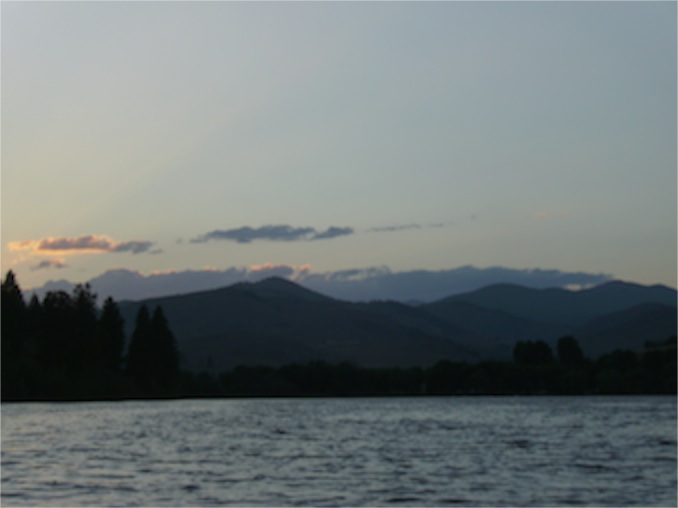 We arrived in time for a short paddle after dinner. It was good to get out on the water and stretch my limbs. I took out a kayak. I say that paddling a kayak is about the most natural form of exercise that I know. Each morning when I sit up in my bed, I stretch out my arms and make roughly the same motion as paddling a kayak. So I took an easy paddle to smooth out the kinds from driving most of the day. The sunset behind the Cascades was beautiful – more so than the pictures I took capture.
We arrived in time for a short paddle after dinner. It was good to get out on the water and stretch my limbs. I took out a kayak. I say that paddling a kayak is about the most natural form of exercise that I know. Each morning when I sit up in my bed, I stretch out my arms and make roughly the same motion as paddling a kayak. So I took an easy paddle to smooth out the kinds from driving most of the day. The sunset behind the Cascades was beautiful – more so than the pictures I took capture.
The east slope of the Cascades has one thing that is very similar to the east slope of the Rockies where I grew up: wind. The wind didn’t settle down until well after midnight last night. There weren’t any storms. It was just windy well after dark as the temperatures began to drop and things began to settle down. This side of the cascades is a whole lot drier than the other side. The precipitation tends to fall on the upslope as the moist Pacific air runs into the mountains.
I am eager for today. I’ll paddle as soon as it gets light and we’ll take our time winding through the cascades. The real treat, of course, will be getting to see our grandson, son and daughter-in-law. We say that our grandson has a powerful “tractor beam” that reaches out and attracts us. It is true that despite the wonderful technology that allows us to have video conversations, the longing to be together face-to-face is strong. Being with them is an important goal of this vacation.
Still, it has been good to have the time to unwind and explore the natural world. The medicine of mountain vistas and winding roads works wonders with me. I find myself able to sleep better and to let go of some of the day-to-day pressures that normally surround me. Except for a few places where our cell phone works, we haven’t had Internet connectivity since we left home. We have been staying in less-developed campgrounds without electric and water hookups. We have returned to the basics of cooking, eating and sleeping without dealing with our e-mail and other pressures. Of course, we aren’t totally “unplugged.” We have our cell phones and I have used my mobile hotspot to upload my blogs when I have a signal. We spoke on the phone to our office yesterday and we are aware of the most significant events since we left. And sometime today or tomorrow we’ll connect to the Internet at our son’s home and catch up on our communications.
For now, it is a very quiet morning on he east slope of the Cascades. The cricket song and a light breeze are the music that I hear. Today will be a busy day, but for the moment, peace reigns.
We’ve left the trail of Lewis and Clark far behind. They had an easy passage through the Cascades. The Nez Pierce helped them build canoes along the Snake River, which they followed to the Salmon and floated down the Salmon to the Columbia. The Columbia was flowing in its course before the mountains existed. The Cascades rose alongside the watershed, sometimes depositing magma into the river, but the river was not to be deterred. The volcanic mountains rose dramatically alongside the river. So the Corps of Discovery was traveling along a well-known river highway by the time they made it to the Cascades.

Today will be a mix of wilderness and urban crush. I’m looking forward to the Wild Sky Wilderness Area – a new piece of territory for me. We expect to see snow and may even see some close enough to touch at the top of the pass. Our descent, however, brings us to the Interstate north of Seattle, which means that the quickest route to our destination is to drive through Seattle traffic. Interstate 5 is about the only route through the area and so all of the traffic has to squeeze onto the six or so lanes of traffic each direction. It will be a bit of a rude awakening after three days of driving on nearly empty highways.
We can already sense that the city lies beyond the mountains. The campground here is nearly full on a midweek night. There are campsites with three and four vehicles crammed together. I guess for city people a few feet between tents or RVs seems like a luxury of space. Their apartments probably share walls with the neighbors.
It isn’t fair for us to begrudge them the space in the campground. They have as much right to a vacation as we. They have as much right to space and air and water as we. Still we need to make a bit of an adjustment in our attitude to accommodate all of the people after spending several days in places that are lonelier.

The east slope of the Cascades has one thing that is very similar to the east slope of the Rockies where I grew up: wind. The wind didn’t settle down until well after midnight last night. There weren’t any storms. It was just windy well after dark as the temperatures began to drop and things began to settle down. This side of the cascades is a whole lot drier than the other side. The precipitation tends to fall on the upslope as the moist Pacific air runs into the mountains.
I am eager for today. I’ll paddle as soon as it gets light and we’ll take our time winding through the cascades. The real treat, of course, will be getting to see our grandson, son and daughter-in-law. We say that our grandson has a powerful “tractor beam” that reaches out and attracts us. It is true that despite the wonderful technology that allows us to have video conversations, the longing to be together face-to-face is strong. Being with them is an important goal of this vacation.
Still, it has been good to have the time to unwind and explore the natural world. The medicine of mountain vistas and winding roads works wonders with me. I find myself able to sleep better and to let go of some of the day-to-day pressures that normally surround me. Except for a few places where our cell phone works, we haven’t had Internet connectivity since we left home. We have been staying in less-developed campgrounds without electric and water hookups. We have returned to the basics of cooking, eating and sleeping without dealing with our e-mail and other pressures. Of course, we aren’t totally “unplugged.” We have our cell phones and I have used my mobile hotspot to upload my blogs when I have a signal. We spoke on the phone to our office yesterday and we are aware of the most significant events since we left. And sometime today or tomorrow we’ll connect to the Internet at our son’s home and catch up on our communications.
For now, it is a very quiet morning on he east slope of the Cascades. The cricket song and a light breeze are the music that I hear. Today will be a busy day, but for the moment, peace reigns.
Copyright © 2012 by Ted Huffman. I wrote this. If you want to copy it, please ask for permission. There is a contact me button at the bottom of this page. If you want to share my blog a friend, please direct your friend to my web site.
From the Missouri to the Mountains
14/08/12 04:37
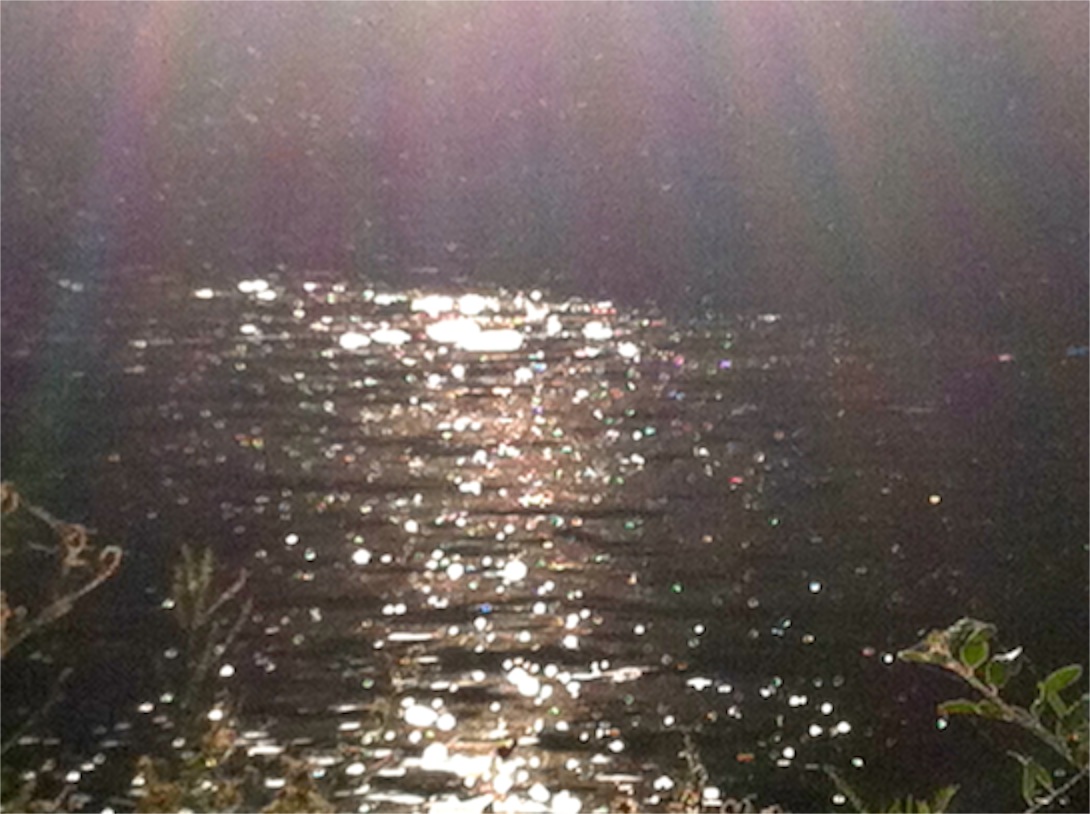
We woke up yesterday morning along the banks of the Missouri River just a little ways downstream from the Great Falls. I guess it would be more accurate to say from where the Great Falls used to be, as these days there are no real falls due to the dam that was built decades ago. At any rate the river ranch is a beautiful place. My cousin owns both sides of the river in that section, so it is quiet and unpopulated except for deer, coyotes, hawks, kestrels, owls, pelicans, geese, and a lot of different birds. Then, of course there are the cows, but they are mostly in a pasture away from the house, so we couldn’t hear them as we slept with our windows open.
Our day’s journey took us into Great Falls and from there northwest to Browning, in the heart of the Blackfoot Nation. From there we went through Glacier Park from East Glacier to West Glacier, then over to Whitefish and up to Eureka on the border with British Columbia. We are camped a few miles south of the border in a beautiful National Park site along the shore of Koocanusa reservoir, formed by the Libby Dam. As we walked through the campground last evening, cars with Canadian license plates outnumbered USA plates about two to one. But there is one car with Hawaii plates camped with us.
Captain Meriwether Lewis could have camped near the River Ranch on his way downstream. Not far from there, the expedition entered the white bluffs region and then took a side trip up a tributary of the Missouri looking to see if it might connect to a lake or other sizeable body of water. It was on that little trip that they encountered two rather threatening events. One was an encounter with a grizzly bear that could have easily cost the Captain his life. The other was a near miss with members of the Blackfeet. I don’t know how Lewis assessed his knowledge and abilities in dealing with the indigenous people of the American West, but he was lest than tactful in almost all of his encounters. He left a bad taste in the mouths of the Dakota people that remains to this day. In essence, he condescended to them, treating them like infants and proclaiming that they now had a new “father” back East who would care for him. He offered worthless trinkets to them in exchange for food and other essential items. Along the way there were encounters with other tribes, probably softened by the skill of Sacajawea as a translator. Mistaking superior firepower for superior technology and superior knowledge, they nearly starved crossing the Rockies and were ill –prepared for both of the winters that the expedition spent in camp. They would have survived neither if it weren’t for the knowledge and compassion of their native hosts.
Whatever the reason, their luck ran out when they encountered the Blackfeet. The Blackfeet were used to defending their territory and buffalo from fierce attacks from the Crow and Sioux. They weren’t about to allow interlopers in their territory. It was only by a bit of luck that Lewis’ half of the Corps of Discovery weren’t wiped out.
We found the hospitality of the Blackfeet Nation to be much warmer than Captain Lewis. They appreciate the business that tourists bring. There is even an espresso bar set up in a tipi in Browning. Espresso is not, I think, a traditional Blackfeet product. Then again, the tipi wasn’t exactly what I’d call traditional, either. Nonetheless we were made to feel welcome as we crossed Blackfoot land.
Glacier National Park is one a place that reminds me that I continue to be a child of Montana. I love living in the Black Hills and I am grateful for our home in the woods with the deer and turkeys and other animal neighbors. But the hills are not Mountains. All it takes is a visit to the northwest corner of Montana to be reminded that there is something spectacular and special about the granite peaks that rise high above the treeline. It renews my spirit to visit this place.
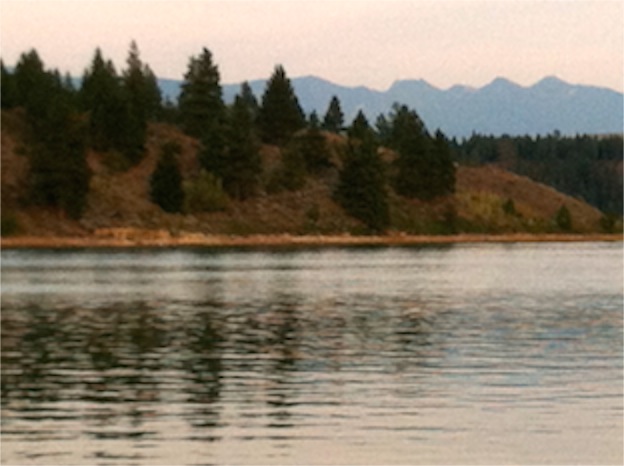
Our plan for today is to take our time. We’ll drift down to Libby and cross Idaho on US 2 then head back up north following Washington 20 across the state. That is a winding and scenic road that keeps us close to the border. We hope to camp in the Cascades tonight so that we can arrive at our kids’ home early in the day. Our planned route will take us across the Cascades at the most northern crossing we’ve ever taken in the US. We’ve crossed them in British Columbia, but today’s road will include some new territory for us. Vacation gives us the ability to slow our pace and wander a bit.
Students of the Lewis and Clark expedition know that the story ends with success for the Corps of Discovery. They made it back to St. Louis before the third winter. They brought back with them detailed maps and journals and loads of scientific specimens. It was less successful personally for Captain Lewis. He struggled with what these days would be diagnosed as a mental illness and failed to gain the happiness he sought. It is, in some ways, a tragic story.
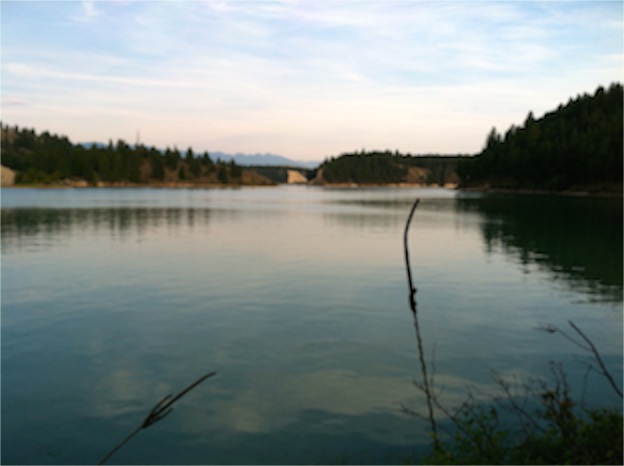
This vacation is just one part of a much bigger journey, just as our lives are a part of a much bigger adventure. How delightful that we are able to enjoy some of the moments along the way as we continue to seek paths of service to other people and to God.
Copyright © 2012 by Ted Huffman. I wrote this. If you want to copy it, please ask for permission. There is a contact me button at the bottom of this page. If you want to share my blog a friend, please direct your friend to my web site.
Along the Yellowstone
13/08/12 05:07
Captain William Clark needed to make a decision. He was in charge of nearly half of the Corps of Discovery and the men were antsy to get going. They didn’t want to wait much longer. Down the river was Missouri: civilization and home. The men didn’t want to risk having to spend another winter in the wilderness. They had endured the long cold winter with the Mandan alongside the winter. They had endured the damp winter out at the Pacific Ocean and the disappointment that no ship had come upon which they might ride home. They had traveled hard across the mountains, drawn by the promise of civilization.
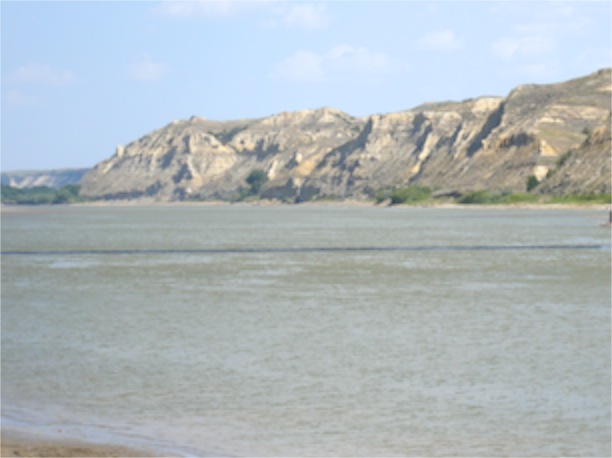 From the time they had parted with the other half of the Corps, Clark had believed that Lewis would be first to arrive at the rendezvous point where the Yellowstone River flowed into the mighty Missouri. Lewis and his men were taking to the water. Clark and his group had to go overland for a distance that proved to be nearly 60 miles and then quite a bit farther before they finally found trees large enough to make dugout canoes. They called that camp “Big Timber.” From there they had been floating. The Yellowstone was broad and calm and except for a few exciting moments with rapids, the journey had been smooth. They anticipated smooth waters for the rest of the journey back to Missouri.
From the time they had parted with the other half of the Corps, Clark had believed that Lewis would be first to arrive at the rendezvous point where the Yellowstone River flowed into the mighty Missouri. Lewis and his men were taking to the water. Clark and his group had to go overland for a distance that proved to be nearly 60 miles and then quite a bit farther before they finally found trees large enough to make dugout canoes. They called that camp “Big Timber.” From there they had been floating. The Yellowstone was broad and calm and except for a few exciting moments with rapids, the journey had been smooth. They anticipated smooth waters for the rest of the journey back to Missouri.
But Clark had expected Lewis to be ahead of him. Lewis’ group would have taken a few days to portage around the Great Falls of the Missouri and they wanted to explore one river that showed some promise of a water passage that led to the Pacific. It was rumored that there was a way to make a passage all the way across the continent by water, but on their way west they were forced to trek overland from the headwaters of the Missouri all the way to where the Snake River flowed into the Columbia.
Sacajawea, the woman they had met when they were with the Mandans, now the wife of Charbonneau, was certain that there was no way to get to the Pacific without going overland. She was a master of languages and had served ably as an interpreter. She had traveled boldly, even with the birth of her baby Pompey. She had also warned that Lewis shouldn’t go too far into the country of the Blackfeet. It was her warning that brought a chill to Captain Clark. In the back of his mind he knew that Lewis and his men were facing great risk. It is possible that they had all been wiped out by hostile natives. If this was the case, there was no reason for him to delay his departure any longer. The agreed-upon day had come and passed.
Yesterday we ate lunch alongside the Yellowstone River near the point where Captain Clark pondered his dilemma. We, of course, knew that Lewis and the rest of the Corps of Discovery did show up and that the reunited group made it home to Missouri that fall. Only one member of the Corps died on the exhibition, from acute appendicitis – and that had been in the late summer on the way west, shortly after they had met up with the first of the Dakota.
Where we stopped there were power lines and bridges and one had to look at the river at just the right angle to catch a glimpse of how it might have appeared to Captain Clark as he contemplated what to do next. But we could imagine what this land had looked like before the push of civilization came. In fact the area around the confluence of the Yellowstone and the Missouri has been an empty place for most of the years since Lewis and Clark passed this way.
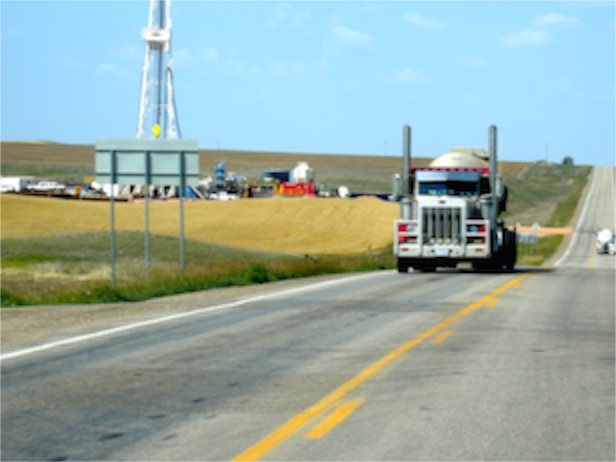 It is not far from the crazy and hectic pace of the Williston Basin and the Bakken Oil Fields. From as far away as New Town, North Dakota, we began to notice the increase in truck traffic. By Watford City we were in the midst of heavy truck traffic. There were oil rigs planted in the midst of the wheat fields and “man camps” springing up at the edges of the pastures. Somewhere in the midst of all of the activity a rock from a passing tanker landed right in the middle of our windshield, leaving a chip that is probably too big to repair. And I had just replaced my windshield last spring. It’s first chip was the largest I’ve gotten in years.
It is not far from the crazy and hectic pace of the Williston Basin and the Bakken Oil Fields. From as far away as New Town, North Dakota, we began to notice the increase in truck traffic. By Watford City we were in the midst of heavy truck traffic. There were oil rigs planted in the midst of the wheat fields and “man camps” springing up at the edges of the pastures. Somewhere in the midst of all of the activity a rock from a passing tanker landed right in the middle of our windshield, leaving a chip that is probably too big to repair. And I had just replaced my windshield last spring. It’s first chip was the largest I’ve gotten in years.
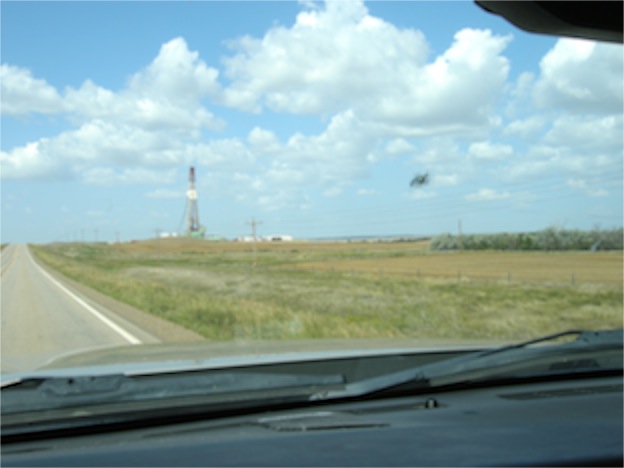 We were amazed at the crush of people and vehicles. It is a crazy territory at the moment. There will be an area that they have cleared and covered in gravel where they place campers side by side to provide housing for the workers. In other places they have planted larger mobile homes in row after row. Cafes have sprung up in barns and other makeshift locations. You couldn’t tell it was Sunday. The crews work around the clock and the drilling never stops. Most workers are on a 13 days on, 7 days off schedule, working 12 hours a day. There is big money to be made in that country – most of it going to the oil companies, not to the workers, though their salaries are impressive.
We were amazed at the crush of people and vehicles. It is a crazy territory at the moment. There will be an area that they have cleared and covered in gravel where they place campers side by side to provide housing for the workers. In other places they have planted larger mobile homes in row after row. Cafes have sprung up in barns and other makeshift locations. You couldn’t tell it was Sunday. The crews work around the clock and the drilling never stops. Most workers are on a 13 days on, 7 days off schedule, working 12 hours a day. There is big money to be made in that country – most of it going to the oil companies, not to the workers, though their salaries are impressive.
Farmers are reporting that in places the dust is falling so thickly on their crops that the plants are dying. There will be no compensation for that kind of loss.
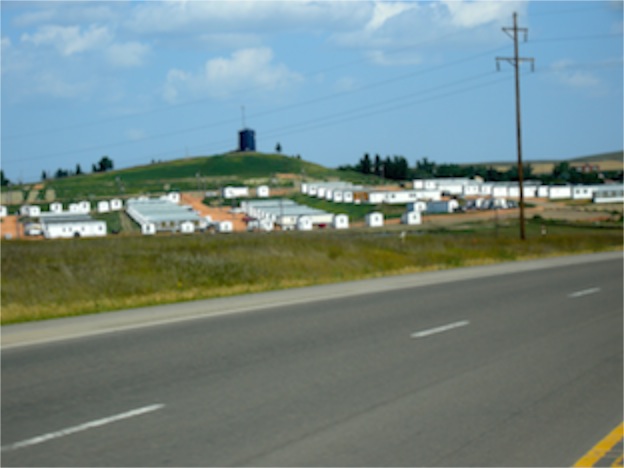 Some people say that the oil will last for another 20 years. Some people say less and others say more. Everyone knows that it will not go on forever. But right now there is money to be made and the rush is on.
Some people say that the oil will last for another 20 years. Some people say less and others say more. Everyone knows that it will not go on forever. But right now there is money to be made and the rush is on.
So it was nice to get away from the traffic and sit alongside the river and remember the events of long ago. This land has seen great changes since it was acquired as a part of the great Louisiana Purchase. Of course the natives who claimed the land as their own never thought it was for sale. But they couldn’t stop the rush of history and the crush of people moving west. We won’t stop the rush of history, either. We can’t stop the lust for oil or the demand for energy.
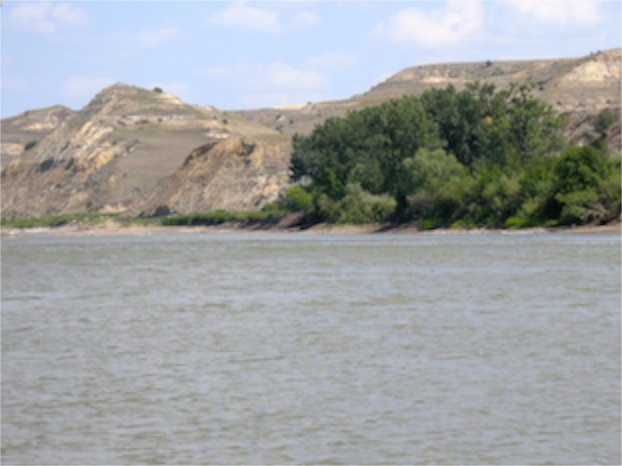 Still it is nice to pause for a moment and remember a different time and the people who came before us. Hopefully, we won’t forget that ours is but a brief moment in history and there are those who will come after us. I hope we don’t leave too big a mess for them to inherit.
Still it is nice to pause for a moment and remember a different time and the people who came before us. Hopefully, we won’t forget that ours is but a brief moment in history and there are those who will come after us. I hope we don’t leave too big a mess for them to inherit.

But Clark had expected Lewis to be ahead of him. Lewis’ group would have taken a few days to portage around the Great Falls of the Missouri and they wanted to explore one river that showed some promise of a water passage that led to the Pacific. It was rumored that there was a way to make a passage all the way across the continent by water, but on their way west they were forced to trek overland from the headwaters of the Missouri all the way to where the Snake River flowed into the Columbia.
Sacajawea, the woman they had met when they were with the Mandans, now the wife of Charbonneau, was certain that there was no way to get to the Pacific without going overland. She was a master of languages and had served ably as an interpreter. She had traveled boldly, even with the birth of her baby Pompey. She had also warned that Lewis shouldn’t go too far into the country of the Blackfeet. It was her warning that brought a chill to Captain Clark. In the back of his mind he knew that Lewis and his men were facing great risk. It is possible that they had all been wiped out by hostile natives. If this was the case, there was no reason for him to delay his departure any longer. The agreed-upon day had come and passed.
Yesterday we ate lunch alongside the Yellowstone River near the point where Captain Clark pondered his dilemma. We, of course, knew that Lewis and the rest of the Corps of Discovery did show up and that the reunited group made it home to Missouri that fall. Only one member of the Corps died on the exhibition, from acute appendicitis – and that had been in the late summer on the way west, shortly after they had met up with the first of the Dakota.
Where we stopped there were power lines and bridges and one had to look at the river at just the right angle to catch a glimpse of how it might have appeared to Captain Clark as he contemplated what to do next. But we could imagine what this land had looked like before the push of civilization came. In fact the area around the confluence of the Yellowstone and the Missouri has been an empty place for most of the years since Lewis and Clark passed this way.


Farmers are reporting that in places the dust is falling so thickly on their crops that the plants are dying. There will be no compensation for that kind of loss.

So it was nice to get away from the traffic and sit alongside the river and remember the events of long ago. This land has seen great changes since it was acquired as a part of the great Louisiana Purchase. Of course the natives who claimed the land as their own never thought it was for sale. But they couldn’t stop the rush of history and the crush of people moving west. We won’t stop the rush of history, either. We can’t stop the lust for oil or the demand for energy.

Copyright © 2012 by Ted Huffman. I wrote this. If you want to copy it, please ask for permission. There is a contact me button at the bottom of this page. If you want to share my blog a friend, please direct your friend to my web site.
A Little Rain
12/08/12 04:20
When I moved to North Dakota 34 years ago, one of the first lessons I learned was that you never complain about the rain. It doesn’t matter what you had planned, rain is always welcome in a place that is dependent upon agriculture and often short of moisture. Dryland farming is just what the name implies. The land is dry and the farmer is dependent upon whatever moisture comes. There is another thing about North Dakota that I learned early on: the weather is never typical. If it is very hot: “This is unusual.” If it is very cold: “It’s not usually like this.” If we got a lot of snow: “It is an unusual year.” If there was no snow: “Usually we have snow by now.” Whatever weather came, it was considered to be unusual by the locals.
Rain in the middle of the day during harvest season is unusual. A few thundershowers in the late afternoon might be expected, but we just don’t get rainy days in the middle of the summer. Using the rules of North Dakota weather, then, we proceeded with an outdoor wedding yesterday despite the clouds and the rain showers that had splattered our windshield on our way to Strawberry Lake. The chairs were set up, the flowers were out, and the aisle runner was in place. The attendants were ready and the guests were seated. This is North Dakota and the people are tough, so the fact that they were getting wet, didn’t stop the folks from sitting down on the chairs.
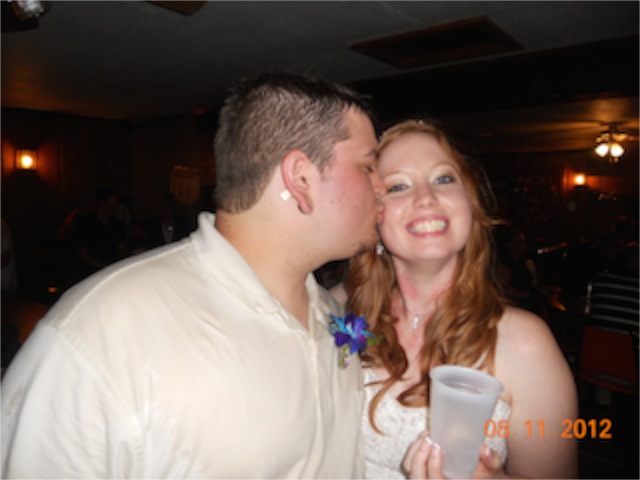 I held an umbrella over the bride as she waited to process. Music was provided by a powerful car stereo and the wedding was underway. After a few moments, I decided that I needed to go to the front and hold the umbrella over the bride. After all she had done her hair and makeup up special, and she was wearing a beautiful dress with tiny beads sewn into it. So, with the wedding license under my jacket to keep it dry I held the umbrella up over the bride during the ceremony.
I held an umbrella over the bride as she waited to process. Music was provided by a powerful car stereo and the wedding was underway. After a few moments, I decided that I needed to go to the front and hold the umbrella over the bride. After all she had done her hair and makeup up special, and she was wearing a beautiful dress with tiny beads sewn into it. So, with the wedding license under my jacket to keep it dry I held the umbrella up over the bride during the ceremony.
Susan was officiating and her notes were becoming wetter and wetter. At first she skipped a few words, then a sentence or two. After the reading of the scriptures, she began to skip whole paragraphs and finally a few pages. The pages were sticking to each other by this point and the words were getting hard to read because the paper became transparent when it was wet. The couple exchanged vows, exchanged rings and Susan pronounced them married. We all retreated to the relative shelter of a couple of large willow trees and within a few minutes we got in our cars and headed up the hill to a small clubhouse for the reception.
I didn’t hear anyone complain though most of us, especially the members of the wedding party, were pretty wet. We dried out after a while and everyone proceeded to have fun at the reception. The food was good, the fellowship was warm and I heard over and over how unusual it is for there to be a rain shower at 1 o’clock in the afternnon in the middle of the summer.
Of course, it rained for the rest of the afternoon and into the evening.
It was the second outdoor wedding that we have attended this summer that was rained upon. From my point of view, it really isn’t all that unusual. But I didn’t say anything.
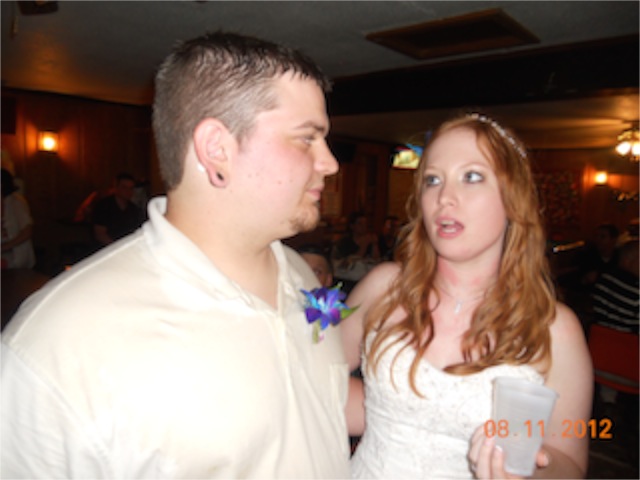 The story of the rainy wedding will be a good one to tell for years to come and will provide the couple with plenty of entertainment as the seasons pass. Whatever discomfort they felt yesterday will soon fade from memory and they will remember that they endured despite a few drops of rain. There is, I think, an important lesson in the rain that will be valuable to them as they live their lives: Life isn’t predictable. Sometimes you have to adapt.
The story of the rainy wedding will be a good one to tell for years to come and will provide the couple with plenty of entertainment as the seasons pass. Whatever discomfort they felt yesterday will soon fade from memory and they will remember that they endured despite a few drops of rain. There is, I think, an important lesson in the rain that will be valuable to them as they live their lives: Life isn’t predictable. Sometimes you have to adapt.
Popular culture encourages young people to imagine the perfect wedding ceremony. They spend a lot of energy thinking about clothing, flowers, special symbols, and lots of other details. They imagine how they will feel when everything is perfectly in place. But life, and marriage, is rarely “perfect.” There are all kinds of unforeseen challenges that come our way. When a couple promises “in sickness and health, in plenty and want, in joy and in sorrow,” they have no idea what sicknesses might come their way. They don’t know what financial resources they will have or what setbacks they will face. They can’t anticipate the grief they will experience or the joys they will discover.
Marriage vows are a promise about a future that cannot be predicted. We make promises without knowing what they mean because we cannot know what path our future will take. Nearly 40 years into a marriage, this is obvious to us. We look back and know that we could have never imagined all of the things that have happened. We knew that we were heading towards the ministry as a career, but had no clue what churches we would be called to serve. We knew we loved the mountains of Montana, but had no idea where we would live. We thought we might one day have children, but couldn’t imagine the joy of holding a grandchild in our arms. We had dreams of traveling, but couldn’t have imagined all of the places we have gone together. We knew the love of close families, but didn’t imagine what it would be like to have our parents live with us in their times of dying.
So, as a couple of the elders we watched this young couple boldly declare their love for each other and promise “for as long as we both shall live.” We are aware of the challenges they will face. We know life won’t be easy for them. We know that they don’t have a clue about what they’re getting themselves into. And we celebrate their boldness and youth and enthusiasm and love.
A little rain on the wedding day is nothing compared to the challenges that are coming their way. They did very well with the rain. We have high hopes for the challenges of their future.
Rain in the middle of the day during harvest season is unusual. A few thundershowers in the late afternoon might be expected, but we just don’t get rainy days in the middle of the summer. Using the rules of North Dakota weather, then, we proceeded with an outdoor wedding yesterday despite the clouds and the rain showers that had splattered our windshield on our way to Strawberry Lake. The chairs were set up, the flowers were out, and the aisle runner was in place. The attendants were ready and the guests were seated. This is North Dakota and the people are tough, so the fact that they were getting wet, didn’t stop the folks from sitting down on the chairs.

Susan was officiating and her notes were becoming wetter and wetter. At first she skipped a few words, then a sentence or two. After the reading of the scriptures, she began to skip whole paragraphs and finally a few pages. The pages were sticking to each other by this point and the words were getting hard to read because the paper became transparent when it was wet. The couple exchanged vows, exchanged rings and Susan pronounced them married. We all retreated to the relative shelter of a couple of large willow trees and within a few minutes we got in our cars and headed up the hill to a small clubhouse for the reception.
I didn’t hear anyone complain though most of us, especially the members of the wedding party, were pretty wet. We dried out after a while and everyone proceeded to have fun at the reception. The food was good, the fellowship was warm and I heard over and over how unusual it is for there to be a rain shower at 1 o’clock in the afternnon in the middle of the summer.
Of course, it rained for the rest of the afternoon and into the evening.
It was the second outdoor wedding that we have attended this summer that was rained upon. From my point of view, it really isn’t all that unusual. But I didn’t say anything.

Popular culture encourages young people to imagine the perfect wedding ceremony. They spend a lot of energy thinking about clothing, flowers, special symbols, and lots of other details. They imagine how they will feel when everything is perfectly in place. But life, and marriage, is rarely “perfect.” There are all kinds of unforeseen challenges that come our way. When a couple promises “in sickness and health, in plenty and want, in joy and in sorrow,” they have no idea what sicknesses might come their way. They don’t know what financial resources they will have or what setbacks they will face. They can’t anticipate the grief they will experience or the joys they will discover.
Marriage vows are a promise about a future that cannot be predicted. We make promises without knowing what they mean because we cannot know what path our future will take. Nearly 40 years into a marriage, this is obvious to us. We look back and know that we could have never imagined all of the things that have happened. We knew that we were heading towards the ministry as a career, but had no clue what churches we would be called to serve. We knew we loved the mountains of Montana, but had no idea where we would live. We thought we might one day have children, but couldn’t imagine the joy of holding a grandchild in our arms. We had dreams of traveling, but couldn’t have imagined all of the places we have gone together. We knew the love of close families, but didn’t imagine what it would be like to have our parents live with us in their times of dying.
So, as a couple of the elders we watched this young couple boldly declare their love for each other and promise “for as long as we both shall live.” We are aware of the challenges they will face. We know life won’t be easy for them. We know that they don’t have a clue about what they’re getting themselves into. And we celebrate their boldness and youth and enthusiasm and love.
A little rain on the wedding day is nothing compared to the challenges that are coming their way. They did very well with the rain. We have high hopes for the challenges of their future.
Copyright © 2012 by Ted Huffman. I wrote this. If you want to copy it, please ask for permission. There is a contact me button at the bottom of this page. If you want to share my blog a friend, please direct your friend to my web site.
Welcome to the Family
11/08/12 04:17
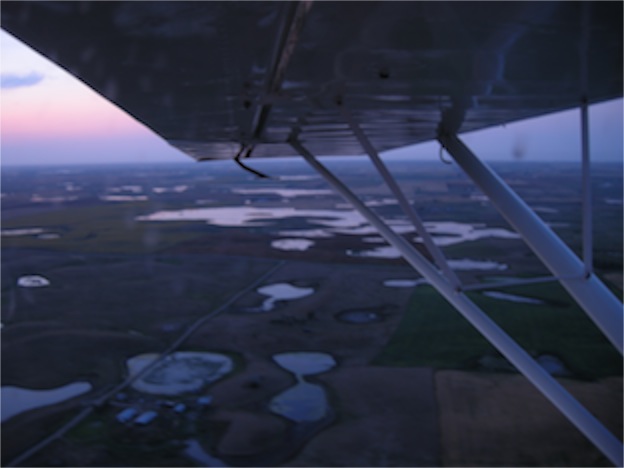
Last night the family gathered for a picnic in Minot. It is the kind of country where people don’t think much about driving 30 or 40 miles to get together. The picnic gathered folks from a wider circle, of course, because many of us have traveled from distant places to attend the wedding. I married into this side of the family, so these are all relatives that I acquired in my adult years, but I’ve been around long enough that I am definitely one of the old timers. Susan has an aunt who is still living, but she is in frail health and although she’ll be at the wedding today, she decided not to make the trip to the picnic. There were a set of grandparents of the bride who are older than we, but we definitely fit into the group as elders.
I watched the groom circulate through the crowd, sometimes being “towed” by his bride as she introduced him to the people. He was a bit nervous, and there was a bit of uncomfortable laughter and chatter as he went from person to person. You could tell that he wasn’t going to remember all of the names, and how the various people are related.
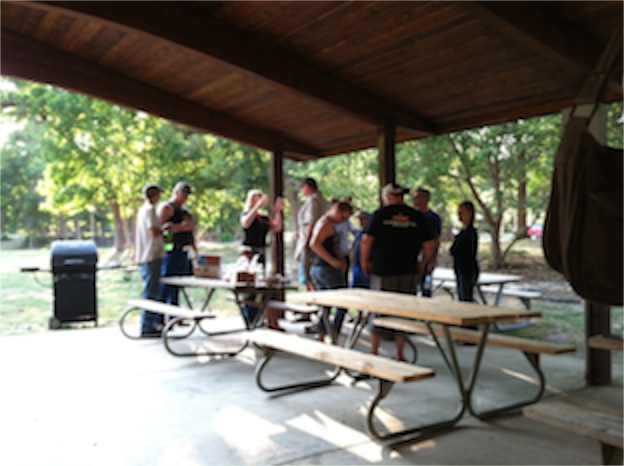
What has remained is the fact that this is a complex family with a penchant for playing jokes and teasing. I watched as people told a few tall tales about the past. I played along as the bride’s mother’s brother teased her about having taken the wrong dress from her home. She is as gullible and susceptible to his teasing as she was when she was a teenager. I was sort of watching to see if someone would play a practical joke on the groom, but I don’t think anyone did. The family was on its best behavior for this first meting.
In that regard it was different for me. My first meeting of this clan involved a formal family dinner at the home of Susan’s grandparents. I was on my best behavior and paying attention to my table manners as we passed the meat and potatoes and talked about the farm and the weather. I was trying to show the elders that I had some knowledge and common sense and that I was capable of caring for Susan and worthy of joining the family. So I didn’t notice the way her grandfather was holding the butter plate as he passed it to me and then deftly gave it a shove so that my thumb landed in the butter.
It was a moment that most of the family had been waiting for. As I tried not to call attention to myself, all eyes were on me and the laughter erupted from the family. Getting my thumb in the butter was a sort of rite of passage and a sign that they were welcoming me into their circle. The stories at the table turned to generations of practical jokes. Grandma Mary, who had passed away more than twenty years before I came into the family, was a great practical joker, loving her rubber donut that got coated in powdered sugar and served alongside freshly-fried homemade donuts. She also would make bonbons dipped in chocolate and include a few chocolate-dipped cotton balls. The time she served the cotton ball bonbons to the church ladies aid society has become a family legend.
Of course, I learned the butter dish trick and enjoyed being a member of the family as new sons-in-law and grandsons-in-law went through the ritual of the family dinner. I watched with delight as my father-in-law “initiated” my brothers-in-law when they joined the family.
I didn’t notice anyone with a butter dish at the picnic last night. I’m guessing that the entire wedding will pass without the use of a butter dish. I doubt that the bride and groom own a butter dish or that they will receive one as a wedding gift. They are probably happy with whipped butter in plastic tubs.
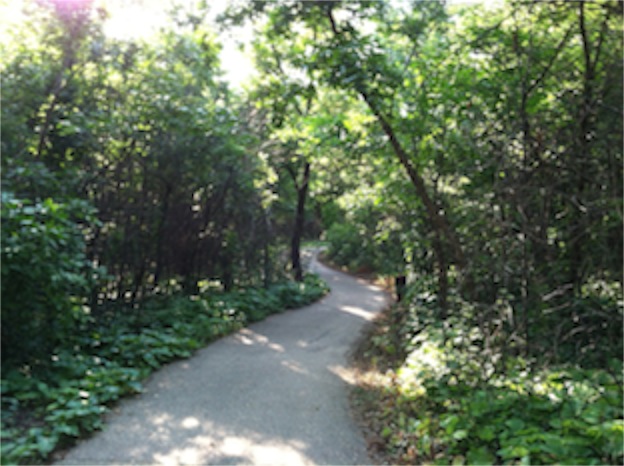
I’m guessing that generations from now, when I am nothing more than an interesting note in a family story about the years long ago, people will be playing jokes on one another. It is the way of this family. When we laugh together we draw closer. And we’ll have stories to tell of the picnic when Daniel was introduced to the family for years to come.
Copyright © 2012 by Ted Huffman. I wrote this. If you want to copy it, please ask for permission. There is a contact me button at the bottom of this page. If you want to share my blog a friend, please direct your friend to my web site.
Selling the Farm
10/08/12 04:19
There is a euphemism for death that I heard a lot when I was a kid. They would say that someone “bought the farm” meaning that the person had died. I do not know the origins of the phrase. Because I heard it in the context of flying and aviation, I assumed that it might have had something to do with insurance. When the life insurance company paid the survivors there would be enough money to pay the mortgage. There are variations of the phrase. Sometimes people just say, “bought it,” or “bought the plot.” I suppose there are other possibilities for the origins of the phrase. We speak of sacrifice in the military as a financial transaction at times, saying that someone “paid the price,” meaning that an individual made a big sacrifice for freedom.
Regardless of the origins of the phrase, it was common language among the pilots with whom I grew up to speak of a fatal aircraft accident as someone having “bought the farm.” So the phrase has been a part of my psyche for as long as I can remember.
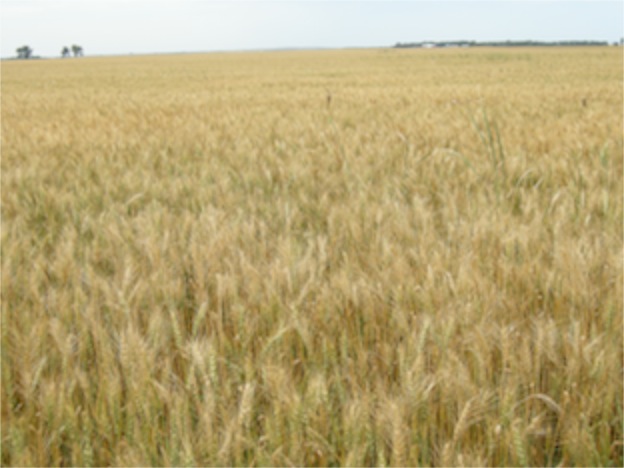 The term was in the back of my mind yesterday when we finally got the privilege of meeting face to face with the farmer who bought the farmland that belonged to Susan’s father in North Dakota. The land had been in the family for four generations, if you count Susan and her sisters. At one point there were at least four quarters of land owned by various members of the family. Additional land was rented and operated as a farm. There were years when they raised turkeys. There were a few dairy cows. But the main crop over the years was wheat. They grew Durham, planted in the spring and harvested for the grain to make macaroni and spaghetti. The hard red winter wheat that is the staple of bread flower is a crop that is grown a bit farther north. Some years they grew buckwheat and other crops as well.
The term was in the back of my mind yesterday when we finally got the privilege of meeting face to face with the farmer who bought the farmland that belonged to Susan’s father in North Dakota. The land had been in the family for four generations, if you count Susan and her sisters. At one point there were at least four quarters of land owned by various members of the family. Additional land was rented and operated as a farm. There were years when they raised turkeys. There were a few dairy cows. But the main crop over the years was wheat. They grew Durham, planted in the spring and harvested for the grain to make macaroni and spaghetti. The hard red winter wheat that is the staple of bread flower is a crop that is grown a bit farther north. Some years they grew buckwheat and other crops as well.
In each generation, there were other jobs to support the fragile economy of a dryland family farm in the center of North Dakota. Susan’s grandfather began to raise his family on the farm and her father lived on the place into his teen years, but after the Second World War, they moved the house into town. Her grandfather served as a justice of the peace and held several other jobs. Her father went away to school and trained as an electrician. He worked as an electrician all of his life, but there was always a bit of the farm in him. When he reached his eighties, and moved to Rapid City, he frequently would answer “farmer” when people asked him what his work had been even though he earned his living as an electrician.
Other family members sold the land that they had inherited. Susan’s father kept his quarter for all of his life. It was deeply meaningful for him to know that he owned a quarter of farmland. When he died, however, it wasn’t practical for the three daughters, all living in different states, to continue to own the land. The renter who farmed the land is a good farmer and he was interested in buying the land. A deal was easily struck and last spring the transaction was finalized. But all of the dealings were done by phone and e-mail. We had never met the farmer face to face. So yesterday was our opportunity. Even though he had combines in the field, he took time to spend a delightful evening with us. We went to their home and visited and then took a drive around their place. The operation is diverse, growing wheat, canola and sunflowers. There is even a small plot of soybeans planted as an experiment, but it is a bit short of the moisture that is required for the beans to thrive. The quarter that was owned by Susan’s family is all sunflowers.
 Sunflowers are beautiful in the field. They all face the sun as it makes its course across the sky, so when you are driving or walking the field appears green or yellow, depending on which side of the field you are traveling. The heads of the sunflowers are filled with seeds and right now the heavy yellow pollen is dusting the leaves and flying in the air everywhere. The fields buzz with bees in the afternoon warmth.
Sunflowers are beautiful in the field. They all face the sun as it makes its course across the sky, so when you are driving or walking the field appears green or yellow, depending on which side of the field you are traveling. The heads of the sunflowers are filled with seeds and right now the heavy yellow pollen is dusting the leaves and flying in the air everywhere. The fields buzz with bees in the afternoon warmth.
Jerry and Mary are hardworking and well-organized farmers. Mary has worked for the Post Office for years to support the family operation. Jerry’s family has been working the land for several generations and he knows the business. He is forward-looking and careful to research and keep up with the latest in modern agriculture. They are not big by the standards of North Dakota farms in this generation. They still run a family operation, hiring custom combiners to help with the harvest. Jerry spends a lot of time in the tractor working his fields. Over the years they have been willing to live with little personal comfort and few material possessions in order to pursue the life of farming. Long days have become a way of life for them.
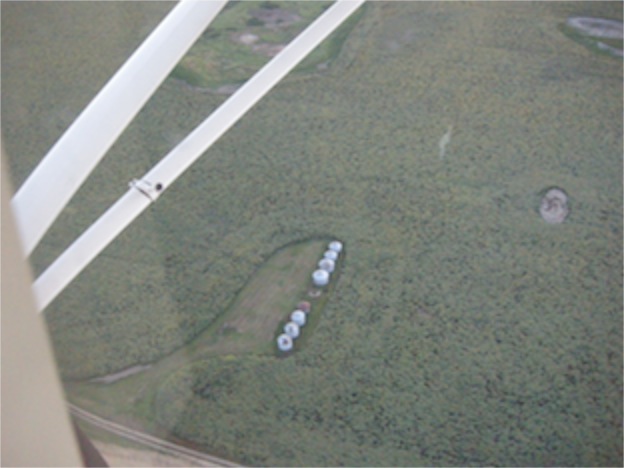 After supper, Jerry gave me a ride over the place in his Champion Scout airplane. The Scout is an airplane suited for short takeoff and landing and equipped with large tundra tires for off airport use. Jerry is a confident and smooth pilot who made the little venture a pure joy for me. I grew up in the back seat of two-passenger airplanes, flying regularly with my father. The scout is a more modern version of the kind of airplane we flew when I was a kid.
After supper, Jerry gave me a ride over the place in his Champion Scout airplane. The Scout is an airplane suited for short takeoff and landing and equipped with large tundra tires for off airport use. Jerry is a confident and smooth pilot who made the little venture a pure joy for me. I grew up in the back seat of two-passenger airplanes, flying regularly with my father. The scout is a more modern version of the kind of airplane we flew when I was a kid.
So I got to see the farm from the air. It was a lovely evening and the air was very smooth. The Scout is a great airplane for taking pictures, as the passengers have windows on both sides. The adventure seemed to be an appropriate way to seal the deal and launch a new friendship.
So Jerry and Mary have bought the farm in the best sense of the phrase. They are living on the land and taking care of it. It feels good to know that the land that was so deeply meaningful to my father-in-law has passed on to a family that respects its heritage and works hard to care for it. We may have sold the farm, but we have gained wonderful new friends.And, as a fan of sunflowers, who plants some in his garden each year, I am delighted to see that field of yellow faces facing the sun.
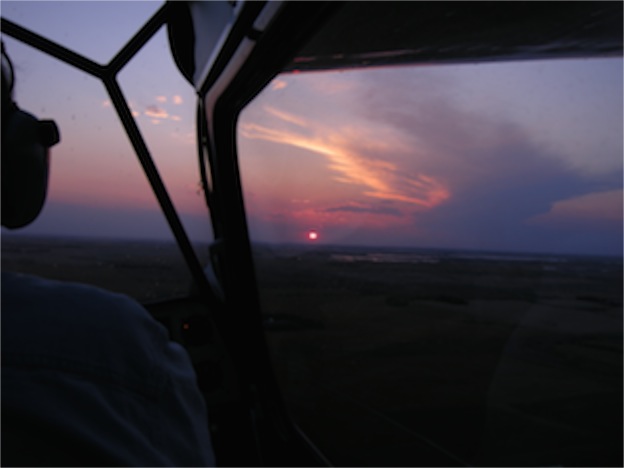 By the way, the sunset was gorgeous again!
By the way, the sunset was gorgeous again!
Regardless of the origins of the phrase, it was common language among the pilots with whom I grew up to speak of a fatal aircraft accident as someone having “bought the farm.” So the phrase has been a part of my psyche for as long as I can remember.

In each generation, there were other jobs to support the fragile economy of a dryland family farm in the center of North Dakota. Susan’s grandfather began to raise his family on the farm and her father lived on the place into his teen years, but after the Second World War, they moved the house into town. Her grandfather served as a justice of the peace and held several other jobs. Her father went away to school and trained as an electrician. He worked as an electrician all of his life, but there was always a bit of the farm in him. When he reached his eighties, and moved to Rapid City, he frequently would answer “farmer” when people asked him what his work had been even though he earned his living as an electrician.
Other family members sold the land that they had inherited. Susan’s father kept his quarter for all of his life. It was deeply meaningful for him to know that he owned a quarter of farmland. When he died, however, it wasn’t practical for the three daughters, all living in different states, to continue to own the land. The renter who farmed the land is a good farmer and he was interested in buying the land. A deal was easily struck and last spring the transaction was finalized. But all of the dealings were done by phone and e-mail. We had never met the farmer face to face. So yesterday was our opportunity. Even though he had combines in the field, he took time to spend a delightful evening with us. We went to their home and visited and then took a drive around their place. The operation is diverse, growing wheat, canola and sunflowers. There is even a small plot of soybeans planted as an experiment, but it is a bit short of the moisture that is required for the beans to thrive. The quarter that was owned by Susan’s family is all sunflowers.

Jerry and Mary are hardworking and well-organized farmers. Mary has worked for the Post Office for years to support the family operation. Jerry’s family has been working the land for several generations and he knows the business. He is forward-looking and careful to research and keep up with the latest in modern agriculture. They are not big by the standards of North Dakota farms in this generation. They still run a family operation, hiring custom combiners to help with the harvest. Jerry spends a lot of time in the tractor working his fields. Over the years they have been willing to live with little personal comfort and few material possessions in order to pursue the life of farming. Long days have become a way of life for them.

So I got to see the farm from the air. It was a lovely evening and the air was very smooth. The Scout is a great airplane for taking pictures, as the passengers have windows on both sides. The adventure seemed to be an appropriate way to seal the deal and launch a new friendship.
So Jerry and Mary have bought the farm in the best sense of the phrase. They are living on the land and taking care of it. It feels good to know that the land that was so deeply meaningful to my father-in-law has passed on to a family that respects its heritage and works hard to care for it. We may have sold the farm, but we have gained wonderful new friends.And, as a fan of sunflowers, who plants some in his garden each year, I am delighted to see that field of yellow faces facing the sun.

Copyright © 2012 by Ted Huffman. I wrote this. If you want to copy it, please ask for permission. There is a contact me button at the bottom of this page. If you want to share my blog a friend, please direct your friend to my web site.
Watching the Sunset
09/08/12 04:23
I have thousands of digital images on my computer. I carry a camera with me almost all of the time and I enjoy taking pictures. When I began this blog, my goal was to choose one picture to go with each blog. The formula for the blog came from the old saying, “a picture is worth a thousand words.” My idea was to choose one image and one thousand words to share. Over the years, the idea has evolved. I began to use stock images from time to time when I didn’t have a picture of my own. I also began writing about things that were occurring in distant locations, and often accompanied those blog with news photos. Later I migrated my web site to a new host and changed the software I was using to develop it. In that move I changed the look of the page and began to use multiple images. Life changes and the new blog is working well for now.
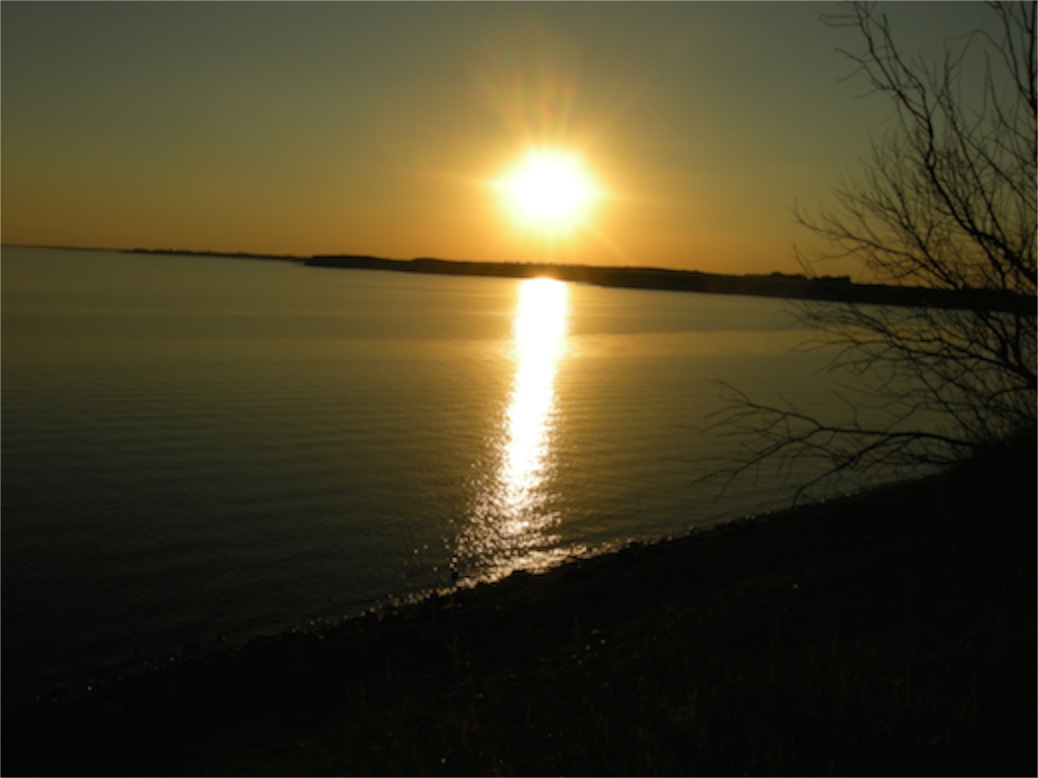
There is, however, something meaningful about the discipline of making photographs each day, sorting through the images and selecting one or two that make a statement about the day. Last evening, as I uploaded the images from yesterday, they were all sunset shots. We drove a little over 400 miles and I didn’t get out the camera until the evening when we went for a walk. As I looked at the images, I remembered other sunset shots. I like to take sunrise and sunset shots across the water. As I looked through the images on my computer, I noticed that sunset pictures are almost always a product of vacation. Part of this is the way that our house sits near the crest of a hill. We live in sunrise territory. Our view to the east is almost unrestricted. Our view to the west looks into forest and hills. Still we get nice sunsets at home. The main difference between being at home and being on vacation is how we spend our time.
At home, we have plenty of evening meetings. On evenings when we don’t have meetings, we tend to try to get a little work done after dinner. Usually the work consists of domestic chores. With two people working away from the house, we need to spend our at home time with tasks like mowing the lawn, cleaning the house, and light maintenance. There are always plenty of undone chores around our place. So we tend to keep going and don’t take time to just sit and observe our world. Most evenings when we do slow down and relax, it is dark and we are inside. I curl up with a book in a comfortable chair.
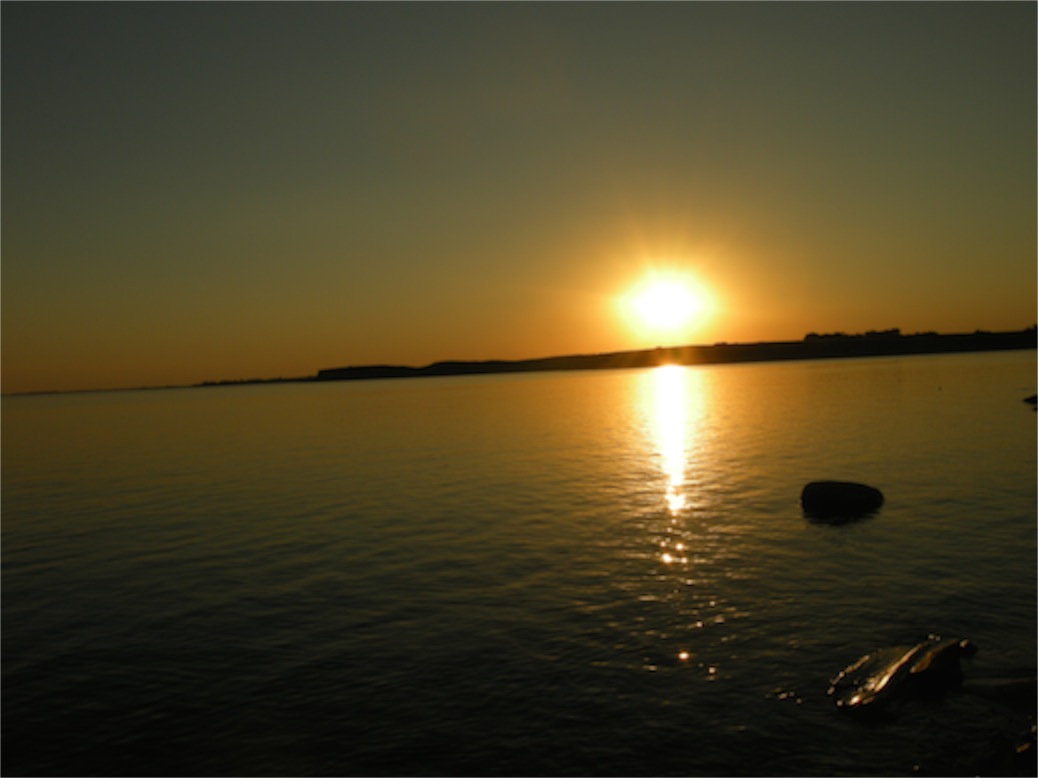
On vacation we take time to go for walks and often, in the evening, we have time to just sit and watch the sunset. Our forebears found time to sit and watch. In the days before electricity, there were plenty of wakeful hours when the tasks of life couldn’t be pursued. They got good at observing the movement of the planets and stars across the night sky. They remembered the phases of the moon and used them to mark the passage of time. They watched the sunsets and sunrises each day and paid attention to the birds and animals. They tuned in to the natural rhythms of life.
We tend to spend too much time inside. We like our climate-controlled, comfortable spaces. We like our reading lamps and televisions and computer screens. Whenever I read statistics about how much time the average American spends watching television I am shocked. We don’t watch television very much. Sometimes we go days without turning on the set. But when I read the statistics about computer use, I know that I exceed the averages. It seems that I am always sitting in front of the screen clicking on the keys. I’ve become habituated to the daily use of the machine. This blog is just one example. I read other blogs. I check the news. I read about things happening in distant locations. I do research. I read the bible on my computer. I do a lot with the machine.
Using the devices is not the problem, but there is a need for balance.
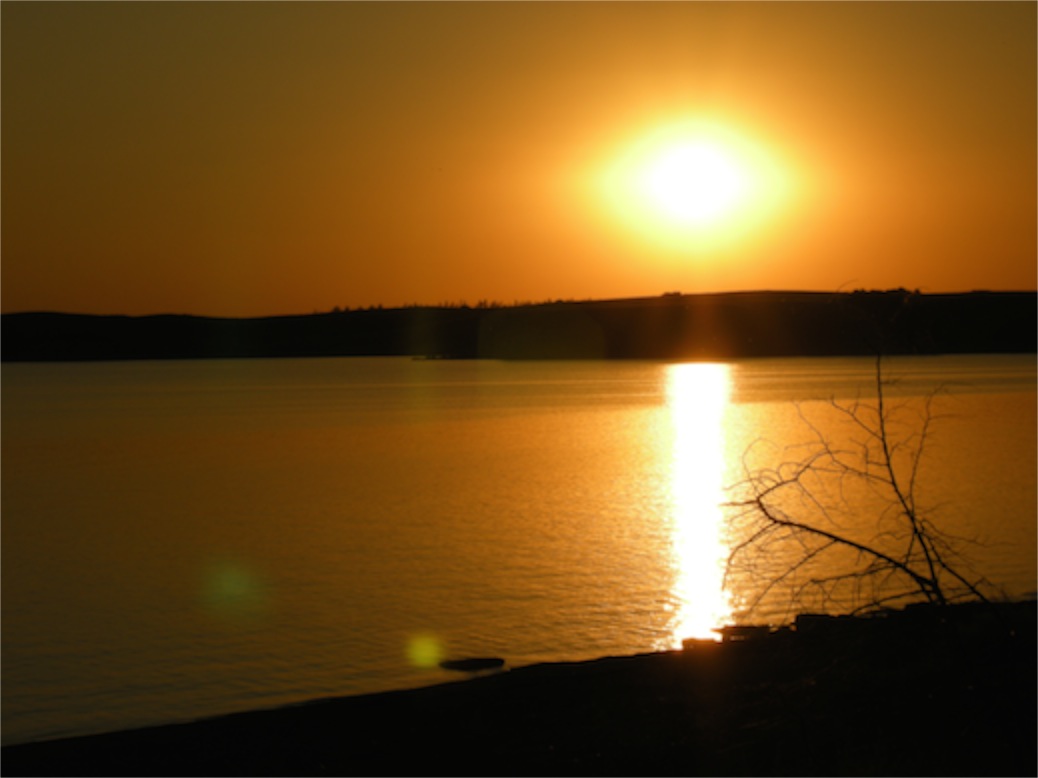
Vacation is one way for me to restore balance in my life. I have a deeply ingrained sense of the need to work. I enjoy my work and I keep active. But there are times when sitting is critical to keeping one’s mind and spirit healthy. When we are focused on work, our attention turns to what we can accomplish. I think about my creativity, my responsibilities, my contacts, my goals. These are important, but they are not the most important things in the world. When I sit and watch a sunset I am reminded that there is much that goes on without my action. The beauty of a sunset is not dependent upon my looking in order to exist. The glory of creation is revealed whether or not I am paying attention.
As I watched the sunset last night, I was aware that the scene was relatively modern. The lake is the result of the massive Garrison Dam across the Missouri. It wasn’t always here. The mighty Missouri flowed through the bottomlands in this part of the world. There were breaks and relatively steep hills leading down to the river. Up on the flat the prairie stretched for miles – as far as one could see. It was the domain of buffalo and antelope, wolves and coyotes, rabbits and mice and fox. The river breaks were the place to find deer and an occasional bear. The skies teemed with birds, but there were a lot fewer seagulls than we see these days now that the lake is here.
In geological time, the lake is a brief interlude. It will one day be gone. If the dam does not fail and is not removed, the lake will fill with dirt and silt and the river will return. But this will not happen in my lifetime. What I can observe is a tiny fraction of the whole of reality.
Sometimes it helps my perspective to just sit and watch the sunset and be reminded how small I am in the larger picture of this world.
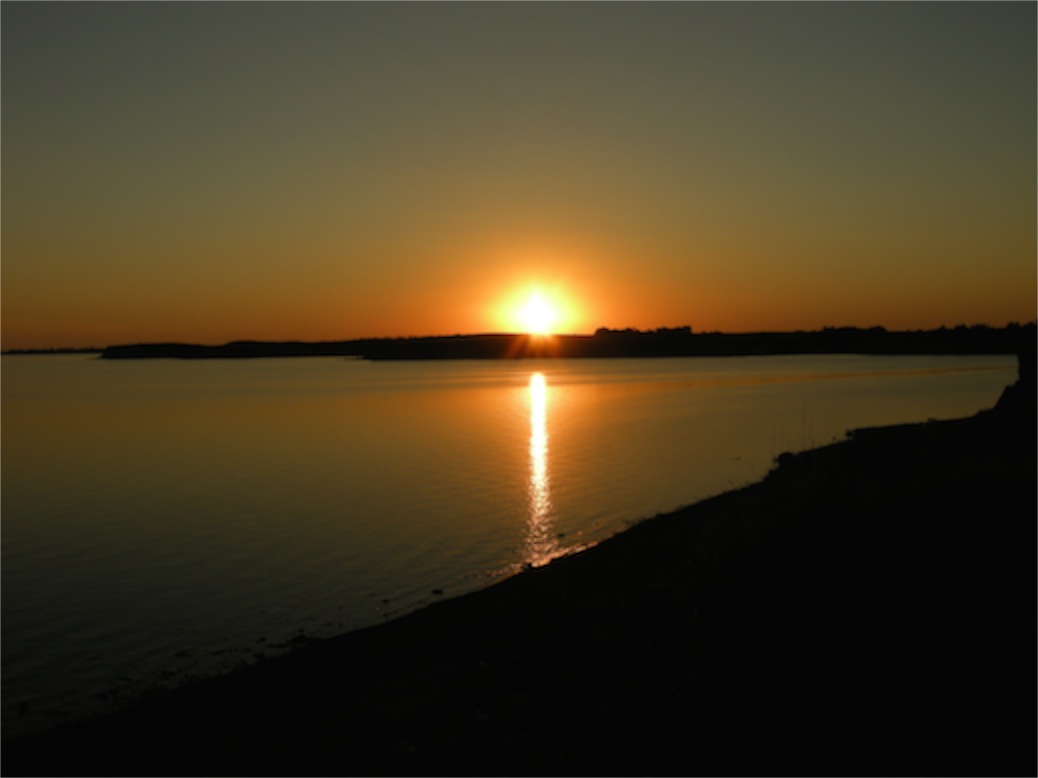

There is, however, something meaningful about the discipline of making photographs each day, sorting through the images and selecting one or two that make a statement about the day. Last evening, as I uploaded the images from yesterday, they were all sunset shots. We drove a little over 400 miles and I didn’t get out the camera until the evening when we went for a walk. As I looked at the images, I remembered other sunset shots. I like to take sunrise and sunset shots across the water. As I looked through the images on my computer, I noticed that sunset pictures are almost always a product of vacation. Part of this is the way that our house sits near the crest of a hill. We live in sunrise territory. Our view to the east is almost unrestricted. Our view to the west looks into forest and hills. Still we get nice sunsets at home. The main difference between being at home and being on vacation is how we spend our time.
At home, we have plenty of evening meetings. On evenings when we don’t have meetings, we tend to try to get a little work done after dinner. Usually the work consists of domestic chores. With two people working away from the house, we need to spend our at home time with tasks like mowing the lawn, cleaning the house, and light maintenance. There are always plenty of undone chores around our place. So we tend to keep going and don’t take time to just sit and observe our world. Most evenings when we do slow down and relax, it is dark and we are inside. I curl up with a book in a comfortable chair.

On vacation we take time to go for walks and often, in the evening, we have time to just sit and watch the sunset. Our forebears found time to sit and watch. In the days before electricity, there were plenty of wakeful hours when the tasks of life couldn’t be pursued. They got good at observing the movement of the planets and stars across the night sky. They remembered the phases of the moon and used them to mark the passage of time. They watched the sunsets and sunrises each day and paid attention to the birds and animals. They tuned in to the natural rhythms of life.
We tend to spend too much time inside. We like our climate-controlled, comfortable spaces. We like our reading lamps and televisions and computer screens. Whenever I read statistics about how much time the average American spends watching television I am shocked. We don’t watch television very much. Sometimes we go days without turning on the set. But when I read the statistics about computer use, I know that I exceed the averages. It seems that I am always sitting in front of the screen clicking on the keys. I’ve become habituated to the daily use of the machine. This blog is just one example. I read other blogs. I check the news. I read about things happening in distant locations. I do research. I read the bible on my computer. I do a lot with the machine.
Using the devices is not the problem, but there is a need for balance.

Vacation is one way for me to restore balance in my life. I have a deeply ingrained sense of the need to work. I enjoy my work and I keep active. But there are times when sitting is critical to keeping one’s mind and spirit healthy. When we are focused on work, our attention turns to what we can accomplish. I think about my creativity, my responsibilities, my contacts, my goals. These are important, but they are not the most important things in the world. When I sit and watch a sunset I am reminded that there is much that goes on without my action. The beauty of a sunset is not dependent upon my looking in order to exist. The glory of creation is revealed whether or not I am paying attention.
As I watched the sunset last night, I was aware that the scene was relatively modern. The lake is the result of the massive Garrison Dam across the Missouri. It wasn’t always here. The mighty Missouri flowed through the bottomlands in this part of the world. There were breaks and relatively steep hills leading down to the river. Up on the flat the prairie stretched for miles – as far as one could see. It was the domain of buffalo and antelope, wolves and coyotes, rabbits and mice and fox. The river breaks were the place to find deer and an occasional bear. The skies teemed with birds, but there were a lot fewer seagulls than we see these days now that the lake is here.
In geological time, the lake is a brief interlude. It will one day be gone. If the dam does not fail and is not removed, the lake will fill with dirt and silt and the river will return. But this will not happen in my lifetime. What I can observe is a tiny fraction of the whole of reality.
Sometimes it helps my perspective to just sit and watch the sunset and be reminded how small I am in the larger picture of this world.

Copyright © 2012 by Ted Huffman. I wrote this. If you want to copy it, please ask for permission. There is a contact me button at the bottom of this page. If you want to share my blog a friend, please direct your friend to my web site.
North Dakota
08/08/12 04:39
My friends tell me that I pronounce the word “Dakota” differently when I say North Dakota as opposed to South Dakota. They say that the “o” sounds different, that I open my mouth wider and hold the vowel sound longer. They also tell me that I end the word “coda” instead of “cot.” I’m not sure that I can hear the distinction. I can put on a fake “Min-ee-so-da” accent and mispronounce words on purpose, but in my normal speech the word “Dakota” sounds the same to me each time I use it.
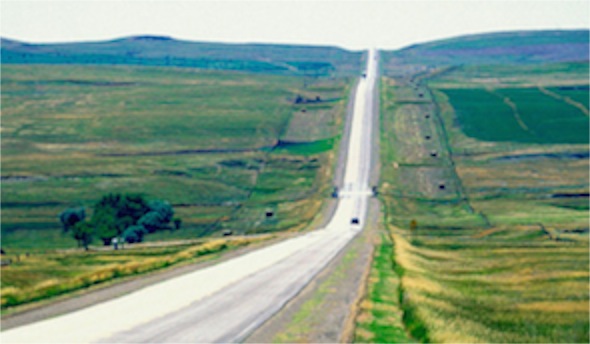 They tell me that I pronounce the word like someone who has lived in North Dakota. Fair enough. We lived in North Dakota for seven years from 1978 to 1985. It was a wonderful experience. I enjoyed the place and I enjoyed the people a great deal. I grew up in Montana where people love to tell North Dakota jokes. The jokes are told in lots of different forms. They are the same stories that get told as Polish jokes, Norwegian jokes or other jokes on specific nationalities or places. Some of the jokes are even told as blond jokes. They are mostly mild jokes in which someone is portrayed as being less intelligent than others. Like this: Did you hear that they had to stop painting 911 on the police cars in North Dakota? The locals would see the 911 on the back of the car and steal it because they thought it was a Porsche. Another one reports that the telephone pole is the state tree of North Dakota and its state bird is the mosquito. You get the idea.
They tell me that I pronounce the word like someone who has lived in North Dakota. Fair enough. We lived in North Dakota for seven years from 1978 to 1985. It was a wonderful experience. I enjoyed the place and I enjoyed the people a great deal. I grew up in Montana where people love to tell North Dakota jokes. The jokes are told in lots of different forms. They are the same stories that get told as Polish jokes, Norwegian jokes or other jokes on specific nationalities or places. Some of the jokes are even told as blond jokes. They are mostly mild jokes in which someone is portrayed as being less intelligent than others. Like this: Did you hear that they had to stop painting 911 on the police cars in North Dakota? The locals would see the 911 on the back of the car and steal it because they thought it was a Porsche. Another one reports that the telephone pole is the state tree of North Dakota and its state bird is the mosquito. You get the idea.
On the other hand, my father was born and raised in North Dakota, and he always spoke of the state with respect and fond memories. He would be quick to point out that the state supported farm and ranch families during the Great Depression, that the State Bank and the State Mill and Elevator were two state institutions that demonstrated good governance. He would cite education statistics and tell us that North Dakota knew how to support schools and build good roads at the same time. North Dakota was the first state in the nation to complete its Interstate highway system, according to my father. He also could go on at length about how North Dakota had a fair tax system – better than any of its neighbors.
Whether or not this is true, the positive reports about the state were upheld by the experience of living there. The people are kind and caring and considerate of one another. They can be a bit slow to accept newcomers, but once you earn their respect, they are quick to show it. Despite the reputation, the weather is not bad. Yes, it can get cold in the winter. Yes, it was North Dakota that contributed the term “snirt” to the vocabulary. Snirt is a combination of snow and dirt that is driven through the air by high winds. But it is a state with incredible prairie beauty and the warmth of the people makes up from the occasional week of -30 weather.
We’re heading up north today on the first leg of the second part of our summer vacation. Susan will officiate at the wedding of a cousin later this week. The wedding will be outdoors at Strawberry Lake, one of the places that you need to know about in order to find. (Hint: it isn’t too far from Minot.) Of course the weather forecast is calling for thundershowers with a 70% chance of rain. In North Dakota, such a forecast is considered good luck. All rain is treasured, even the rain that comes during harvest.
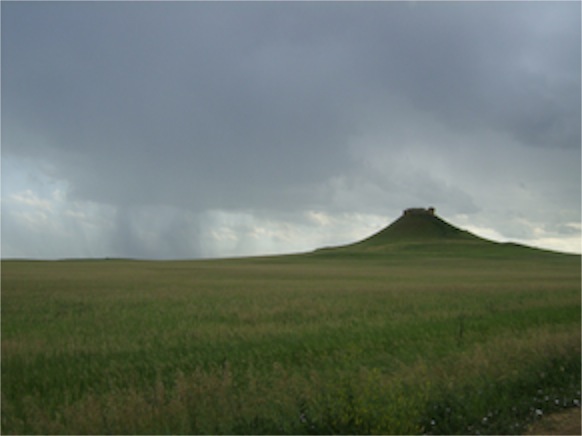 We’ve seen some storms in North Dakota over the years. One time, we were camping at Heart Butte Dam with our children and some friends. The clouds got so dark that we pitched our tents under a picnic shelter. It was a good thing. The wind and rain would have been a bit much for our small tents. We might have ended up sleeping in our cars. As it was the shelter provided a safe, dry place protected from the wind.
We’ve seen some storms in North Dakota over the years. One time, we were camping at Heart Butte Dam with our children and some friends. The clouds got so dark that we pitched our tents under a picnic shelter. It was a good thing. The wind and rain would have been a bit much for our small tents. We might have ended up sleeping in our cars. As it was the shelter provided a safe, dry place protected from the wind.
There is an occasional tornado in the state, but it lies north of tornado alley.
We have seen some pretty impressive blizzards over the years.
We’re camping on this trip, but we’ve upgraded from the days of tent camping. These days we have a slide-in pickup camper with a pop-top. That means that we have 2’ of tent canvas between the roof and the rest of the camper when the top is in the up position. The bed area is surrounded by canvas and much like sleeping in a tent, except the mattress is better and the roof is solid. There are limits to how much wind the structure will take, but we’ve had the camper for years and we know the limits well. We keep our weather radio handy and, on occasion, have retreated to a motel for the night when the forecast is for high winds. With the top in the down position, the camper has weathered really big winds and kept its contents secure.
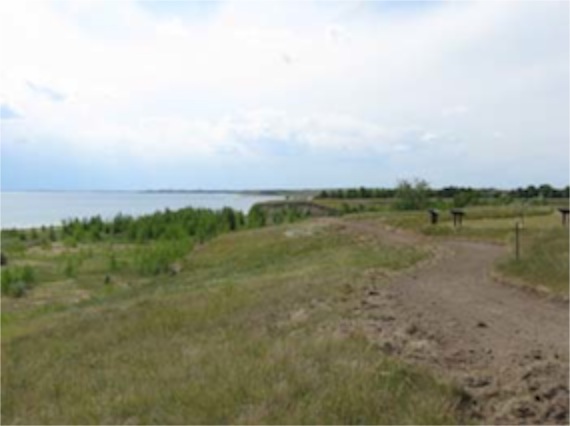 We’ll be spending a few nights at Fort Stevenson State Park. The park is on a spit of land beside Lake Sakakawea, the reservoir formed by the Garrison Dam across the Missouri. Yes, they spell the name of Sacagawea differently in North Dakota than they do in Montana. They pronounce it differently, too. The North Dakota way is closer to the way the Dakota people would have pronounced it. The Montana way is perhaps closer to the way the Shoshone would say it. No worries, Sacagawea was a Lemhi Shoshone who spoke both languages and English as well. She probably could speak more than a bit of French, too after marrying Toussaint Charbonneau. There is more than one way to pronounce the name of a worldly woman who was an interpreter and a guide. For the record, in Longview, Washington, there is another lake named for the same woman. They spell it “Sacajawea” out there.
We’ll be spending a few nights at Fort Stevenson State Park. The park is on a spit of land beside Lake Sakakawea, the reservoir formed by the Garrison Dam across the Missouri. Yes, they spell the name of Sacagawea differently in North Dakota than they do in Montana. They pronounce it differently, too. The North Dakota way is closer to the way the Dakota people would have pronounced it. The Montana way is perhaps closer to the way the Shoshone would say it. No worries, Sacagawea was a Lemhi Shoshone who spoke both languages and English as well. She probably could speak more than a bit of French, too after marrying Toussaint Charbonneau. There is more than one way to pronounce the name of a worldly woman who was an interpreter and a guide. For the record, in Longview, Washington, there is another lake named for the same woman. They spell it “Sacajawea” out there.
I’m looking forward to spending a few days in North Dakota. Up there no one thinks I have an accent.
By the way, blog posts may be a bit irregular for the next few weeks. We will be camping and I am not certain of Internet access. I’ll keep writing and post to the Internet when I am able.

On the other hand, my father was born and raised in North Dakota, and he always spoke of the state with respect and fond memories. He would be quick to point out that the state supported farm and ranch families during the Great Depression, that the State Bank and the State Mill and Elevator were two state institutions that demonstrated good governance. He would cite education statistics and tell us that North Dakota knew how to support schools and build good roads at the same time. North Dakota was the first state in the nation to complete its Interstate highway system, according to my father. He also could go on at length about how North Dakota had a fair tax system – better than any of its neighbors.
Whether or not this is true, the positive reports about the state were upheld by the experience of living there. The people are kind and caring and considerate of one another. They can be a bit slow to accept newcomers, but once you earn their respect, they are quick to show it. Despite the reputation, the weather is not bad. Yes, it can get cold in the winter. Yes, it was North Dakota that contributed the term “snirt” to the vocabulary. Snirt is a combination of snow and dirt that is driven through the air by high winds. But it is a state with incredible prairie beauty and the warmth of the people makes up from the occasional week of -30 weather.
We’re heading up north today on the first leg of the second part of our summer vacation. Susan will officiate at the wedding of a cousin later this week. The wedding will be outdoors at Strawberry Lake, one of the places that you need to know about in order to find. (Hint: it isn’t too far from Minot.) Of course the weather forecast is calling for thundershowers with a 70% chance of rain. In North Dakota, such a forecast is considered good luck. All rain is treasured, even the rain that comes during harvest.

There is an occasional tornado in the state, but it lies north of tornado alley.
We have seen some pretty impressive blizzards over the years.
We’re camping on this trip, but we’ve upgraded from the days of tent camping. These days we have a slide-in pickup camper with a pop-top. That means that we have 2’ of tent canvas between the roof and the rest of the camper when the top is in the up position. The bed area is surrounded by canvas and much like sleeping in a tent, except the mattress is better and the roof is solid. There are limits to how much wind the structure will take, but we’ve had the camper for years and we know the limits well. We keep our weather radio handy and, on occasion, have retreated to a motel for the night when the forecast is for high winds. With the top in the down position, the camper has weathered really big winds and kept its contents secure.

I’m looking forward to spending a few days in North Dakota. Up there no one thinks I have an accent.
By the way, blog posts may be a bit irregular for the next few weeks. We will be camping and I am not certain of Internet access. I’ll keep writing and post to the Internet when I am able.
Copyright © 2012 by Ted Huffman. I wrote this. If you want to copy it, please ask for permission. There is a contact me button at the bottom of this page. If you want to share my blog a friend, please direct your friend to my web site.
Enjoying the Stories
07/08/12 05:27
I am a fan of fiction. I almost always am reading a novel. My current favorite publishing house is McSweeney’s a small firm that seems to be good at discovering new authors and introducing them. McSweeney’s also publishes a quarterly journal of fiction and nonfiction works. I’m saving my copy of Dave Eggers new novel, A Hologram for the King, for our upcoming vacation. I like reading Eggers in part because it is good to know that there are still a few authors around who earn their living crafting words for others.
The business of publication is changing dramatically and it is difficult to see what the future may be. People are buying fewer books. It may be that they are reading less, I’m not sure about that, but it is clear that more and more people are accessing their fiction through electronic devices. Libraries are getting proficient at distributing books to those with e-readers. Traditional bookstores are disappearing and online sellers are shifting form print to electronic media.
I still like having a book in my hands, but I am changing, too. I don’t subscribe to as many magazines as I once did. I used to share subscriptions with others, receiving their magazines a week or a month late and passing on the magazines that I had read to others. The New Yorker and Atlantic Monthly used to be good sources for short stories. Both still “print” short stories, but it is easier to access their material electronically. The New Yorker has a way to access only the short stories. Now that the magazine isn’t supporting cartoonists the way it once did, the lure of the actual magazine has decreased for me. Getting the short stories is sufficient, even though many of their short stories are repeats of stories previously printed in the magazine.
It was through this electronic media that I ran across a story by John Updike that was originally printed in the New Yorker in December of 1981. I wasn’t receiving the magazine in those days and I hadn’t previously read the story. Updike was such a prolific author that I haven’t begun to read all that he wrote. He is best known for his novels. The four Rabbit Angstrom novels are perhaps his best known. I read three of them. I was bored with his character at that point. The character was marked by bad decision after bad decision and I was ready for someone who made good choices for a change. But Updike also published 12 collections of poetry and 18 collections of short stories. He published a dozen nonfiction works as well as his 21 novels. He wrote a lot. It isn’t a surprise that there are stories I haven’t read.
At any rate, his story, “Learn a Trade,” struck me yesterday. The main character, Fegley, is a successful artist. He grew up in Missouri, where his father was a carpenter. When he became interested in art, his father urged him to “learn a trade.” He didn’t follow his father’s advice. In the story, he is now grown with four children and finds himself agreeing with his father’s advice. He tries to encourage his children to become interested in science and to learn some practical skills. The children, however, seem to drift off into the world of art. One daughter is working on a novel, another makes pinch pots in California. The eldest son showed promise as an athlete, but now is working on a film and hanging out with creative people on the fringes of the movie business. Fegley hopes his young son will learn a trade. He shows an interest in carpentry, which seems promising to Fegley. His ex-wife calls him and tells him that the son is making mobiles. Fegley doesn’t like the news, but agrees to see the mobiles. It turns out that the mobiles are beautiful. The story closes with Fegley saying, “That’s right, keep breaking my heart.”
My little abstract doesn’t do justice to Updike’s story, but perhaps it serves as a little illustration of a tension that must have inhabited the author’s mind. How does one balance the artistic and practical? Updike found his own balance. His first published book was poetry. Poetry is wonderful and lasting and it doesn’t sell enough books for poets to survive off of their craft. Updike earned his living with essays, short stories and novels. Poetry is nice, but it doesn’t pay the bills.
I have a similar love affair with the creative life, though my talent falls far short of people who are able to earn their living with writing. Over the years I have had an article published here or there. Some years I was able to earn a bit of money from freelance writing, though never enough to support my family. And, unlike “real” authors, I have a deep love for my “day job.” I don’t long for a day when I give up my vocation for the life of a writer. And I haven’t written that much, really. My daily essays are joined by some unpublished pieces of fiction, a few magazine articles and some educational resources that weren’t very big sellers. That’s about it.
But there is a part of me that admires those who are artistic and who have figured out a way to pursue their art. They have found the discipline to hone their craft and add beauty to this world. It is a contribution of value that cannot be measured. How impoverished we would be without visual arts, music and good literature to add to the joy of living.
I used to think that one day I’d make a stab at the great American novel. That seems less likely as I grow older without ever having finished a single novel. I know that there are authors who started publishing late in life, but one can’t get published that which one has not written. These days, I’ve lowered my goal. It seems like it would be nice to have a short story worthy of publication some day. Perhaps I ought to focus on writing a single poem. But if I never do, I will still have lived in a time when there is plenty of creative writing going on. And I can access this art by reading.
Unlike Fegley in Updike’s story, it doesn’t keep breaking my heart.
The business of publication is changing dramatically and it is difficult to see what the future may be. People are buying fewer books. It may be that they are reading less, I’m not sure about that, but it is clear that more and more people are accessing their fiction through electronic devices. Libraries are getting proficient at distributing books to those with e-readers. Traditional bookstores are disappearing and online sellers are shifting form print to electronic media.
I still like having a book in my hands, but I am changing, too. I don’t subscribe to as many magazines as I once did. I used to share subscriptions with others, receiving their magazines a week or a month late and passing on the magazines that I had read to others. The New Yorker and Atlantic Monthly used to be good sources for short stories. Both still “print” short stories, but it is easier to access their material electronically. The New Yorker has a way to access only the short stories. Now that the magazine isn’t supporting cartoonists the way it once did, the lure of the actual magazine has decreased for me. Getting the short stories is sufficient, even though many of their short stories are repeats of stories previously printed in the magazine.
It was through this electronic media that I ran across a story by John Updike that was originally printed in the New Yorker in December of 1981. I wasn’t receiving the magazine in those days and I hadn’t previously read the story. Updike was such a prolific author that I haven’t begun to read all that he wrote. He is best known for his novels. The four Rabbit Angstrom novels are perhaps his best known. I read three of them. I was bored with his character at that point. The character was marked by bad decision after bad decision and I was ready for someone who made good choices for a change. But Updike also published 12 collections of poetry and 18 collections of short stories. He published a dozen nonfiction works as well as his 21 novels. He wrote a lot. It isn’t a surprise that there are stories I haven’t read.
At any rate, his story, “Learn a Trade,” struck me yesterday. The main character, Fegley, is a successful artist. He grew up in Missouri, where his father was a carpenter. When he became interested in art, his father urged him to “learn a trade.” He didn’t follow his father’s advice. In the story, he is now grown with four children and finds himself agreeing with his father’s advice. He tries to encourage his children to become interested in science and to learn some practical skills. The children, however, seem to drift off into the world of art. One daughter is working on a novel, another makes pinch pots in California. The eldest son showed promise as an athlete, but now is working on a film and hanging out with creative people on the fringes of the movie business. Fegley hopes his young son will learn a trade. He shows an interest in carpentry, which seems promising to Fegley. His ex-wife calls him and tells him that the son is making mobiles. Fegley doesn’t like the news, but agrees to see the mobiles. It turns out that the mobiles are beautiful. The story closes with Fegley saying, “That’s right, keep breaking my heart.”
My little abstract doesn’t do justice to Updike’s story, but perhaps it serves as a little illustration of a tension that must have inhabited the author’s mind. How does one balance the artistic and practical? Updike found his own balance. His first published book was poetry. Poetry is wonderful and lasting and it doesn’t sell enough books for poets to survive off of their craft. Updike earned his living with essays, short stories and novels. Poetry is nice, but it doesn’t pay the bills.
I have a similar love affair with the creative life, though my talent falls far short of people who are able to earn their living with writing. Over the years I have had an article published here or there. Some years I was able to earn a bit of money from freelance writing, though never enough to support my family. And, unlike “real” authors, I have a deep love for my “day job.” I don’t long for a day when I give up my vocation for the life of a writer. And I haven’t written that much, really. My daily essays are joined by some unpublished pieces of fiction, a few magazine articles and some educational resources that weren’t very big sellers. That’s about it.
But there is a part of me that admires those who are artistic and who have figured out a way to pursue their art. They have found the discipline to hone their craft and add beauty to this world. It is a contribution of value that cannot be measured. How impoverished we would be without visual arts, music and good literature to add to the joy of living.
I used to think that one day I’d make a stab at the great American novel. That seems less likely as I grow older without ever having finished a single novel. I know that there are authors who started publishing late in life, but one can’t get published that which one has not written. These days, I’ve lowered my goal. It seems like it would be nice to have a short story worthy of publication some day. Perhaps I ought to focus on writing a single poem. But if I never do, I will still have lived in a time when there is plenty of creative writing going on. And I can access this art by reading.
Unlike Fegley in Updike’s story, it doesn’t keep breaking my heart.
Copyright © 2012 by Ted Huffman. I wrote this. If you want to copy it, please ask for permission. There is a contact me button at the bottom of this page. If you want to share my blog a friend, please direct your friend to my web site.
Food Choices
06/08/12 04:46

As is often the case for us on Sundays, we didn’t put much effort into preparing dinner last night. We warmed up leftover pot roast, sweet potatoes and carrots. It was a simple, basic and delicious meal. But it had one small addition that made the meal memorable. Just before we sat down, I went out to the garden and got a fresh tomato, washed it and cut it into wedges. The flavor was wonderful. I saved a couple of slices for dessert.
I am really not much of a gardener. I don’t enjoy weeding and sometimes let my garden get ahead of me. I tend to pick up seeds and plants from local sources, but I don’t do any research into the sources of those seeds and plants. I live a busy life and travel quite a bit and sometimes my garden is neglected. Still there is great pleasure in producing at least a bit of the food that we eat.
We were late in planting our garden this year – not late for our place, but late for this particular year. We had such a warm spring, that the entire month of May could have been used for the plants to grow, but having seen late frosts in past years and being busy with other things, we didn’t get our garden in very early. That means that even though the weather has been great for tomatoes, we are just beginning to harvest the first fruits. The plants look healthy and are pretty large for this time of the year, so there is great promise for a steady stream of tomatoes until frost sets in sometime in the fall.
I have read various articles on heritage and heirloom seeds, on brix testing for flavor density and other ways that are used to measure and compare various tomatoes. I’m sure that if I took time to study these reports, I might be able to improve the flavor of my tomatoes. It would be a good challenge, but probably a task that will wait until retirement – or be left to someone else. I’m all in favor of pursuing flavor. I think that the comparison between a home-grown tomato and the ones that are available in the supermarket is dramatic enough that I don’t need a refractometer to determine which tomatoes taste the best.
Food, of course, is important to all of us. Our lives and our health are dependent upon the food we eat. And there is more than a small amount of unhealthy eating going on in our community. Sometimes I have the opportunity to go shopping with someone who is receiving a bit of assistance and I am often struck by the food choices they make. In the stores of our community the highest quality and freshest foods also cost the most. When you are trying to squeeze the most food out of a very limited budget, you end up with quite a bit of over-processed food. Of course there are ways to stretch a food budget that seem obvious to me, but are unknown to some of the people with whom I work. I think of dried beans as a staple for a budget diet. They are inexpensive, easy to store, and once you learn to soak and cook them properly, they will produce a filling and flavorful meal. That assumes, of course, that you have access to a kitchen – or at least a burner and a pot to boil water. Another food that we have used to make our grocery dollars go farther is peanut butter. But the price continues to rise. The least expensive brands are filled with sugar and other items that make them less nutritious that some of the more expensive brands. All you need for good peanut butter is peanuts. The ones that have a whole list of ingredients are to be avoided in my opinion.
My list of grocery shopping tips is probably not helpful for anyone else since so much of food shopping is about taste. But the experience of shopping with others points out a balance that we need to achieve. We need to make food available and affordable for all the people of this earth. This means that a lot of people simply will not have access to the most expensive items. Modern production agriculture is the direct result of well-meaning people working very hard to find ways to produce more food to feed hungry people. The result is a system of agriculture that consumes a lot of fertilizer and fuel and produces food that requires an extensive transportation system to distribute it from the farm to people in distant cities.
I delighted in reading Barbara Kingsolver’s “Animal, Vegetable, Miracle” about eating locally. The ironic part of the book for me, however, was that in order to make their one-year experiment of eating locally work, their entire family moved from New Mexico to Pennsylvania. The fuel they consumed in the move wasn’t considered as part of the cost of their food. Figuring that in changes the equation. I’m thinking that a year of trying to garden and eat locally would be different for their family if they were to try the same adventure in Bridger or Oglala, South Dakota. Something tells me that we’d bump into them at Wal-Mart before the end of the year. And quite a few of the families with whom we work don’t have the luxury of a healthy book advance to fund a year of pursuing a specific eating discipline, unless you count commodities as a food discipline.
Good ideas need to be adapted to fit in the real world. At this point, most of the debates about ethical eating are taking place among people who have a lot more choices than are available to the residents of Shannon or Ziebach counties – home to some of our nation’s most impoverished families.
So I don’t pretend to have the solution to the challenge of food and eating. I think that all of us are guilty of making poor choices about food from time to time. I don’t have a single plan that will fit every family and situation.
But I do have the memory of that tomato that is lingering hours after I ate it. And I have the promise of many more tomatoes in the next few months. It is enough to keep me dabbling in the garden and continuing to think about the choices about food that I make.
Copyright © 2012 by Ted Huffman. I wrote this. If you want to copy it, please ask for permission. There is a contact me button at the bottom of this page. If you want to share my blog a friend, please direct your friend to my web site.
Rally week
05/08/12 05:24
I have never spent time in Las Vegas. I’ve been through the airport a couple of times and I’ve driven through the area several times, but I’ve never been tempted to stop and visit. I guess I’m not that big a fan of fake trees and imitations of world wonders. I have been told that there are great deals on food and lodging and that there are amazing entertainment possibilities. It is just that when I work with people in my day job, I tend to seek out lonely places rather than crowded places when I have time off.
I know that it probably isn’t accurate, but to my way of thinking, we have a significant amount of Las Vegas-style entertainment that comes our way in the hills every year during the Annual Sturgis Motorcycle Rally.
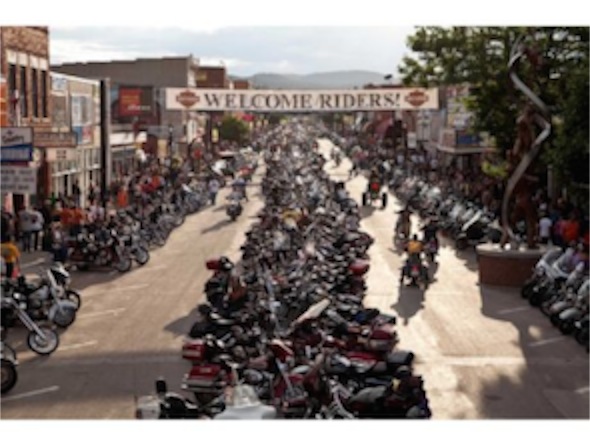 The rally is in full swing. Today, if you wanted, you could take a look at the 2012 Tattoo Expo at the Thunderdome, or watch fire dancers perform at the Buffalo Chip. There will be hula girls, comedians, bands, Go Go dancers, Karaoke, pancake breakfasts, burn-out competitions, tributes to veterans and a traveling replica of the Vietnam Memorial wall. There is even a Pickle Lickin’ Contest, though I wouldn’t recommend it as family entertainment. I don’t really understand the attraction of public machine gun shooting, either. I guess the joke contest might be interesting but then again there are a lot of jokes that are told at the rally that don’t get repeated in the workplace once the rally goers return to their homes. If you want to check out the Stars of Cigars at Deadwood Tobacco, you’ll have to wait until tomorrow. I’m not exactly sure what a Bikers Bellies Reception is, but I can probably pass on that as well.
The rally is in full swing. Today, if you wanted, you could take a look at the 2012 Tattoo Expo at the Thunderdome, or watch fire dancers perform at the Buffalo Chip. There will be hula girls, comedians, bands, Go Go dancers, Karaoke, pancake breakfasts, burn-out competitions, tributes to veterans and a traveling replica of the Vietnam Memorial wall. There is even a Pickle Lickin’ Contest, though I wouldn’t recommend it as family entertainment. I don’t really understand the attraction of public machine gun shooting, either. I guess the joke contest might be interesting but then again there are a lot of jokes that are told at the rally that don’t get repeated in the workplace once the rally goers return to their homes. If you want to check out the Stars of Cigars at Deadwood Tobacco, you’ll have to wait until tomorrow. I’m not exactly sure what a Bikers Bellies Reception is, but I can probably pass on that as well.
Of course the main entertainment of the week for those of us who live here are the many visitors who come to our community. We get to see all kinds of motorcycles and the people who ride them. Our area cafes and motels are full of vacationers. The people who come to the rally tend to be in a good mood while they are here so we have pleasant exchanges in the stores and gas stations.
There is an art show at the Buffalo Chip, but you don’t have to brave the crowds to see some real art. The paint jobs on some of the motorcycles parked around town are genuine works of art. Some of the tattoos that are displayed are likewise works of art, but you have to be into that sort of thing, I guess. I’m more interested in the men who have all of their tattoos high on their shoulder so that they only show when they are wearing a sleeveless t-shirt. I imagine that these people are doctors and lawyers and ministers and other folks who have jobs during the rest of the year where the display of tattoos isn’t expected or perhaps even allowed.
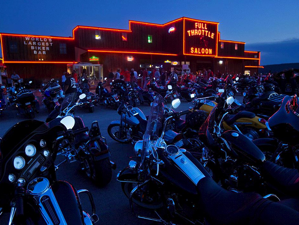 Of course the rally attracts all kinds of people. There are those who come with the intention of really letting their hair down. They camp at the Chip or one of the other Rally venues and spend their time drinking more than usual, behaving in ways that they wouldn’t at home and generally dropping their inhibitions. I may have quite a few friends in this category. At least there are friends and relatives from around the country who come to the rally, but don’t find time to call or drop by our house. I usually only find out that they were in our area after they have returned home and then I don’t hear any details about what they did while they were here other than attend the rally.
Of course the rally attracts all kinds of people. There are those who come with the intention of really letting their hair down. They camp at the Chip or one of the other Rally venues and spend their time drinking more than usual, behaving in ways that they wouldn’t at home and generally dropping their inhibitions. I may have quite a few friends in this category. At least there are friends and relatives from around the country who come to the rally, but don’t find time to call or drop by our house. I usually only find out that they were in our area after they have returned home and then I don’t hear any details about what they did while they were here other than attend the rally.
There are also folks who come for the scenic beauty of the Black Hills. They take lots of rides on beautiful winding roads, feel the wind in their hair, drive carefully, and delight in the scenic vistas. These folks probably aren’t out until 2 a.m. every night. They might enjoy a meal or two in really nice restaurants during their visit and take a stroll through one of the attractions that caters to tourists all year round.
And there are lots of other folks who choose different things to do. Some people just enjoy being in an environment where motorcycles are the norm and they aren’t viewed as somehow countercultural just because of the mode of transportation they have chosen.
Motorcycle enthusiasts come in all sizes and shapes. That’s part of what makes people watching during the rally so much fun. And the people who come to the rally come from all walks of life and from every socio-economic level of our society. The airport has an unusually high number of private jets during the rally. The campgrounds are filled with everything from inexpensive tents to million dollar motor homes. And we see motorcycles that are the product of a lot of investment. I guess that in some ways it is a cross-section of American society all on display.
Since motorcycles don’t have enclosed cabins, we get to see the people as they drive by. There are some impressive beards. And there are a lot of choices of clothing. I kind of like seeing the bikers in full leather. You have a feeling that they might survive a little slide down the highway. I worry about some of the people who wear less clothing than I do when swimming. It could take quite a while for the folks in the emergency room to pick all of the gravel out of them if they should have an accident.
And there are accidents. You can’t get that many people together without having some mishaps. On average there are two or three accidents with injuries each day during the rally. Some years there are lots of accidents with people coming and going across the state. Some years the statistics are better. Some years I fear reading the morning newspaper headlines. This doesn’t seem to be one of those years.
 So be careful out there. Look carefully for motorcycles each time you pull onto a street or change a lane. I may not take in any of the events of the rally, but I like having the guests come to visit our home. I want them to have a safe adventure and come back next year as well.
So be careful out there. Look carefully for motorcycles each time you pull onto a street or change a lane. I may not take in any of the events of the rally, but I like having the guests come to visit our home. I want them to have a safe adventure and come back next year as well.
I know that it probably isn’t accurate, but to my way of thinking, we have a significant amount of Las Vegas-style entertainment that comes our way in the hills every year during the Annual Sturgis Motorcycle Rally.

Of course the main entertainment of the week for those of us who live here are the many visitors who come to our community. We get to see all kinds of motorcycles and the people who ride them. Our area cafes and motels are full of vacationers. The people who come to the rally tend to be in a good mood while they are here so we have pleasant exchanges in the stores and gas stations.
There is an art show at the Buffalo Chip, but you don’t have to brave the crowds to see some real art. The paint jobs on some of the motorcycles parked around town are genuine works of art. Some of the tattoos that are displayed are likewise works of art, but you have to be into that sort of thing, I guess. I’m more interested in the men who have all of their tattoos high on their shoulder so that they only show when they are wearing a sleeveless t-shirt. I imagine that these people are doctors and lawyers and ministers and other folks who have jobs during the rest of the year where the display of tattoos isn’t expected or perhaps even allowed.

There are also folks who come for the scenic beauty of the Black Hills. They take lots of rides on beautiful winding roads, feel the wind in their hair, drive carefully, and delight in the scenic vistas. These folks probably aren’t out until 2 a.m. every night. They might enjoy a meal or two in really nice restaurants during their visit and take a stroll through one of the attractions that caters to tourists all year round.
And there are lots of other folks who choose different things to do. Some people just enjoy being in an environment where motorcycles are the norm and they aren’t viewed as somehow countercultural just because of the mode of transportation they have chosen.
Motorcycle enthusiasts come in all sizes and shapes. That’s part of what makes people watching during the rally so much fun. And the people who come to the rally come from all walks of life and from every socio-economic level of our society. The airport has an unusually high number of private jets during the rally. The campgrounds are filled with everything from inexpensive tents to million dollar motor homes. And we see motorcycles that are the product of a lot of investment. I guess that in some ways it is a cross-section of American society all on display.
Since motorcycles don’t have enclosed cabins, we get to see the people as they drive by. There are some impressive beards. And there are a lot of choices of clothing. I kind of like seeing the bikers in full leather. You have a feeling that they might survive a little slide down the highway. I worry about some of the people who wear less clothing than I do when swimming. It could take quite a while for the folks in the emergency room to pick all of the gravel out of them if they should have an accident.
And there are accidents. You can’t get that many people together without having some mishaps. On average there are two or three accidents with injuries each day during the rally. Some years there are lots of accidents with people coming and going across the state. Some years the statistics are better. Some years I fear reading the morning newspaper headlines. This doesn’t seem to be one of those years.

Copyright © 2012 by Ted Huffman. I wrote this. If you want to copy it, please ask for permission. There is a contact me button at the bottom of this page. If you want to share my blog a friend, please direct your friend to my web site.
Work Ethic
04/08/12 05:09
The role of work in religious life was a frequently debated topic during the Protestant reformation. Heavily influenced by his studies of the biblical book of Romans, Martin Luther asserted that salvation does not come about as the result of human labor, but rather from grace – a free gift from a loving God. John Calvin took a similar approach. Neither, however, took the perspective that work was of no value. There might be some theoretical possibility that a believer might conclude that since salvation comes from God’s grace it doesn’t matter what a person does in this life. However, there is very little evidence that the followers of Calvin or Luther lived their lives in such a way.
 Both Calvin and Luther celebrated work as a calling from God. Calvin went so far with his ideas about predestination to assert that success in this world was a sign of salvation. Hard work and good deeds bring rewards in this life. Calvin took it a step farther. He saw the rewards of this life as a kind of indication of what might come to a person after their death.
Both Calvin and Luther celebrated work as a calling from God. Calvin went so far with his ideas about predestination to assert that success in this world was a sign of salvation. Hard work and good deeds bring rewards in this life. Calvin took it a step farther. He saw the rewards of this life as a kind of indication of what might come to a person after their death.
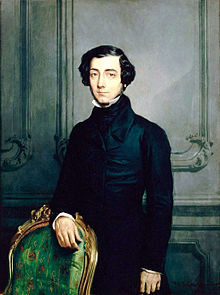 Whatever logical flaws might be a part of the ideological framework, the Protestant work ethic became firmly ingrained in our culture. The 19th century political thinker and sociologist Alexis de Tocqueville observed in his book Democracy in America: “I think I can see the whole destiny of America contained in the first Puritan who landed on those shores.” The austere English Protestants who were among the early 17th century settlers in what became the United States brought with them a dedication to hard work, frugal ways and strong moral limits. Those same people were the founders of the church that we have inherited. And their ideas have, in ways both subtle and obvious, influenced how we think about work.
Whatever logical flaws might be a part of the ideological framework, the Protestant work ethic became firmly ingrained in our culture. The 19th century political thinker and sociologist Alexis de Tocqueville observed in his book Democracy in America: “I think I can see the whole destiny of America contained in the first Puritan who landed on those shores.” The austere English Protestants who were among the early 17th century settlers in what became the United States brought with them a dedication to hard work, frugal ways and strong moral limits. Those same people were the founders of the church that we have inherited. And their ideas have, in ways both subtle and obvious, influenced how we think about work.
I confess that I can be quick to judge others who appear to be less dedicated to work than I. The concept of hard work is deeply ingrained in my sense of what it means to be a human being. As much as I can intellectually embrace the concept that we do not “earn” our salvation through our hard work, I have a sense that hard work is an essential element of a moral life. This reflects a world-view that is shared by other Americans, according to a study by Eric Uhlmann published last year in the Journal of Experimental Social Psychology. In the study, American and Canadian college students were asked to solve word puzzles involving anagrams. But first, some were exposed to salvation-related words like “heaven” and “redeem,” while others were exposed to neutral words. The researchers found that the Americans – but not the Canadians – solved more anagrams with salvation on their minds. They worked harder.
 It is pretty hard to avoid thoughts about religion, salvation, and other religious notions in my workplace. It seems that we always have some thoughts of a bigger picture ingrained in what we do. And we work hard. The people who are employed by our church all put in extra unpaid hours. It just happens. We come to the end of a workday and then continue to talk about work for another half hour after we might normally have gone home. We make a few phone calls and send some e-mails from home. We come in early and stay late day after day. We don’t do this because of some external pressure. It is just the way that we approach the work that we do. We care. We want the church to succeed. We want to serve the people.
It is pretty hard to avoid thoughts about religion, salvation, and other religious notions in my workplace. It seems that we always have some thoughts of a bigger picture ingrained in what we do. And we work hard. The people who are employed by our church all put in extra unpaid hours. It just happens. We come to the end of a workday and then continue to talk about work for another half hour after we might normally have gone home. We make a few phone calls and send some e-mails from home. We come in early and stay late day after day. We don’t do this because of some external pressure. It is just the way that we approach the work that we do. We care. We want the church to succeed. We want to serve the people.
I don’t think any of us would be so crass as to say that we believe that all of this extra work will somehow give us an easier path to salvation than other people. We don’t do what we do in order to gain some kind of personal preference in life after death. We work harder, in part, because there are lots of short-term rewards for hard work. When the church succeeds, we succeed. When people praise us for what we have done, we feel good. I am proud of the work that our leadership team does every day.
But there is another side to those positive feelings. Sociologists of religion have long noted that we Protestants are harsher in our judgments of others. As long ago as the ‘70’s studies were published that found that American who score high on the Protestant Ethic Scale of self-reliance and self-discipline also show marked prejudice against racial minorities and the poor, hostility toward social welfare efforts, and self-denigration for traits such as obesity and laziness.
We may live many generations after the Pilgrims and Puritans landed at Plymouth Rock, but we still have that Puritan ethic deeply engrained in our psyches. It seems that de Tocqueville got us right. The Puritans still are influencing our destinies.
About twenty of us will be gathering for breakfast at the church this morning and we will work through the morning to lay the foundation for this fall’s budget planning and programs. We are convinced that we can continue to strengthen our processes and improve our congregation. It is hard work to listen carefully and to create a budget that reflects not only our own personal desires and priorities, but reflects that wishes and priorities of the wider church. We know from experience that a successful budget is based on doing the will of the members of the church. This hard work is valuable and important.
Still, there will be a few comments about the people who are not at the retreat. Despite our best efforts, we remain too quick to judge others. The hard work and the sense of moral superiority seem to go hand in hand. So we need to be careful. Those who participate in the retreat are not somehow better than those who are not present. The work itself is the gift and the reward and it is freely offered to all of the church’s leaders. We have inherited positive and negative traits from our forebears.
Maybe, if we work hard enough, we can overcome our negative tendencies.
More likely, if we succeed, it will be because of the grace of God and not because of the amount of work we do.


I confess that I can be quick to judge others who appear to be less dedicated to work than I. The concept of hard work is deeply ingrained in my sense of what it means to be a human being. As much as I can intellectually embrace the concept that we do not “earn” our salvation through our hard work, I have a sense that hard work is an essential element of a moral life. This reflects a world-view that is shared by other Americans, according to a study by Eric Uhlmann published last year in the Journal of Experimental Social Psychology. In the study, American and Canadian college students were asked to solve word puzzles involving anagrams. But first, some were exposed to salvation-related words like “heaven” and “redeem,” while others were exposed to neutral words. The researchers found that the Americans – but not the Canadians – solved more anagrams with salvation on their minds. They worked harder.

I don’t think any of us would be so crass as to say that we believe that all of this extra work will somehow give us an easier path to salvation than other people. We don’t do what we do in order to gain some kind of personal preference in life after death. We work harder, in part, because there are lots of short-term rewards for hard work. When the church succeeds, we succeed. When people praise us for what we have done, we feel good. I am proud of the work that our leadership team does every day.
But there is another side to those positive feelings. Sociologists of religion have long noted that we Protestants are harsher in our judgments of others. As long ago as the ‘70’s studies were published that found that American who score high on the Protestant Ethic Scale of self-reliance and self-discipline also show marked prejudice against racial minorities and the poor, hostility toward social welfare efforts, and self-denigration for traits such as obesity and laziness.
We may live many generations after the Pilgrims and Puritans landed at Plymouth Rock, but we still have that Puritan ethic deeply engrained in our psyches. It seems that de Tocqueville got us right. The Puritans still are influencing our destinies.
About twenty of us will be gathering for breakfast at the church this morning and we will work through the morning to lay the foundation for this fall’s budget planning and programs. We are convinced that we can continue to strengthen our processes and improve our congregation. It is hard work to listen carefully and to create a budget that reflects not only our own personal desires and priorities, but reflects that wishes and priorities of the wider church. We know from experience that a successful budget is based on doing the will of the members of the church. This hard work is valuable and important.
Still, there will be a few comments about the people who are not at the retreat. Despite our best efforts, we remain too quick to judge others. The hard work and the sense of moral superiority seem to go hand in hand. So we need to be careful. Those who participate in the retreat are not somehow better than those who are not present. The work itself is the gift and the reward and it is freely offered to all of the church’s leaders. We have inherited positive and negative traits from our forebears.
Maybe, if we work hard enough, we can overcome our negative tendencies.
More likely, if we succeed, it will be because of the grace of God and not because of the amount of work we do.
Copyright © 2012 by Ted Huffman. I wrote this. If you want to copy it, please ask for permission. There is a contact me button at the bottom of this page. If you want to share my blog a friend, please direct your friend to my web site.
Work
03/08/12 05:37
It is a simple fact that the human body is meant for work. We are actually very good at walking, lifting, carrying, pushing and pulling. In times when most humans were engaged in hunter-gatherer lifestyles, we could cover significant distances at reasonable speeds by running.. Add a simple machine such as a bicycle or a row boat and we can cover great distances.
In many ways the Olympic Games celebrate the capacity of the human body to do work. Of course there is great fun in sport. We derive pleasure from being able to run faster or throw an object farther than someone else. We are naturally competitive. We like to compare. We remain interested in the games for a lot of different reasons. It is an opportunity to display a bit of national pride. It is an opportunity to watch someone do something of which we are not capable. It is an invitation to marvel at the incredible power and grace of which humans are capable. And it is a celebration of the power of work. Hard work and determination can carry a person far indeed.
 We have taken great delight in Gabby Douglas winning the women’s all-around gold medal. This spunky and determined teen has demonstrated courage and commitment for many years. It took tremendous courage for her to move away from home at age 14 to train with a world-class coach. It took non-stop work for her to move from being a better-than-average gymnast into an Olympic champion in less than two years. She is simply amazing!
We have taken great delight in Gabby Douglas winning the women’s all-around gold medal. This spunky and determined teen has demonstrated courage and commitment for many years. It took tremendous courage for her to move away from home at age 14 to train with a world-class coach. It took non-stop work for her to move from being a better-than-average gymnast into an Olympic champion in less than two years. She is simply amazing!
Humans are, of course, capable of great feats of thinking as well. It is not just the capacity of our bodies for work that enables us to live and thrive. We have survived as a species in part because of the abilities of our minds. We can anticipate the future. We can envision solutions to problems. We have developed systems of language and communication that enable us to be relatively efficient at passing wisdom and knowledge from one generation to the next. There are many games in the Olympics that celebrate the powers of thinking. Strategy is critical to many of the games. Any athlete will tell you about the mental discipline that is as significant a challenge as the physical demands of sport.
There are rare moments when we witness a balance of thinking and acting – of mind and body. It is amazing and wonderful. But for many of us, we spend much of our lives a bit out of balance. In the normal routine of my days, I spend a bit too much time sitting and thinking. I enjoy difficult mental challenges. I like to solve problems. I delight in working with other people and learning to listen and respond appropriately to them. My work is rich and meaningful.
But too often I get caught up in my sedentary ways. I sit and read. I sit and work at the computer. I sit and visit with people. I sit and study the scriptures. I sit and sit and sit and sit.
And I sill live in a body that was meant for standing and stretching and walking and running. I try to balance some of that with disciplined exercise. I row and paddle and bike and walk on purpose to help keep my body in shape for the endurance that this life requires. It is true, however, that I am somehow more faithful in my academic and spiritual disciplines than I am in my physical disciplines. When I am tired, I can let exercise slip. When I am busy, I find it harder to justify taking time to go rowing or walking.
Like many lessons in life, the lesson of physical work is one that I have to learn over and over again it seems.
I haven’t been sleeping well in the past couple of weeks. There is nothing particularly unusual about this. I haven’t been a good sleeper for decades. When I was a college student, I used to wake in the night with my mind working on my studies. One of the great treats of having a private room in my sophomore and junior years was being able to get up, turn on a light and open a book at any moment that I wanted. I often would go to bed early, wake for a hour or more of work in the middle of the night and then return to bed for a second phase of sleep. So I usually don’t think much of the fact that I can’t sleep. I just chalk it up to my interest in life. There are lots of things to do. Sleep can wait for a time when I am not so busy.
I did observe, however, that I was having no trouble sleeping when I was on vacation recently. So I thought, “there must be a little stress involved.” I am working hard to keep a lot of things going at the church. There are the normal conflicts that inhabit human institutions, especially those that welcome all kinds of personalities and strive for diversity. But there is nothing exceptional about the amount of stress at work.
Last evening, after supper, I went back to the church in my work clothes and cut down a tree that was dying. It is a simple chore. There are plenty of others in the church who could have done the work, but it is an ornamental crab tree and I like to have some apple wood on hand for smoking and grilling food. A tree like this one will provide several years worth of chunks of apple wood for my use and for sharing with others. So I volunteered to cut down the tree. The tree was small and the job pretty simple. But there were lots of branches, so it took some time to cut off branches, load all of them into the trailer, rake up the leaves and other things left on the ground, tarp and tie down my load and head for home. When I got home, I worked until dark feeding branches into a chipper to make mulch for flowerbeds and the garden. When it was dark, I came in, had a couple of glasses of water, cleaned up, read for a while and went to bed.
I slept, as they say, like a baby. The next moment of consciousness was when my morning alarm sounded.
It is a simple truth – work makes me sleep better. Physical labor is a better way for me to spend an evening after a day at the office than any of my more sedentary hobbies. You’d think that a person my age would have learned that lesson years ago.
So I didn’t watch the Olympics last night. Perhaps the best value of the games is not their power to entertain, but their power to inspire.
In closing, here is a link to a story that inspires me. It seems I am not too old for good physical activity:
http://www.news.com.au/weird-true-freaky/this-90-year-old-pole-vaulter-is-our-hero/story-e6frflri-1226442404042
In many ways the Olympic Games celebrate the capacity of the human body to do work. Of course there is great fun in sport. We derive pleasure from being able to run faster or throw an object farther than someone else. We are naturally competitive. We like to compare. We remain interested in the games for a lot of different reasons. It is an opportunity to display a bit of national pride. It is an opportunity to watch someone do something of which we are not capable. It is an invitation to marvel at the incredible power and grace of which humans are capable. And it is a celebration of the power of work. Hard work and determination can carry a person far indeed.
 We have taken great delight in Gabby Douglas winning the women’s all-around gold medal. This spunky and determined teen has demonstrated courage and commitment for many years. It took tremendous courage for her to move away from home at age 14 to train with a world-class coach. It took non-stop work for her to move from being a better-than-average gymnast into an Olympic champion in less than two years. She is simply amazing!
We have taken great delight in Gabby Douglas winning the women’s all-around gold medal. This spunky and determined teen has demonstrated courage and commitment for many years. It took tremendous courage for her to move away from home at age 14 to train with a world-class coach. It took non-stop work for her to move from being a better-than-average gymnast into an Olympic champion in less than two years. She is simply amazing!Humans are, of course, capable of great feats of thinking as well. It is not just the capacity of our bodies for work that enables us to live and thrive. We have survived as a species in part because of the abilities of our minds. We can anticipate the future. We can envision solutions to problems. We have developed systems of language and communication that enable us to be relatively efficient at passing wisdom and knowledge from one generation to the next. There are many games in the Olympics that celebrate the powers of thinking. Strategy is critical to many of the games. Any athlete will tell you about the mental discipline that is as significant a challenge as the physical demands of sport.
There are rare moments when we witness a balance of thinking and acting – of mind and body. It is amazing and wonderful. But for many of us, we spend much of our lives a bit out of balance. In the normal routine of my days, I spend a bit too much time sitting and thinking. I enjoy difficult mental challenges. I like to solve problems. I delight in working with other people and learning to listen and respond appropriately to them. My work is rich and meaningful.
But too often I get caught up in my sedentary ways. I sit and read. I sit and work at the computer. I sit and visit with people. I sit and study the scriptures. I sit and sit and sit and sit.
And I sill live in a body that was meant for standing and stretching and walking and running. I try to balance some of that with disciplined exercise. I row and paddle and bike and walk on purpose to help keep my body in shape for the endurance that this life requires. It is true, however, that I am somehow more faithful in my academic and spiritual disciplines than I am in my physical disciplines. When I am tired, I can let exercise slip. When I am busy, I find it harder to justify taking time to go rowing or walking.
Like many lessons in life, the lesson of physical work is one that I have to learn over and over again it seems.
I haven’t been sleeping well in the past couple of weeks. There is nothing particularly unusual about this. I haven’t been a good sleeper for decades. When I was a college student, I used to wake in the night with my mind working on my studies. One of the great treats of having a private room in my sophomore and junior years was being able to get up, turn on a light and open a book at any moment that I wanted. I often would go to bed early, wake for a hour or more of work in the middle of the night and then return to bed for a second phase of sleep. So I usually don’t think much of the fact that I can’t sleep. I just chalk it up to my interest in life. There are lots of things to do. Sleep can wait for a time when I am not so busy.
I did observe, however, that I was having no trouble sleeping when I was on vacation recently. So I thought, “there must be a little stress involved.” I am working hard to keep a lot of things going at the church. There are the normal conflicts that inhabit human institutions, especially those that welcome all kinds of personalities and strive for diversity. But there is nothing exceptional about the amount of stress at work.
Last evening, after supper, I went back to the church in my work clothes and cut down a tree that was dying. It is a simple chore. There are plenty of others in the church who could have done the work, but it is an ornamental crab tree and I like to have some apple wood on hand for smoking and grilling food. A tree like this one will provide several years worth of chunks of apple wood for my use and for sharing with others. So I volunteered to cut down the tree. The tree was small and the job pretty simple. But there were lots of branches, so it took some time to cut off branches, load all of them into the trailer, rake up the leaves and other things left on the ground, tarp and tie down my load and head for home. When I got home, I worked until dark feeding branches into a chipper to make mulch for flowerbeds and the garden. When it was dark, I came in, had a couple of glasses of water, cleaned up, read for a while and went to bed.
I slept, as they say, like a baby. The next moment of consciousness was when my morning alarm sounded.
It is a simple truth – work makes me sleep better. Physical labor is a better way for me to spend an evening after a day at the office than any of my more sedentary hobbies. You’d think that a person my age would have learned that lesson years ago.
So I didn’t watch the Olympics last night. Perhaps the best value of the games is not their power to entertain, but their power to inspire.
In closing, here is a link to a story that inspires me. It seems I am not too old for good physical activity:
http://www.news.com.au/weird-true-freaky/this-90-year-old-pole-vaulter-is-our-hero/story-e6frflri-1226442404042
Copyright © 2012 by Ted Huffman. I wrote this. If you want to copy it, please ask for permission. There is a contact me button at the bottom of this page. If you want to share my blog a friend, please direct your friend to my web site.
Serious Money
02/08/12 04:01
We have hired an engineering firm to help us put together proposals for some major building projects at the church. There are some deferred maintenance projects, some normal wear and tear, and the need to make upgrades to decrease our energy consumption. Our building is 53 years old and although it is well-maintained, it will require some major investments to keep it viable in the coming decades.
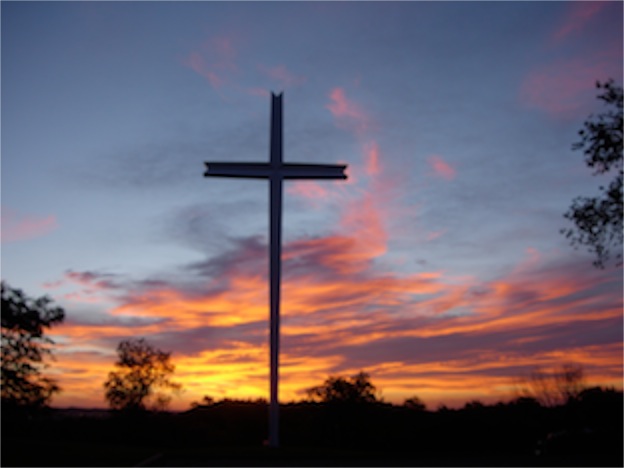 It would be silly for me to speculate about the amount of money that is going to be required. Before we see the numbers, any figures that I might offer would be pure speculation. I am confident, however, that the numbers are going to be big. We will have to engage a process of evaluating our priorities and clarifying our values as we put together a plan that fits the needs and abilities of our congregation. There are items on our current wish list that will have to be deferred. A church isn’t different from a family or any other group of people. We do not have infinite funds. We can’t spend without careful thought about the source of our funds. The process of clarifying what is most important is a healthy endeavor for a congregation. I’m looking forward to that process.
It would be silly for me to speculate about the amount of money that is going to be required. Before we see the numbers, any figures that I might offer would be pure speculation. I am confident, however, that the numbers are going to be big. We will have to engage a process of evaluating our priorities and clarifying our values as we put together a plan that fits the needs and abilities of our congregation. There are items on our current wish list that will have to be deferred. A church isn’t different from a family or any other group of people. We do not have infinite funds. We can’t spend without careful thought about the source of our funds. The process of clarifying what is most important is a healthy endeavor for a congregation. I’m looking forward to that process.
I’ve walked through capital fund raising with congregations before. I have a rough sense of how the process works. I even have some numbers in my mind as to what might be possible for our church. I’m not the most astute financial manager, but I’ve been working with church finances long enough to have a pretty good sense of what will work.
As such, I deal with small numbers when compared to other arenas. Our church budget hovers in the $300,000 per year range. A capital funds project might near a million dollars, but my experience doesn’t go into the millions. I am not a big numbers kind of person.
 In contrast to our congregation and my experience, there are people in our community who deal with much bigger numbers. The proposed Presidents Plaza project, planned for ground breaking in 2013 is estimated to cost between $41 million and $48 million. The totals are staggering from my perspective. Totals aside, the fact that the variation in estimates is $7 million is pretty impressive.
In contrast to our congregation and my experience, there are people in our community who deal with much bigger numbers. The proposed Presidents Plaza project, planned for ground breaking in 2013 is estimated to cost between $41 million and $48 million. The totals are staggering from my perspective. Totals aside, the fact that the variation in estimates is $7 million is pretty impressive.
 On July 9, Civic center officials proposed a $125 million to $150 million expansion of that facility including a 15,000 to 20,000-seat arena, two elevated parking garages and reworking of some of the existing space. Even for a growing city, when you start talking about hundreds of millions of dollars, you are talking about really big numbers. The range between the highest and lowest estimates is more than the total of the most recent expansion of the Civic Center which included a hockey arena.
On July 9, Civic center officials proposed a $125 million to $150 million expansion of that facility including a 15,000 to 20,000-seat arena, two elevated parking garages and reworking of some of the existing space. Even for a growing city, when you start talking about hundreds of millions of dollars, you are talking about really big numbers. The range between the highest and lowest estimates is more than the total of the most recent expansion of the Civic Center which included a hockey arena.
For the city to engage in such projects requires people who are comfortable and have experience in dealing with much bigger numbers than my limited experience. I’m happy to be nervous about a comparatively small capital funds proposal that will arise in our congregation. The numbers of that proposal still have plenty of capability to impress me.
Truth be told, the price of a used car is enough to get my attention.
Those numbers, however, pale in comparison with what our country is spending on politics. The estimated price tag for the November general election in the United States is $6 billion.
Quite frankly, I don’t think that anyone who is involved in spending that much money can be honestly called “conservative.”
Keep in mind that while the economy is not growing and jobs are scarce and nearly one in five American households lacks the security of health insurance, election spending is projected to be a whopping 7% over the already inflated 2008 numbers.
To put that in perspective, our country will spend more on this election than the annual GDP of Malawi. US election spending is 120 times as much as election spending in the United Kingdom. 23 times as much per person is spent on elections here compared to those in England. It seems we are still paying a high price for our independence.
Again, I’m no expert in numbers when they get that big. Michael Franz, co-director of the Wesleyan Media Project said, “You could say that we’ve gotten into a crazy world, where the cost of elections has sky-rocketed, and that we are in a wacko world of crazy spending, but it all depends on what apples and oranges you want to compare.” He says U.S. elections are “relatively cheap” when compared with spending on, for example, the U.S. military operation in Afghanistan.
 Michael Toner, former chair of the U.S. Federal Elections Commission, points out that we will spend less on elections this year than the $7 billion Americans spend each year on potato chips. Even though I am awed and perplexed by the incredible costs, I do have to to say that I think that elections are worth more than potato chips.
Michael Toner, former chair of the U.S. Federal Elections Commission, points out that we will spend less on elections this year than the $7 billion Americans spend each year on potato chips. Even though I am awed and perplexed by the incredible costs, I do have to to say that I think that elections are worth more than potato chips.
The problem, of course, is the source of the money.
In our small church, if we tackle a capital funds project that is too large for us, there is little danger that we would fail to somehow raise the money. The real danger is that raising too much money would distract us from the core of our ministry. A senior pastor needs to be visiting people, conducting funerals and weddings, preparing for worship, studying and serving the community. Every hour invested in raising money detracts from the work to which our congregation is called.
 The same is true of Senators, Representatives and our President. The fact that political fund-raising is now a 24/7/365 operation in Washington, D.C. detracts from the work to which we elected these people. Too much time spent raising money detracts from public service and creates entanglements that are not good for representative democracy. In a small population state like South Dakota, our federal representatives are so beholden to out-of-state interests before they are elected, that the voices of their constituents are tiny in comparison to the voices of their funders.
The same is true of Senators, Representatives and our President. The fact that political fund-raising is now a 24/7/365 operation in Washington, D.C. detracts from the work to which we elected these people. Too much time spent raising money detracts from public service and creates entanglements that are not good for representative democracy. In a small population state like South Dakota, our federal representatives are so beholden to out-of-state interests before they are elected, that the voices of their constituents are tiny in comparison to the voices of their funders.
Therefore, I am officially announcing that I have no intention of running for office. I will not be a candidate. I’m going to stay in our small congregation and participate with the other members in trying to make responsible decisions with a relatively small amount of money.
I’m just not a good enough fundraiser to pursue a career in politics.

I’ve walked through capital fund raising with congregations before. I have a rough sense of how the process works. I even have some numbers in my mind as to what might be possible for our church. I’m not the most astute financial manager, but I’ve been working with church finances long enough to have a pretty good sense of what will work.
As such, I deal with small numbers when compared to other arenas. Our church budget hovers in the $300,000 per year range. A capital funds project might near a million dollars, but my experience doesn’t go into the millions. I am not a big numbers kind of person.


For the city to engage in such projects requires people who are comfortable and have experience in dealing with much bigger numbers than my limited experience. I’m happy to be nervous about a comparatively small capital funds proposal that will arise in our congregation. The numbers of that proposal still have plenty of capability to impress me.
Truth be told, the price of a used car is enough to get my attention.
Those numbers, however, pale in comparison with what our country is spending on politics. The estimated price tag for the November general election in the United States is $6 billion.
Quite frankly, I don’t think that anyone who is involved in spending that much money can be honestly called “conservative.”
Keep in mind that while the economy is not growing and jobs are scarce and nearly one in five American households lacks the security of health insurance, election spending is projected to be a whopping 7% over the already inflated 2008 numbers.
To put that in perspective, our country will spend more on this election than the annual GDP of Malawi. US election spending is 120 times as much as election spending in the United Kingdom. 23 times as much per person is spent on elections here compared to those in England. It seems we are still paying a high price for our independence.
Again, I’m no expert in numbers when they get that big. Michael Franz, co-director of the Wesleyan Media Project said, “You could say that we’ve gotten into a crazy world, where the cost of elections has sky-rocketed, and that we are in a wacko world of crazy spending, but it all depends on what apples and oranges you want to compare.” He says U.S. elections are “relatively cheap” when compared with spending on, for example, the U.S. military operation in Afghanistan.

The problem, of course, is the source of the money.
In our small church, if we tackle a capital funds project that is too large for us, there is little danger that we would fail to somehow raise the money. The real danger is that raising too much money would distract us from the core of our ministry. A senior pastor needs to be visiting people, conducting funerals and weddings, preparing for worship, studying and serving the community. Every hour invested in raising money detracts from the work to which our congregation is called.

Therefore, I am officially announcing that I have no intention of running for office. I will not be a candidate. I’m going to stay in our small congregation and participate with the other members in trying to make responsible decisions with a relatively small amount of money.
I’m just not a good enough fundraiser to pursue a career in politics.
Copyright © 2012 by Ted Huffman. I wrote this. If you want to copy it, please ask for permission. There is a contact me button at the bottom of this page. If you want to share my blog a friend, please direct your friend to my web site.
Speaking the Truth
01/08/12 05:18
There is a challenge for every person who speaks in public. The challenge is to say something of substance in such a way that it can be heard. If you bore people or make them angry, they will stop listening. If you fail to tell the truth, you have squandered the opportunity of communication. If you talk only of the trivial and keep it simple, you risk not having said anything of substance. If you try to present an idea in its full complexity, you may communicate only part of the picture.
I am being especially aware of this in the news coverage of the current campaign for the presidency. It seems that the papers, Internet and television are focused on just a few words. They love to find some place where a candidate has misspoken. The term they love to use this year is “gaff.” If they can find a gaff in the words of a candidate, they will report that instead of the substance of what was said.
 Since I began my day by reading the news of the death of Gore Vidal, it seems appropriate to quote him on the subject:
Since I began my day by reading the news of the death of Gore Vidal, it seems appropriate to quote him on the subject:
“In America, if you want a successful career in politics, there is one subject you must never mention, and that is politics. If you talk about standing tall, and it’s morning in America, and you press the good-news buttons, you’re fine. If you talk about budgets, tax reform, bigotry, and so on, you are in trouble. So if we aren’t going to talk issues, what can we talk about? Well, the sex lives of the candidates, because that is about the most meaningless thing that you can talk about.”
For a preacher – and for many others – the problem is that the truth is not always on the surface. Telling the truth is difficult. Elie Wiesel is said to have once been confronted by a Rabbi over the fact that he wrote novels about the Holocaust. Wiesel responded, “Sometimes in order to tell the truth, you have to tell a story.”
Jesus spoke in parables. He told stories in order to tell the truth. The parable of the Good Samaritan isn’t about whether or not the incident actually occurred – it is about how a neighbor behaves toward others.
I think we are called to speak the deeper truths – the truths that are not always on the surface.
Margery Williams got it right in The Velveteen Rabbit:
 “What is REAL?" asked the Velveteen Rabbit one day... "Does it mean having things that buzz inside you and a stick-out handle?"
“What is REAL?" asked the Velveteen Rabbit one day... "Does it mean having things that buzz inside you and a stick-out handle?"
"Real isn't how you are made," said the Skin Horse. "It's a thing that happens to you. When [someone] loves you for a long, long time, not just to play with, but REALLY loves you, then you become Real."
"Does it hurt?" asked the Rabbit.
"Sometimes," said the Skin Horse, for he was always truthful. "When you are Real you don't mind being hurt."
"Does it happen all at once, like being wound up," he asked, "or bit by bit?"
"It doesn't happen all at once," said the Skin Horse. "You become. It takes a long time. That's why it doesn't often happen to people who break easily, or have sharp edges, or who have to be carefully kept.
"Generally, by the time you are Real, most of your hair has been loved off, and your eyes drop out and you get loose in the joints and very shabby. But these things don't matter at all, because once you are Real you can't be ugly, except to people who don't understand... once you are Real you can't become unreal again. It lasts for always.”
I aspire to talk about what is real for the people that I serve. And sometimes what is real can hurt. But I am also called to be compassionate to those people. It is not in anyone’s best interests for pain to be doled out for the sake of pain. If I am going to use words that have the potential to hurt, I must choose them very carefully. Only when the words equally carry the power to heal are they the right words to speak.
Ephesians 4:15 invites people of faith to “speak the truth in love.” The passage refers to the process of becoming mature in faith. It understands that it takes practice to live one’s faith in the midst of a complex world.
Throughout my career, I have been surprised at how often I have been called to intervene in situations where my instinct is to be silent or to walk away. Sometimes people of faith can be amazingly cruel to each other. Sometimes good church people need a moment of correction. I usually wonder, “Who am I to speak to this person?” My preferred course of action is often silence. I’m likely to get silent when I am angry or have my feelings hurt. Indeed silence is often the best course of action. In the range of choices between silence and speaking, silence is often the better part.
But there are times when we are not called to be silent. Moses found this out at the burning bush. Jeremiah found it out in a conversation with God. Isaiah was confronted with a vision of burning coals. God calls people not only to the silence and listening of prayer, but also to speak courageous and prophetic words.
When I speak I want to tell the truth – even the truth that lies deep below the surface.
When I was a young preacher, I thought that preparing and delivering sermons would become easier as I gained experience. Indeed some aspects of the process have become easier. But some parts of the process are more difficult. Churches can become set in their ways and fail to open themselves to change. People can hurt others’ feelings without knowing what they are doing. In the joy of fellowship there can be the failure of hospitality. I am called to address these very real parts of our lives together.
So I continue to hone this craft of speaking. I don’t have it completely right yet. There is much for me to learn. One thing I do know: when my words make the congregation squirm – they have already made me squirm. It isn’t easy to find the right words.
So, from time to time, I re-read familiar old stories as well as the new ones. As I look in the mirror and notice the receding hairline, I am reminded of what the Skin Horse said to the Velveteen Rabbit: "Generally, by the time you are Real, most of your hair has been loved off.”
Maybe I’m not supposed to have as much hair as I once did.
I am being especially aware of this in the news coverage of the current campaign for the presidency. It seems that the papers, Internet and television are focused on just a few words. They love to find some place where a candidate has misspoken. The term they love to use this year is “gaff.” If they can find a gaff in the words of a candidate, they will report that instead of the substance of what was said.

“In America, if you want a successful career in politics, there is one subject you must never mention, and that is politics. If you talk about standing tall, and it’s morning in America, and you press the good-news buttons, you’re fine. If you talk about budgets, tax reform, bigotry, and so on, you are in trouble. So if we aren’t going to talk issues, what can we talk about? Well, the sex lives of the candidates, because that is about the most meaningless thing that you can talk about.”
For a preacher – and for many others – the problem is that the truth is not always on the surface. Telling the truth is difficult. Elie Wiesel is said to have once been confronted by a Rabbi over the fact that he wrote novels about the Holocaust. Wiesel responded, “Sometimes in order to tell the truth, you have to tell a story.”
Jesus spoke in parables. He told stories in order to tell the truth. The parable of the Good Samaritan isn’t about whether or not the incident actually occurred – it is about how a neighbor behaves toward others.
I think we are called to speak the deeper truths – the truths that are not always on the surface.
Margery Williams got it right in The Velveteen Rabbit:

"Real isn't how you are made," said the Skin Horse. "It's a thing that happens to you. When [someone] loves you for a long, long time, not just to play with, but REALLY loves you, then you become Real."
"Does it hurt?" asked the Rabbit.
"Sometimes," said the Skin Horse, for he was always truthful. "When you are Real you don't mind being hurt."
"Does it happen all at once, like being wound up," he asked, "or bit by bit?"
"It doesn't happen all at once," said the Skin Horse. "You become. It takes a long time. That's why it doesn't often happen to people who break easily, or have sharp edges, or who have to be carefully kept.
"Generally, by the time you are Real, most of your hair has been loved off, and your eyes drop out and you get loose in the joints and very shabby. But these things don't matter at all, because once you are Real you can't be ugly, except to people who don't understand... once you are Real you can't become unreal again. It lasts for always.”
I aspire to talk about what is real for the people that I serve. And sometimes what is real can hurt. But I am also called to be compassionate to those people. It is not in anyone’s best interests for pain to be doled out for the sake of pain. If I am going to use words that have the potential to hurt, I must choose them very carefully. Only when the words equally carry the power to heal are they the right words to speak.
Ephesians 4:15 invites people of faith to “speak the truth in love.” The passage refers to the process of becoming mature in faith. It understands that it takes practice to live one’s faith in the midst of a complex world.
Throughout my career, I have been surprised at how often I have been called to intervene in situations where my instinct is to be silent or to walk away. Sometimes people of faith can be amazingly cruel to each other. Sometimes good church people need a moment of correction. I usually wonder, “Who am I to speak to this person?” My preferred course of action is often silence. I’m likely to get silent when I am angry or have my feelings hurt. Indeed silence is often the best course of action. In the range of choices between silence and speaking, silence is often the better part.
But there are times when we are not called to be silent. Moses found this out at the burning bush. Jeremiah found it out in a conversation with God. Isaiah was confronted with a vision of burning coals. God calls people not only to the silence and listening of prayer, but also to speak courageous and prophetic words.
When I speak I want to tell the truth – even the truth that lies deep below the surface.
When I was a young preacher, I thought that preparing and delivering sermons would become easier as I gained experience. Indeed some aspects of the process have become easier. But some parts of the process are more difficult. Churches can become set in their ways and fail to open themselves to change. People can hurt others’ feelings without knowing what they are doing. In the joy of fellowship there can be the failure of hospitality. I am called to address these very real parts of our lives together.
So I continue to hone this craft of speaking. I don’t have it completely right yet. There is much for me to learn. One thing I do know: when my words make the congregation squirm – they have already made me squirm. It isn’t easy to find the right words.
So, from time to time, I re-read familiar old stories as well as the new ones. As I look in the mirror and notice the receding hairline, I am reminded of what the Skin Horse said to the Velveteen Rabbit: "Generally, by the time you are Real, most of your hair has been loved off.”
Maybe I’m not supposed to have as much hair as I once did.